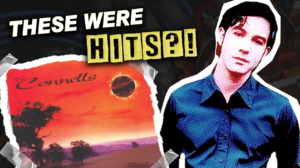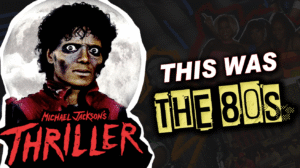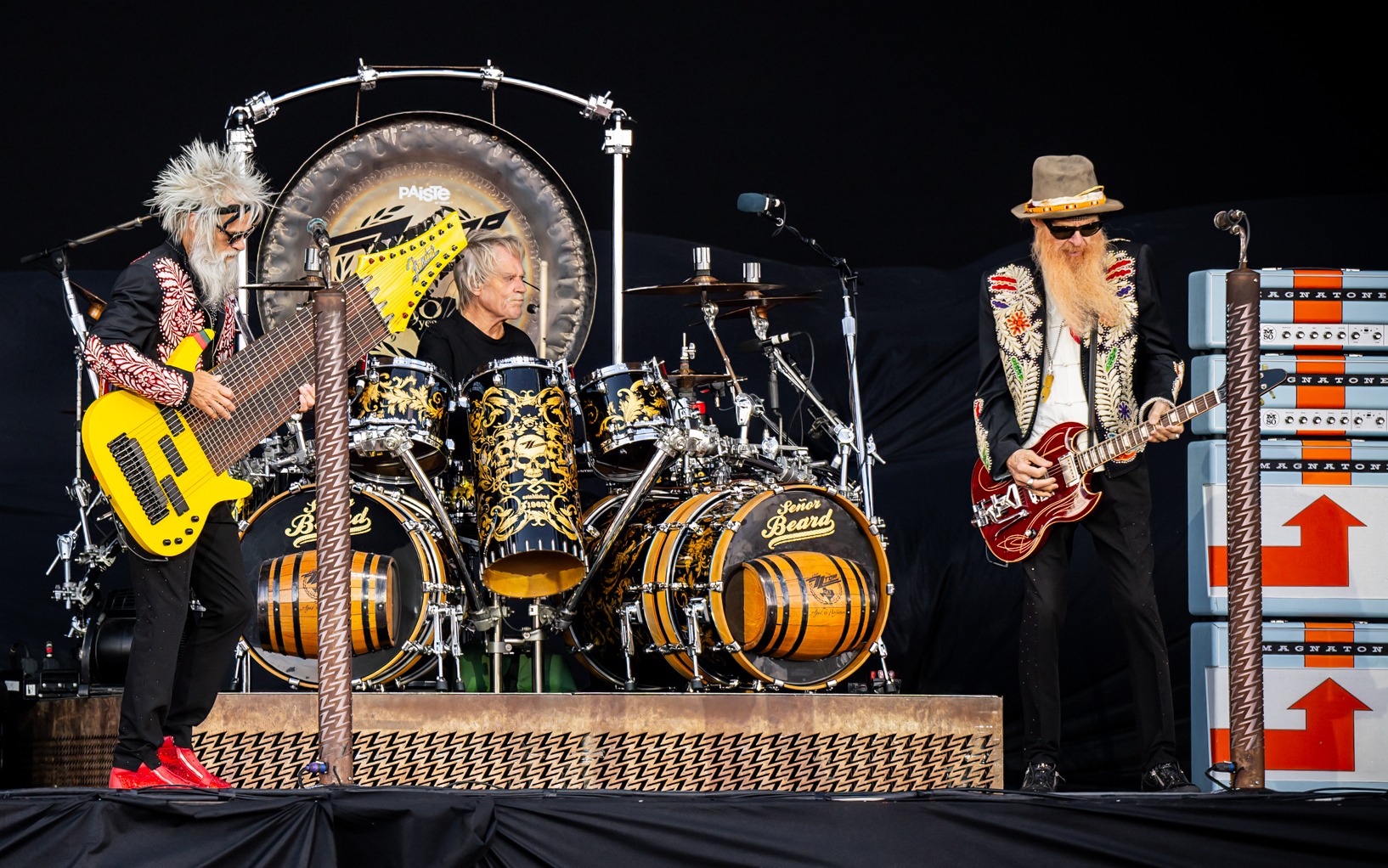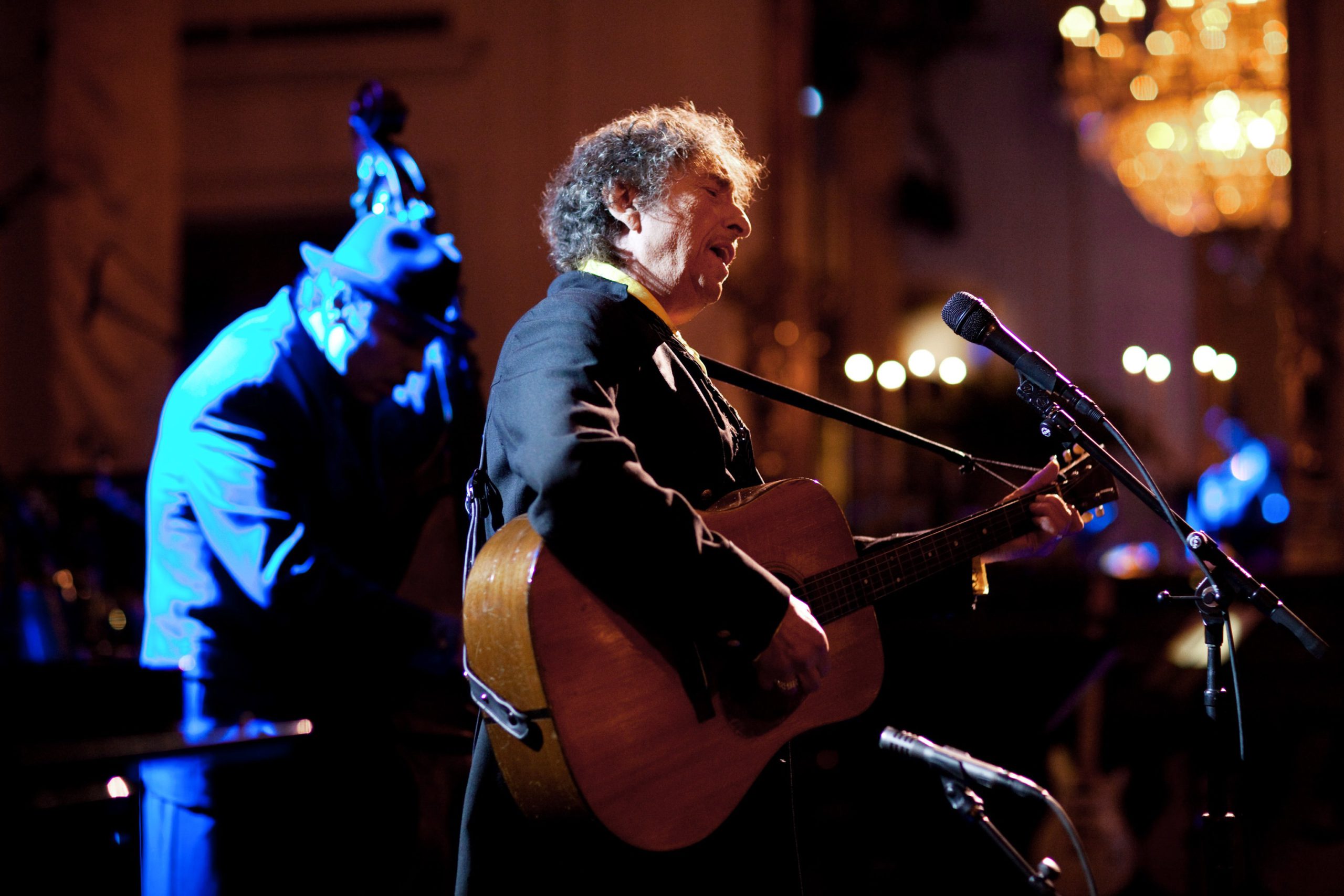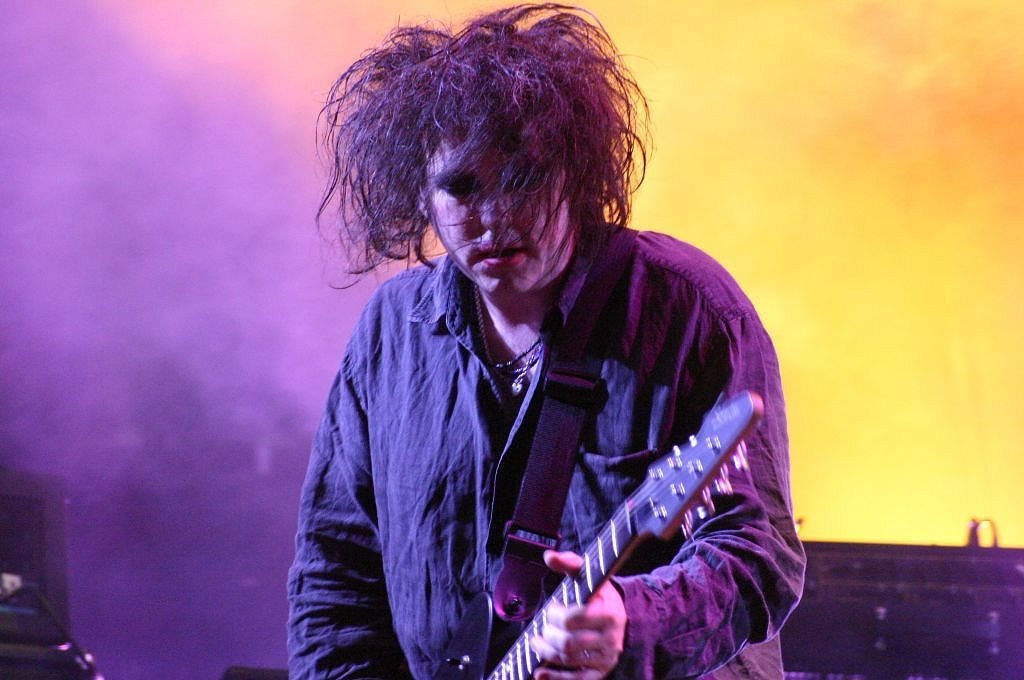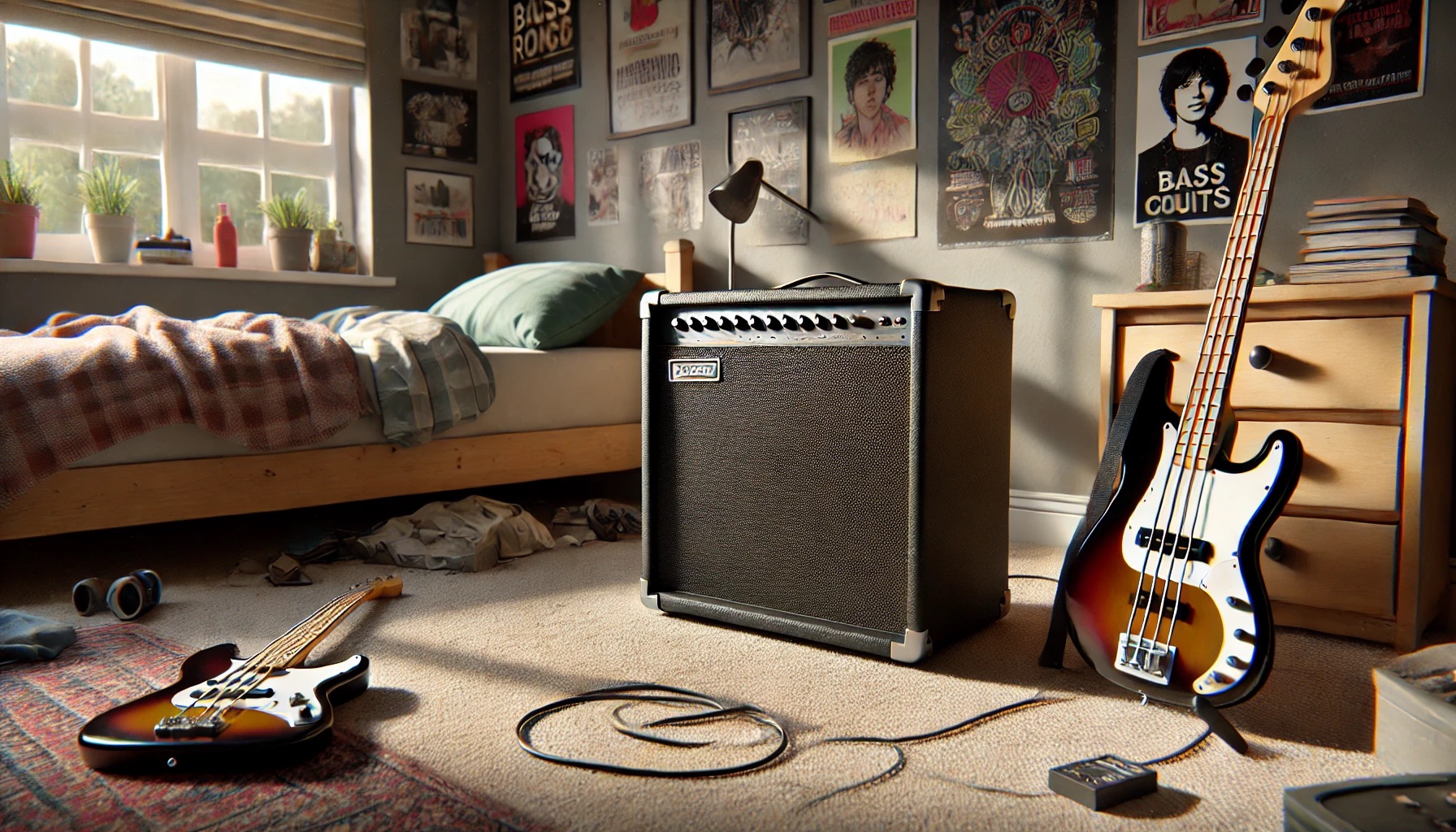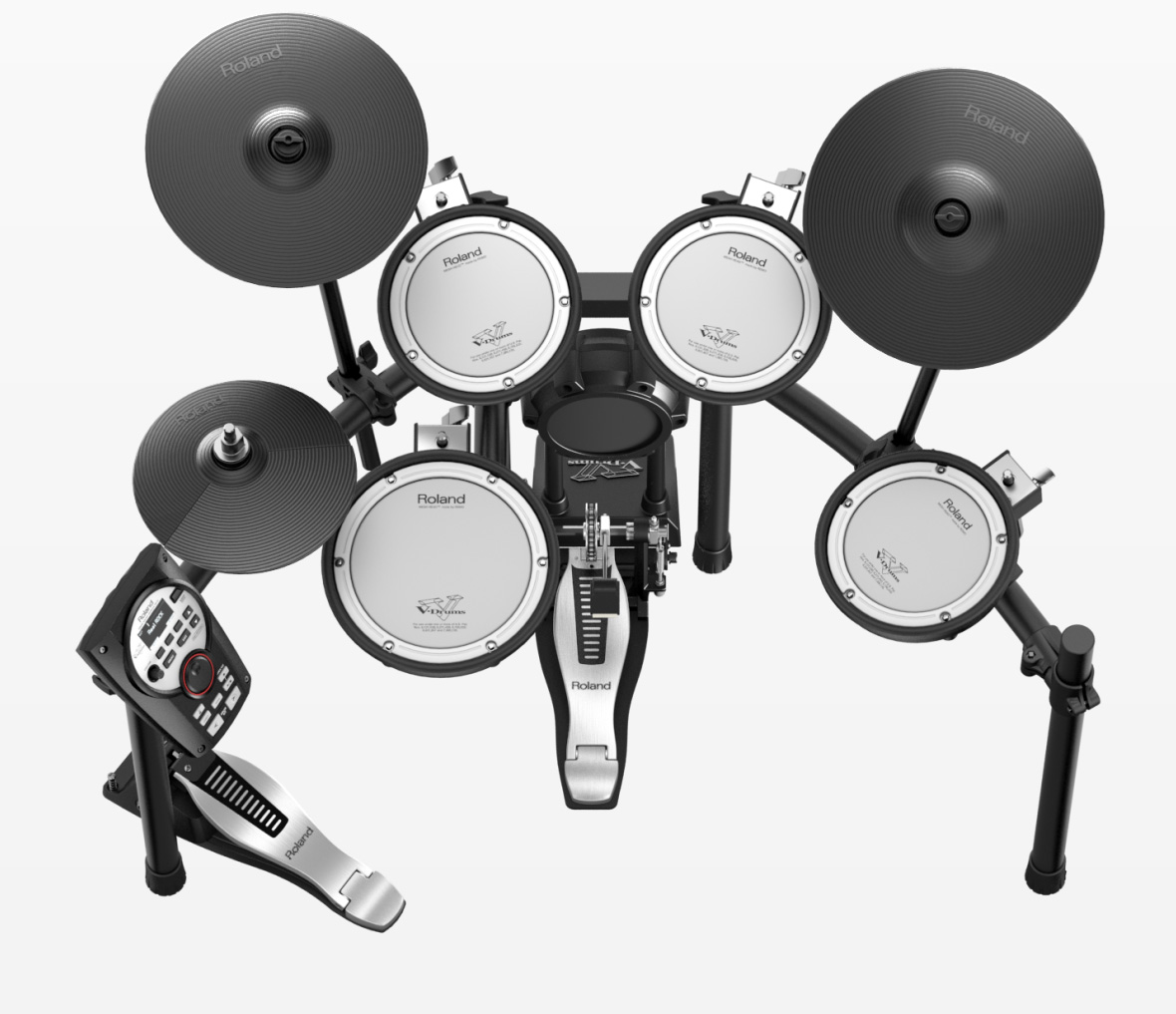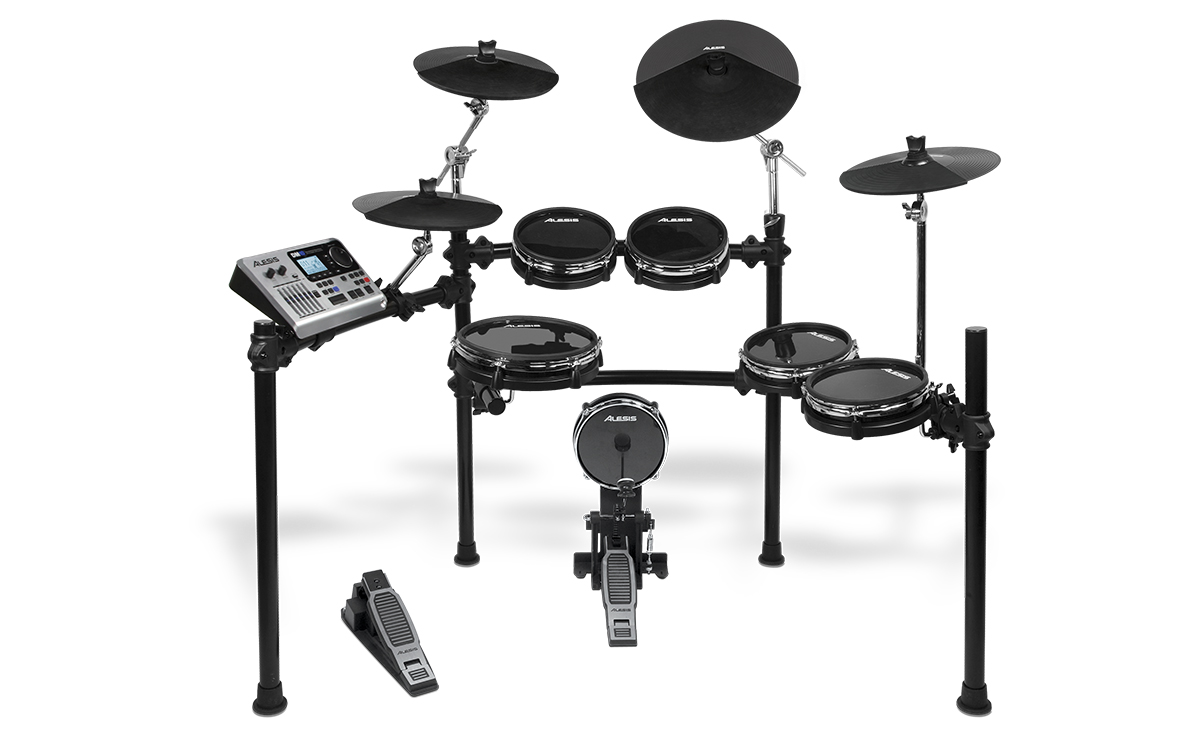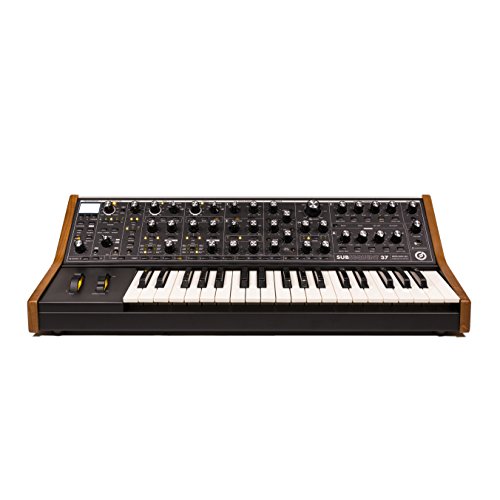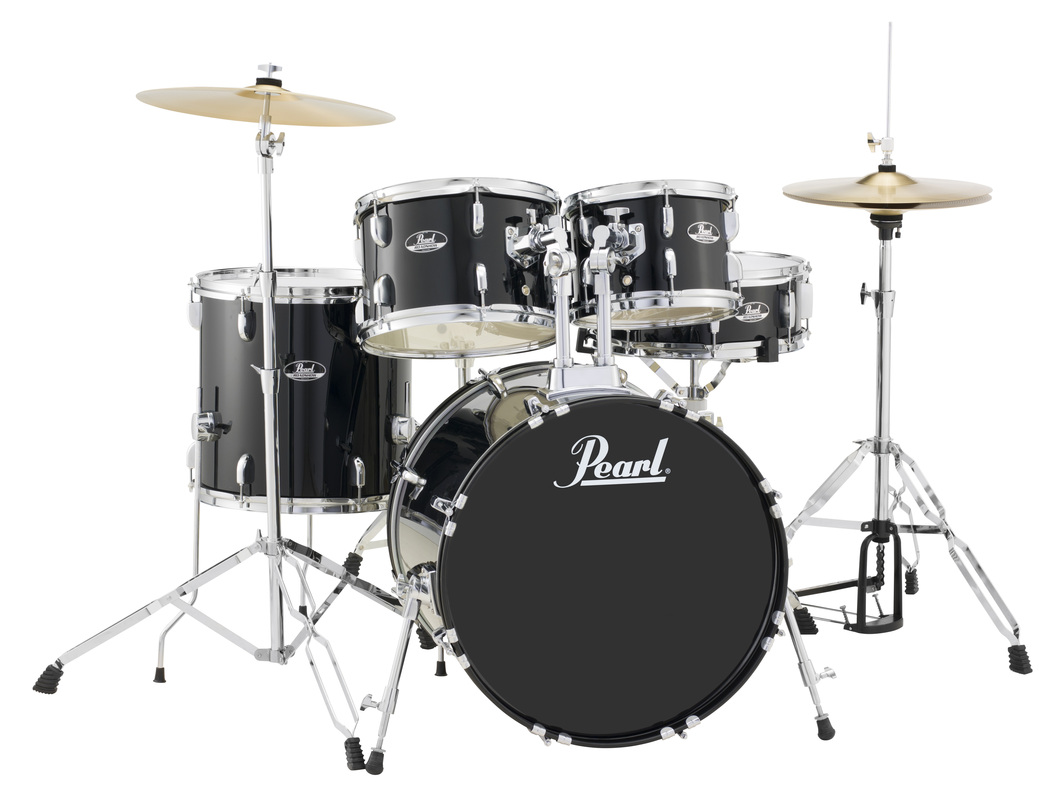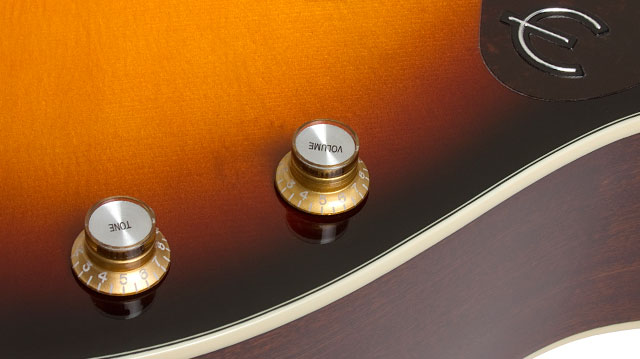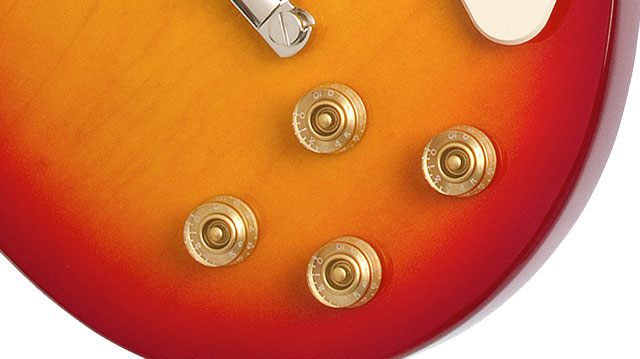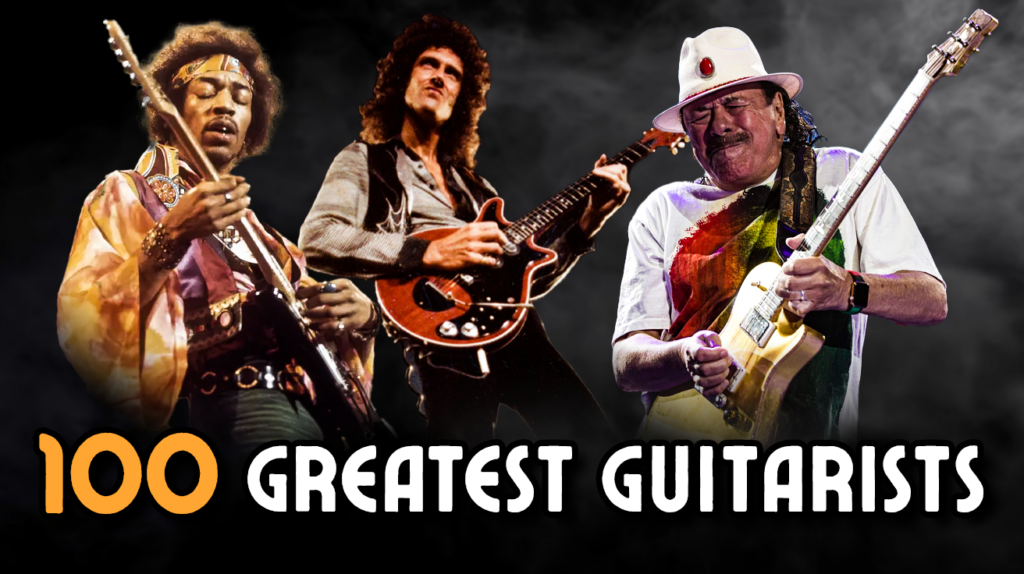
Through their masterful technique, revolutionary approaches, and distinctive artistic voices, guitarists have fundamentally transformed the sonic landscape and trajectory of modern music. From Jimi Hendrix’s revolutionary use of feedback and Eddie Van Halen’s innovative tapping techniques to Tony Iommi’s genre-defining metal riffs and Eric Clapton’s soulful blues mastery, these virtuosos have completely reimagined the guitar’s role and potential.
Icons like Jimmy Page and David Gilmour further elevated the instrument through their groundbreaking compositions and emotive solos, earning their places among this prestigious ranking. Let’s explore these legendary players, starting with the 100 guitarists whose technical brilliance, creative vision, and lasting influence have shaped the very foundation of modern music.
100. Allen Collins
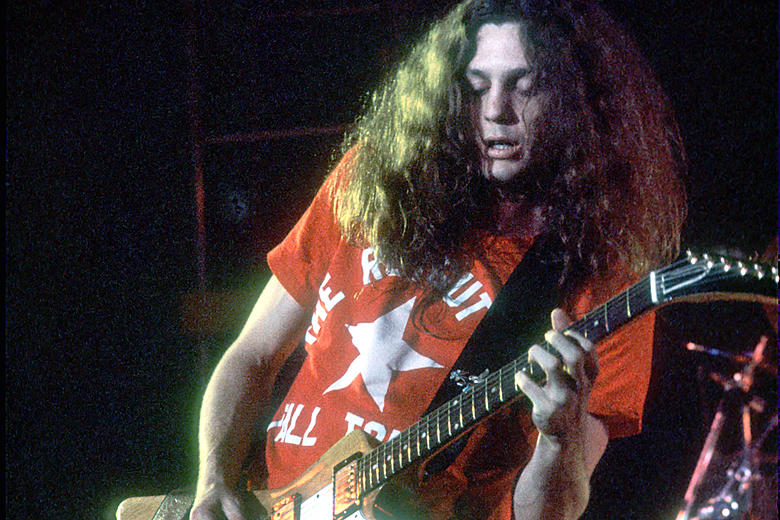
Allen Collins played an instrumental role in defining the Southern rock genre as a founding member of Lynyrd Skynyrd. His fiery, emotive lead work on tracks like “Free Bird” showcases his ability to blend technical prowess with raw emotion. Collins’ contributions remain central to the Skynyrd legacy, inspiring countless guitarists in the genre.
99. Skunk Baxter

Skunk Baxter brought technical mastery and innovation to bands like Steely Dan and The Doobie Brothers. His ability to transition seamlessly between jazz-inspired lines and rock rhythms defined hits like “Rikki Don’t Lose That Number.” Beyond his music career, Baxter is also an accomplished defense consultant, further highlighting his multifaceted genius.
98. Robbie Robertson
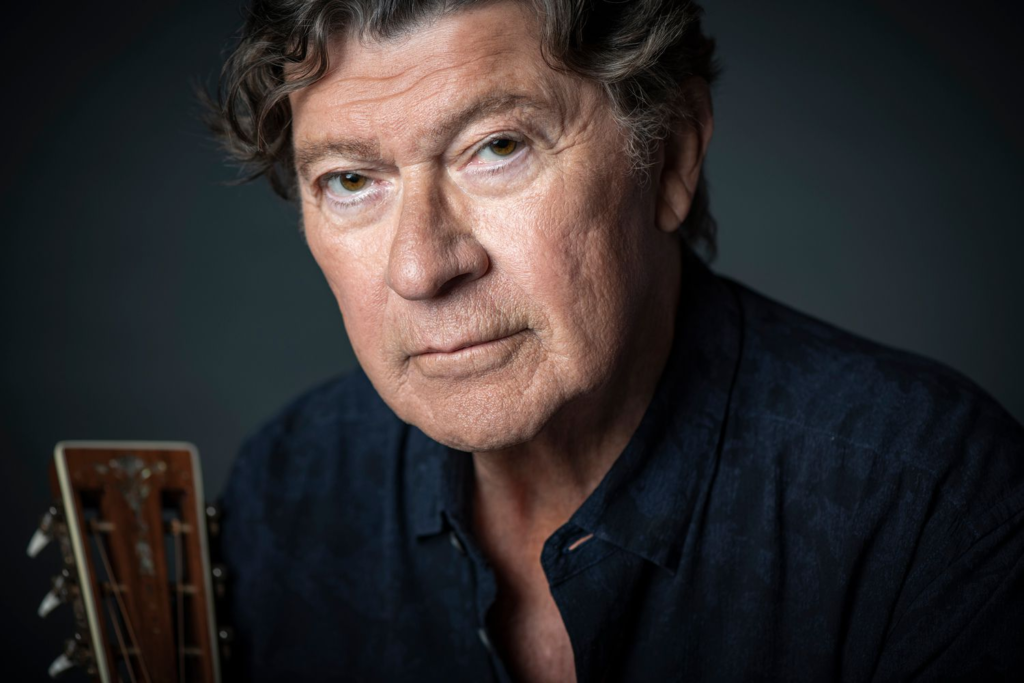
Robbie Robertson carved his legacy as the chief songwriter and guitarist for The Band. His evocative, storytelling-driven compositions such as “The Weight” are matched by his understated yet highly effective guitar playing. Robertson’s artistry extends beyond music into film scoring and producing, cementing his influence in multiple creative realms.
97. Bonnie Raitt
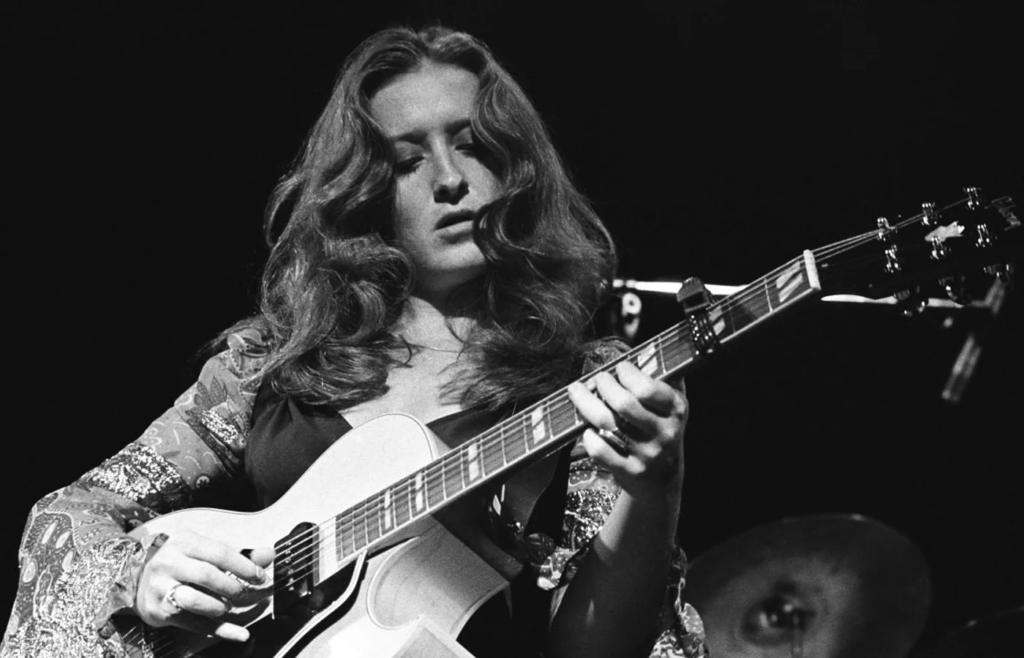
Bonnie Raitt emerged as one of the premier slide guitarists of her generation, blending blues, rock, and Americana into her signature style. Songs like “Nick of Time” and “Something to Talk About” highlight her soulful playing and heartfelt vocal delivery. Raitt’s work has paved the way for countless women in rock and blues.
96. Nile Rodgers
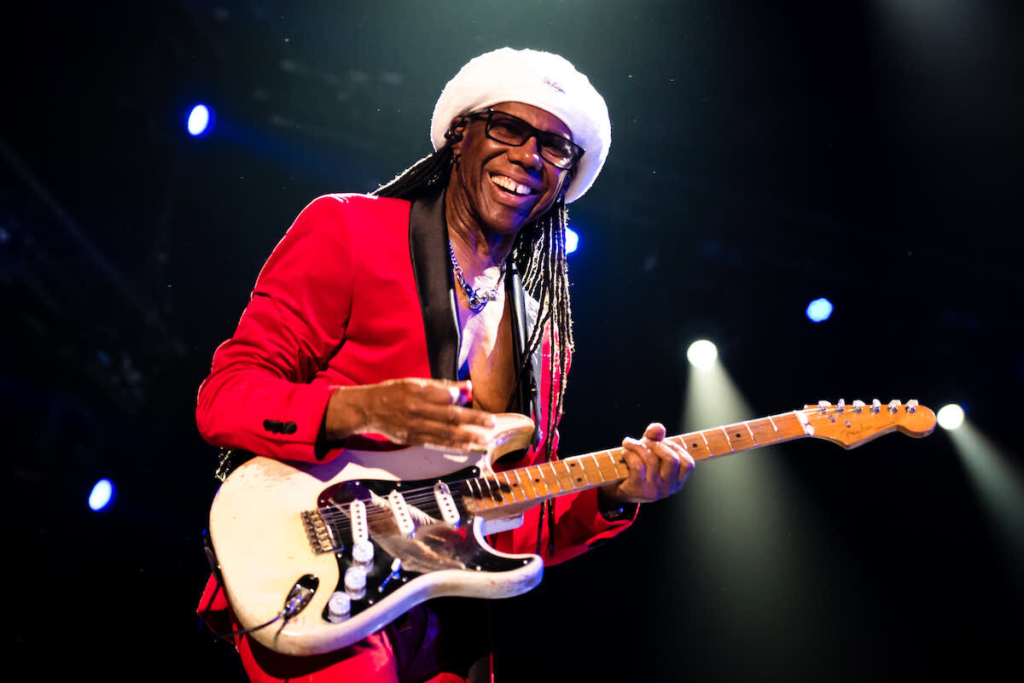
Nile Rodgers revolutionized rhythm guitar with his pioneering work in disco, funk, and pop as a member of Chic and as a producer. His percussive, syncopated playing style is the backbone of hits like “Le Freak” and “Good Times.” Rodgers’ influence extends to collaborations with artists like David Bowie and Daft Punk, keeping his sound timeless.
95. Bruce Springsteen
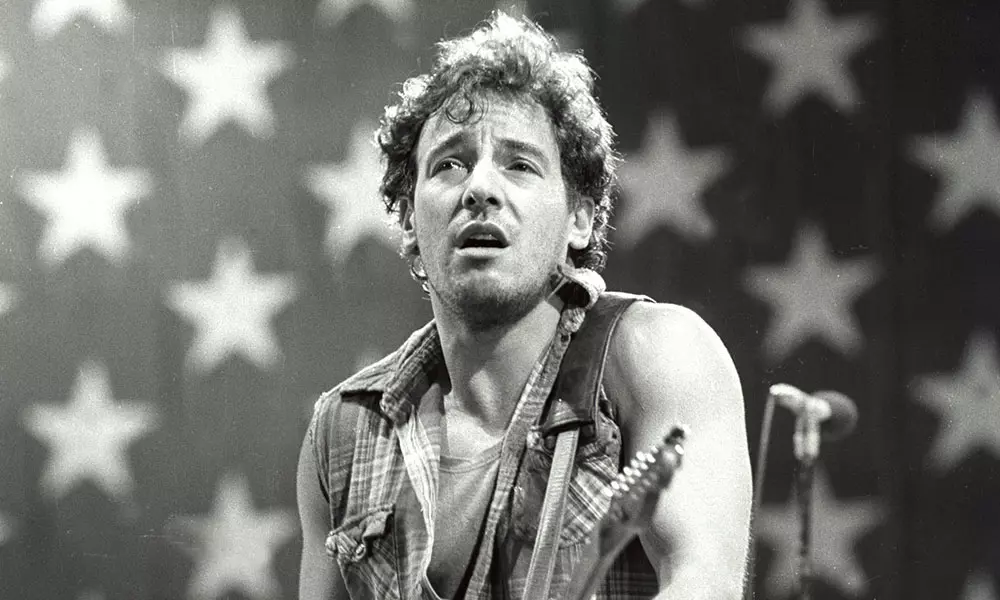
Bruce Springsteen combines passionate songwriting with a gritty, evocative guitar style. Known as “The Boss,” his work, such as “Born to Run” and “Thunder Road,” captures the spirit of the American working class. His combination of rhythm guitar and storytelling remains a hallmark of rock music.
94. Richard Thompson

Richard Thompson blends traditional folk melodies with electrifying guitar work, establishing himself as a master of the craft. His innovative picking style and sharp songwriting shine in tracks like “1952 Vincent Black Lightning.” Thompson’s work with Fairport Convention and as a solo artist continues to influence folk-rock musicians worldwide.
93. Leslie West
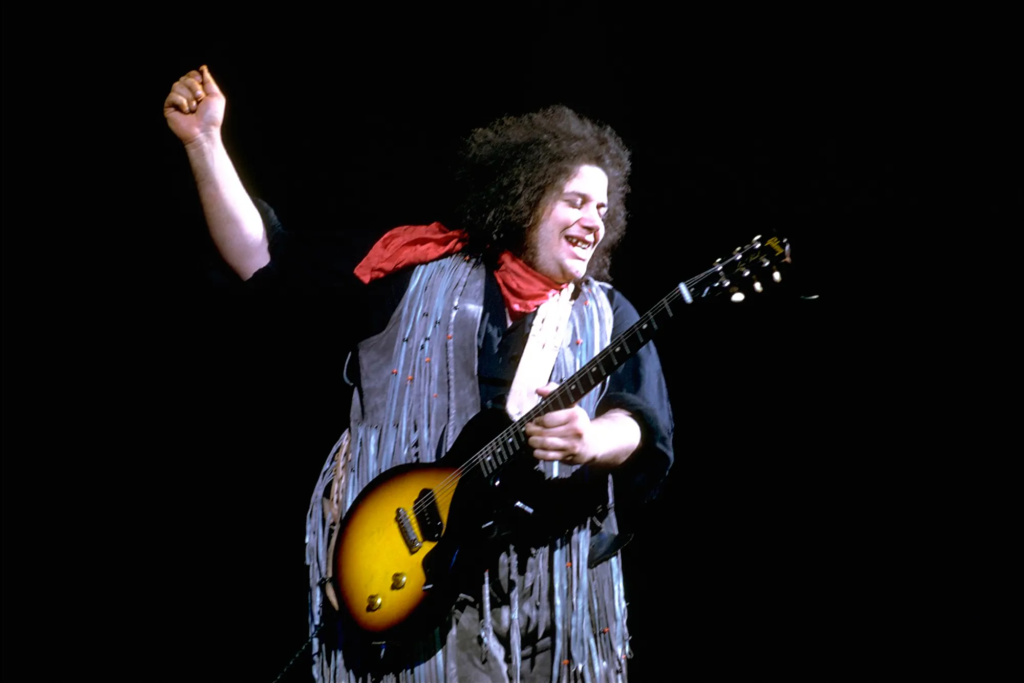
Leslie West’s mountainous tone and searing solos powered Mountain’s hard rock anthems, most notably “Mississippi Queen.” His economical, melodic approach stands as a blueprint for rock guitarists seeking to make a lasting impact. West’s mastery of dynamics set him apart in an era dominated by guitar pyrotechnics.
92. Mike Campbell

Mike Campbell provided the melodic backbone to Tom Petty and the Heartbreakers with his tasteful, song-serving guitar parts. His understated brilliance on hits like “Runnin’ Down a Dream” highlights his ability to enhance any composition. Campbell continues to lend his talents to other artists and projects, ensuring his legacy endures.
91. Neil Young
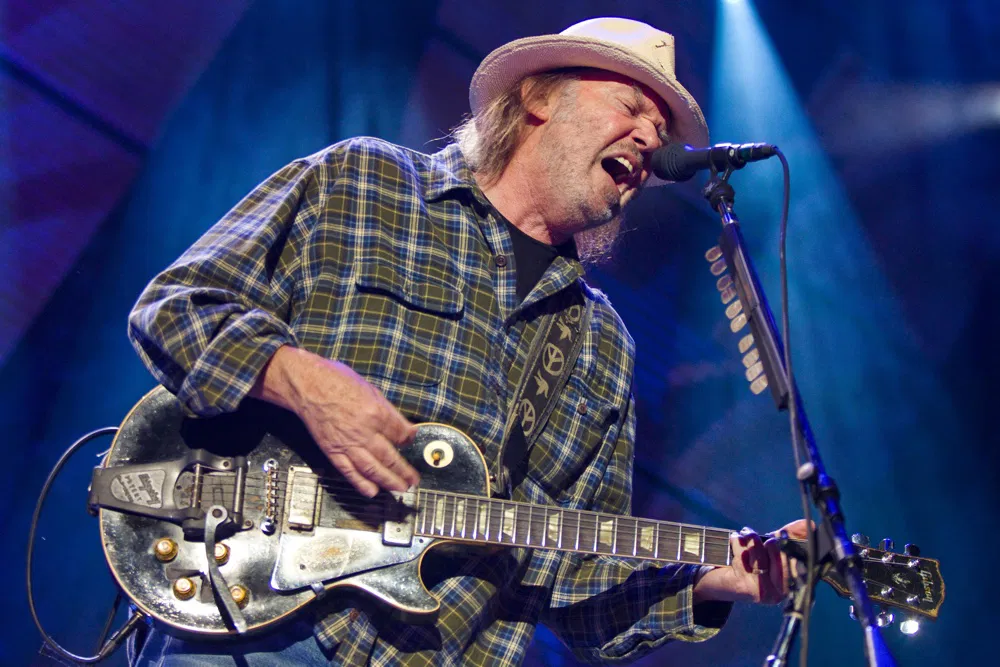
Neil Young’s raw, unfiltered approach to guitar embodies the emotional core of his music. Whether with Crazy Horse or as a solo artist, tracks like “Cinnamon Girl” and “Rockin’ in the Free World” showcase his visceral, often unpredictable playing style. Young’s work remains a cornerstone of rock and folk music alike.
90. Duane Eddy
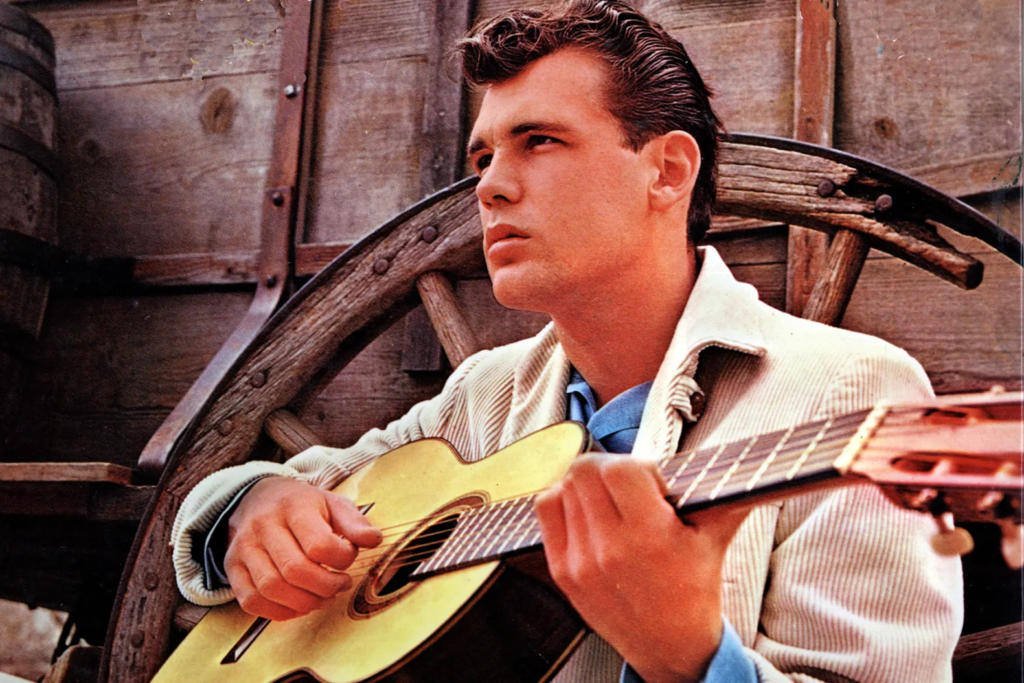
Duane Eddy pioneered the twangy, reverb-drenched guitar sound that became a hallmark of early rock and roll. His instrumental hits like “Rebel Rouser” brought a cinematic quality to his playing, earning him widespread acclaim. Eddy’s innovative style influenced countless guitarists and remains iconic decades later.
89. Dickey Betts
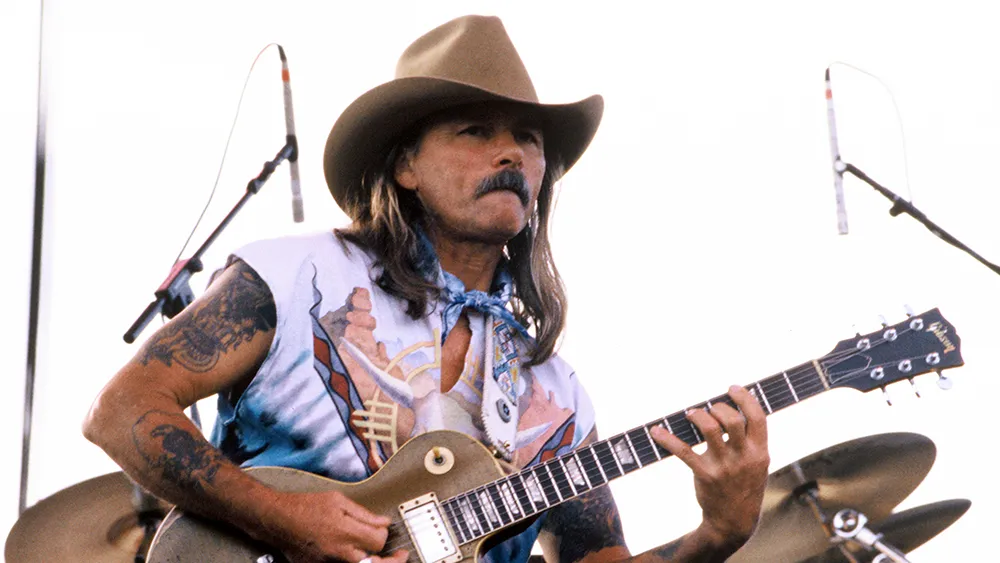
Dickey Betts blended Southern rock and blues with country-influenced phrasing as a founding member of The Allman Brothers Band. His melodic guitar lines in classics like “Jessica” and “Ramblin’ Man” defined the band’s sound. Betts’ signature style continues to inspire the next generation of guitarists.
88. Robert Cray
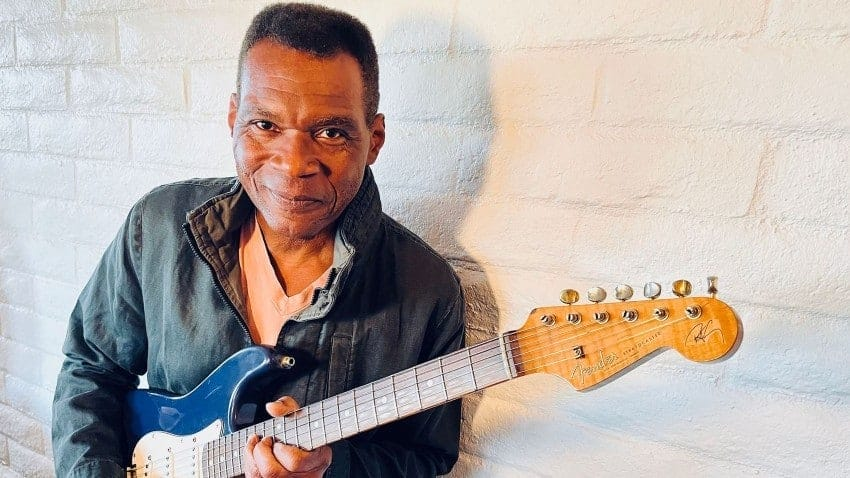
Robert Cray revitalized the blues with his soulful voice and clean, precise guitar work. Songs like “Smoking Gun” highlight his ability to merge traditional blues with contemporary sensibilities. Cray’s contributions helped bring the genre to a wider audience, securing his place among blues legends.
87. Clarence White
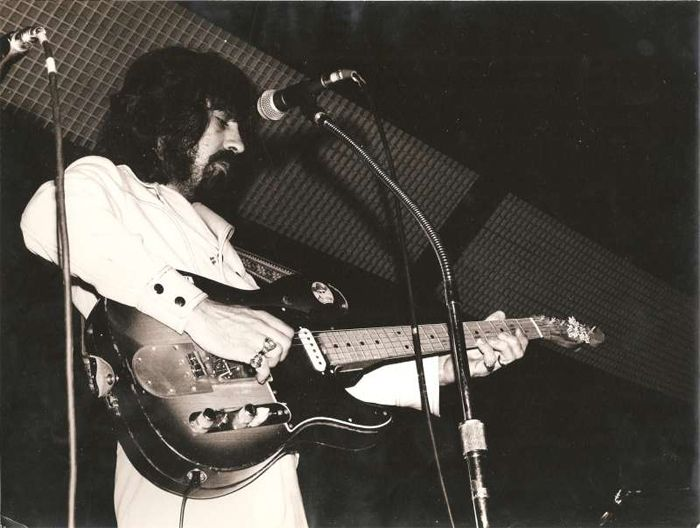
Clarence White transformed country rock with his pioneering work on the guitar, particularly as a member of The Byrds. His innovative string-bending techniques and intricate picking brought a new level of sophistication to the genre. White’s influence extends far beyond his tragically short career.
86. Stephen Stills
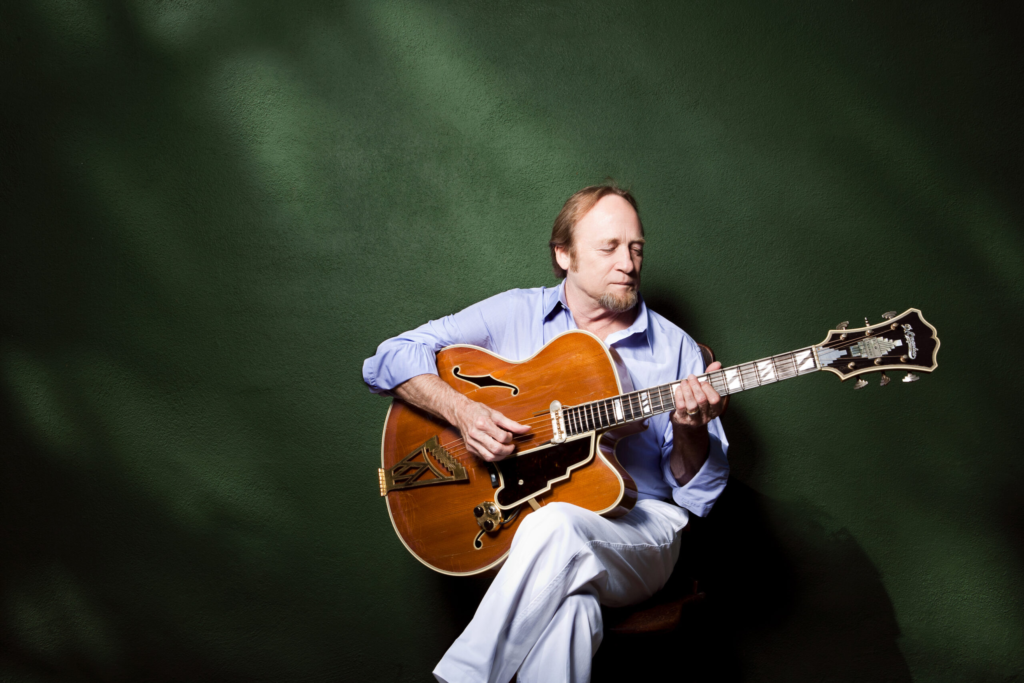
Stephen Stills brought emotional depth and technical skill to his work with Buffalo Springfield, Crosby, Stills & Nash, and as a solo artist. His guitar playing, showcased on tracks like “Suite: Judy Blue Eyes,” blends folk, rock, and blues seamlessly. Stills’ versatility has cemented him as one of rock’s most accomplished musicians.
85. Gary Clark Jr.

Gary Clark Jr. combines blues tradition with modern rock and hip-hop influences to create a sound entirely his own. Songs like “Bright Lights” highlight his mastery of searing solos and raw, emotional delivery. Clark’s genre-defying approach is pushing blues into the future.
84. Dave Mustaine

Dave Mustaine established himself as a thrash metal innovator with his aggressive playing and sharp compositional skills as Megadeth’s frontman. Tracks like “Holy Wars… The Punishment Due” display his intricate riffing and blistering solos. Mustaine’s technical mastery remains a cornerstone of the metal genre.
83. Al Di Meola

Al Di Meola redefined jazz fusion with his virtuosic technique and innovative compositions. Albums like Elegant Gypsy showcase his blistering speed, complex rhythms, and global musical influences. Di Meola’s career spans decades, solidifying his legacy as one of fusion’s greatest guitarists.
82. Alvin Lee
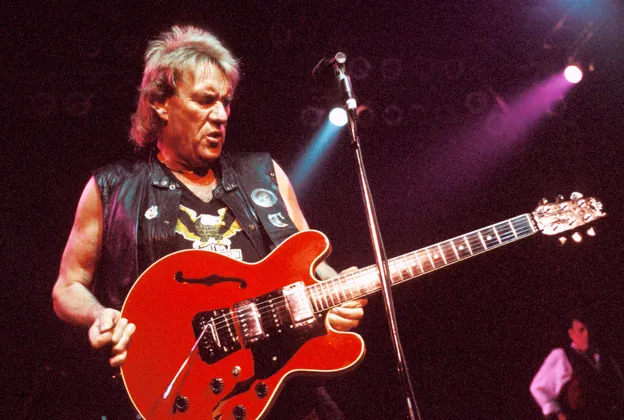
Alvin Lee electrified audiences with his high-energy performances as the frontman of Ten Years After. His legendary performance of “I’m Going Home” at Woodstock epitomized his blistering speed and raw power. Lee’s blues-rock legacy remains a benchmark for virtuosity and showmanship.
81. Mick Ronson
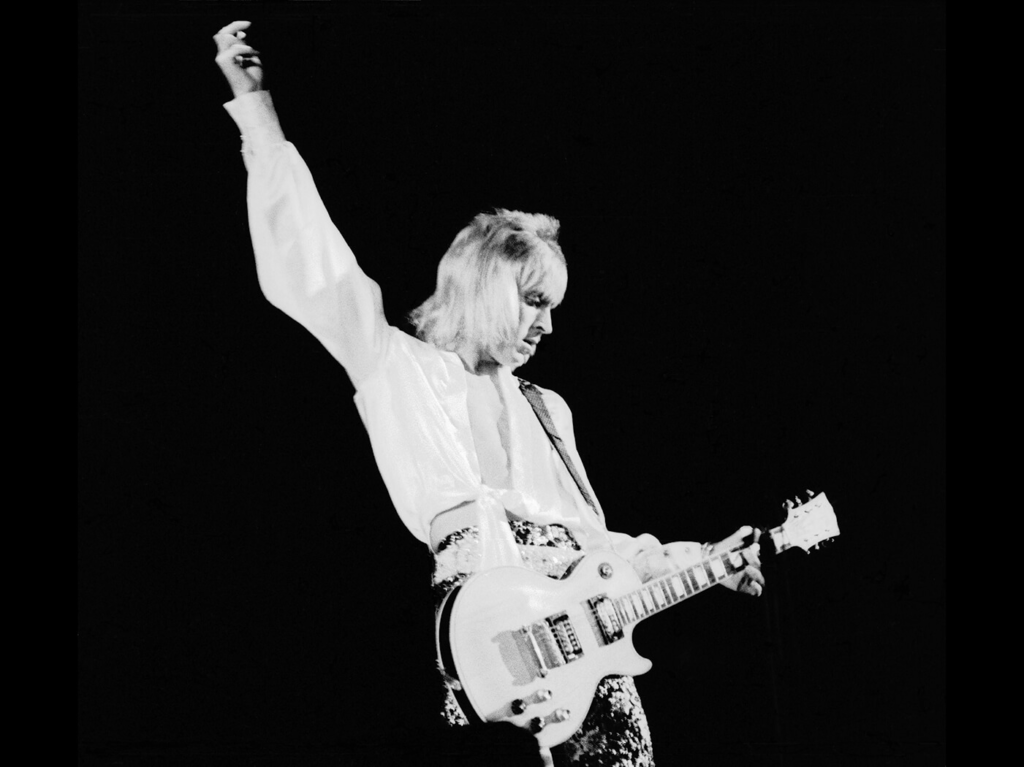
Mick Ronson shaped the glam rock era as David Bowie’s guitarist and key collaborator during the Ziggy Stardust period. His tasteful arrangements and sharp solos on tracks like “Moonage Daydream” made him a pivotal force in Bowie’s sound. Ronson’s work continues to resonate with fans and musicians alike.
80. Kurt Cobain
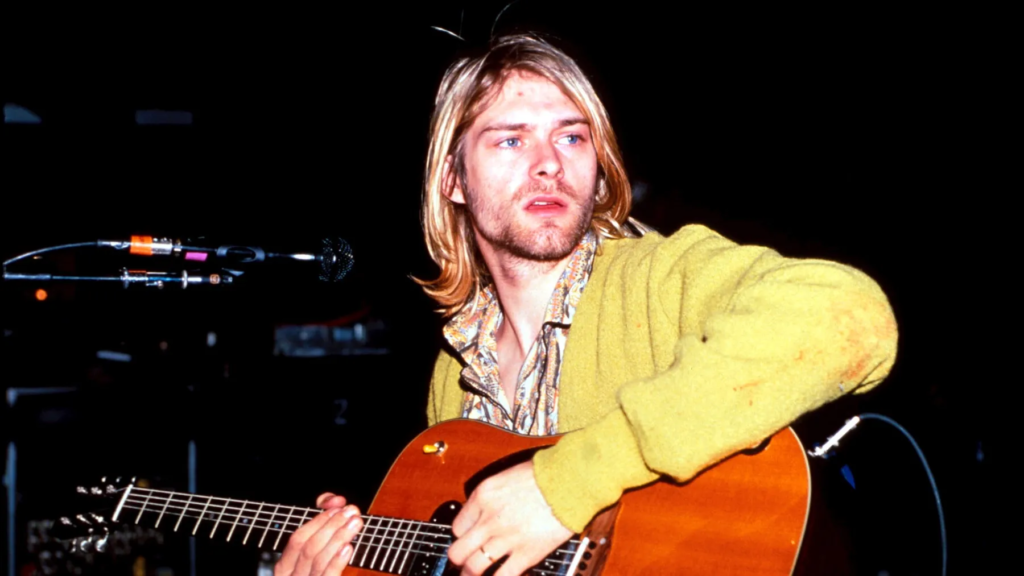
Kurt Cobain revolutionized rock music with his raw, minimalist guitar playing and emotionally charged songwriting. As the frontman of Nirvana, his work on tracks like “Smells Like Teen Spirit” became the anthem of a generation. Cobain’s stripped-down approach redefined what it meant to be a guitarist in the grunge era.
79. Terry Kath
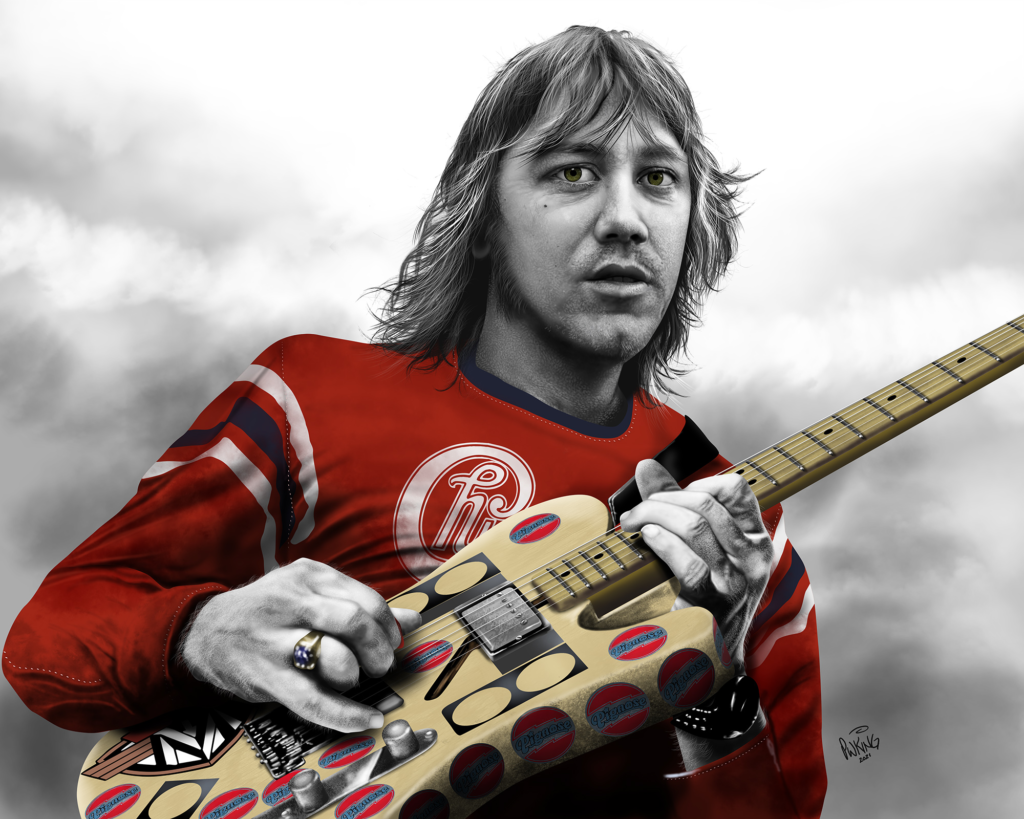
Terry Kath, the founding guitarist of Chicago, delivered a dynamic fusion of rock, jazz, and blues in his playing. His searing solo on “25 or 6 to 4” is widely regarded as one of the greatest in rock history. Kath’s innovative and soulful approach left an indelible mark on music despite his untimely passing.
78. George Benson
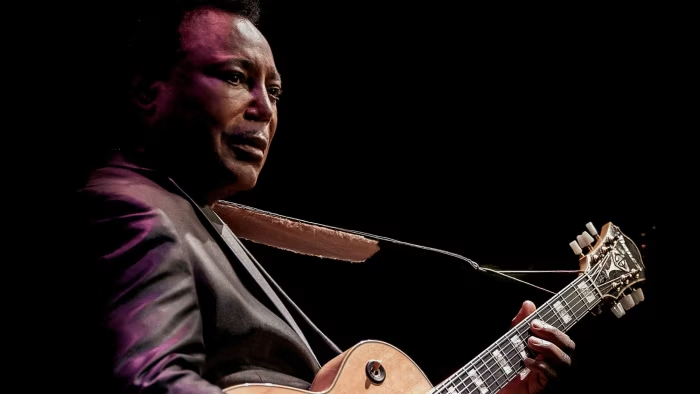
George Benson combined jazz virtuosity with a smooth, pop-friendly sensibility to become one of the most successful guitarists of his time. Tracks like “Breezin’” showcase his impeccable phrasing and fluid technique. Benson’s dual mastery of guitar and vocals has influenced generations of jazz and R&B musicians.
77. Johnny Winter
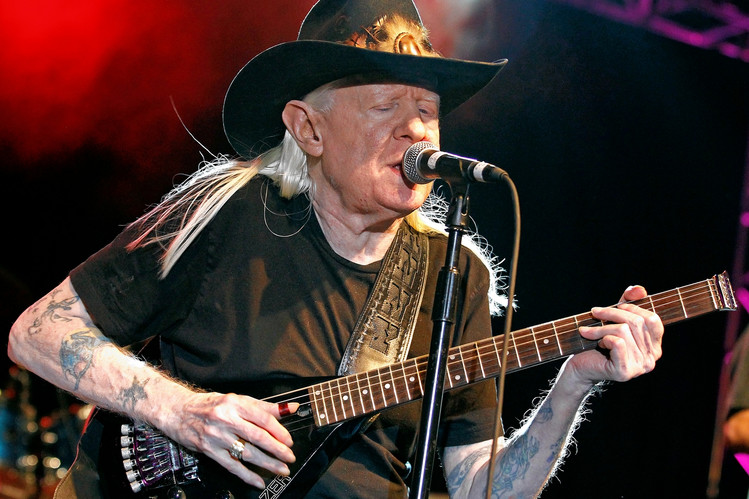
Johnny Winter brought fiery energy and technical prowess to the blues, earning his place as one of the genre’s titans. Songs like “Be Careful with a Fool” highlight his lightning-fast picking and raw vocal delivery. Winter’s career cemented him as a blues rock legend and a key figure in the genre’s evolution.
76. Jeff Healey
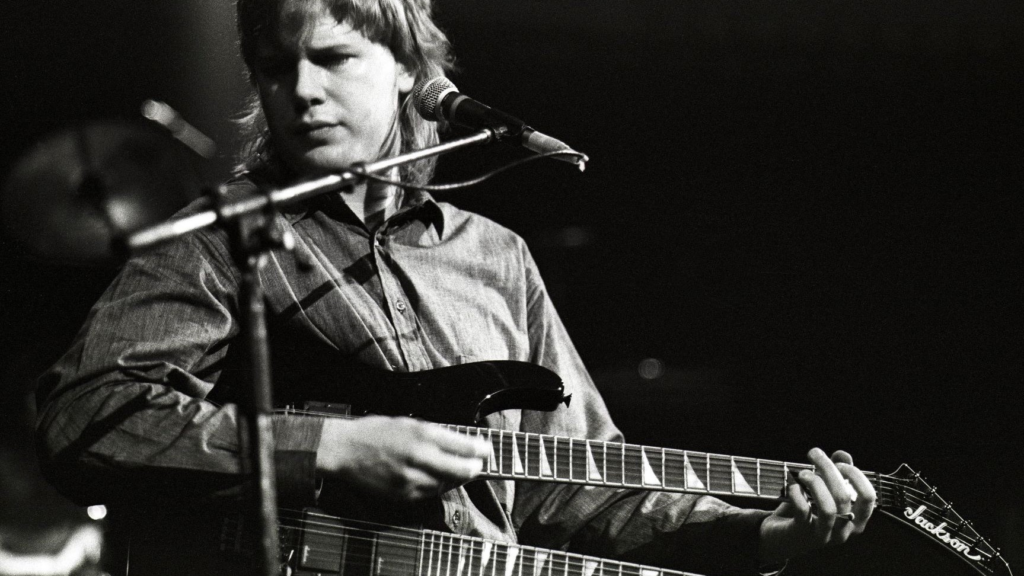
Jeff Healey captivated audiences with his unique lap-style guitar playing and soulful interpretation of blues and rock. Tracks like “Angel Eyes” demonstrate his ability to infuse passion and technical skill into every note. Healey’s innovative approach and profound artistry remain influential long after his passing.
75. Django Reinhardt
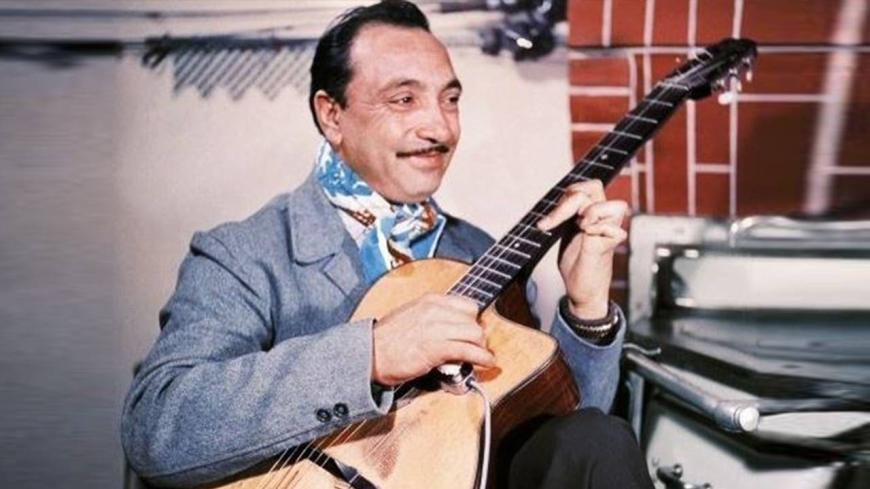
Django Reinhardt pioneered gypsy jazz with his groundbreaking technique and creative improvisation. Despite losing the use of two fingers on his fretting hand, he delivered masterful performances on tracks like “Minor Swing.” Reinhardt’s influence extends across genres, marking him as one of the greatest guitarists in history.
74. Michael Schenker

Michael Schenker’s melodic approach and innovative solos made him a standout guitarist in bands like UFO and Scorpions. Tracks like “Rock Bottom” exhibit his precise phrasing and emotive playing. Schenker’s contributions to hard rock and metal have earned him lasting respect among guitarists.
73. Yngwie Malmsteen
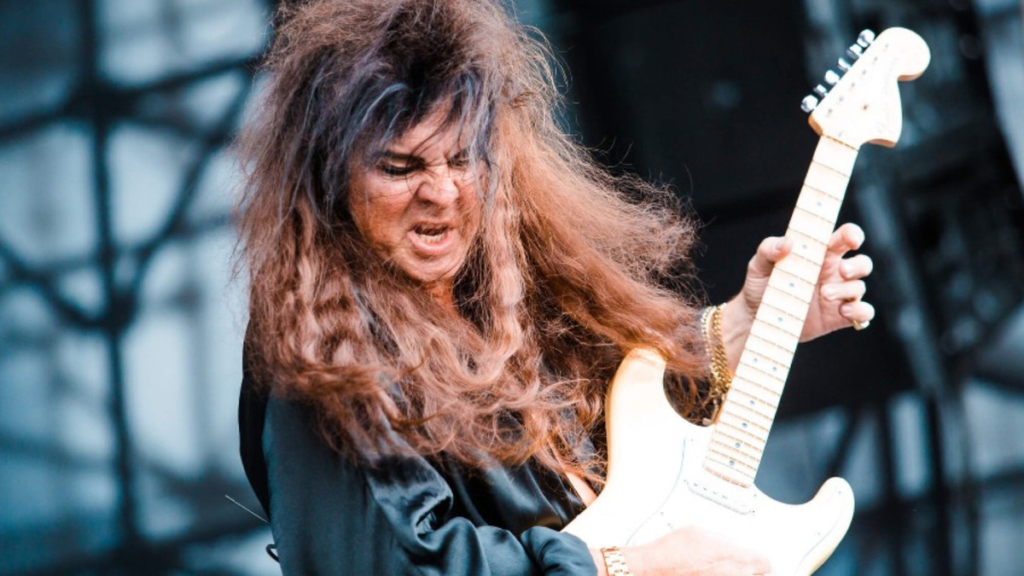
Yngwie Malmsteen brought neo-classical virtuosity to heavy metal, revolutionizing the genre with his technical brilliance. His groundbreaking debut album, Rising Force, set new standards for shred guitar with its intricate compositions. Malmsteen’s influence continues to resonate across the metal and guitar communities.
72. Tom Scholz
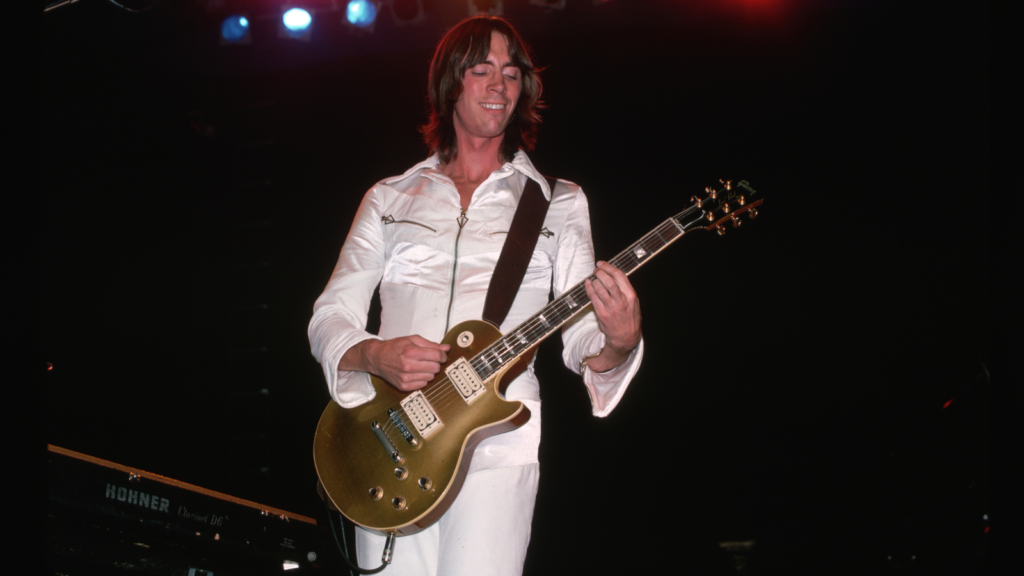
Tom Scholz combined technical proficiency and innovative production as the creative force behind Boston. His signature guitar sound on tracks like “More Than a Feeling” became iconic for its lush harmonics and soaring leads. Scholz’s meticulous attention to detail shaped Boston’s groundbreaking debut album, which remains a rock classic.
71. Joe Bonamassa
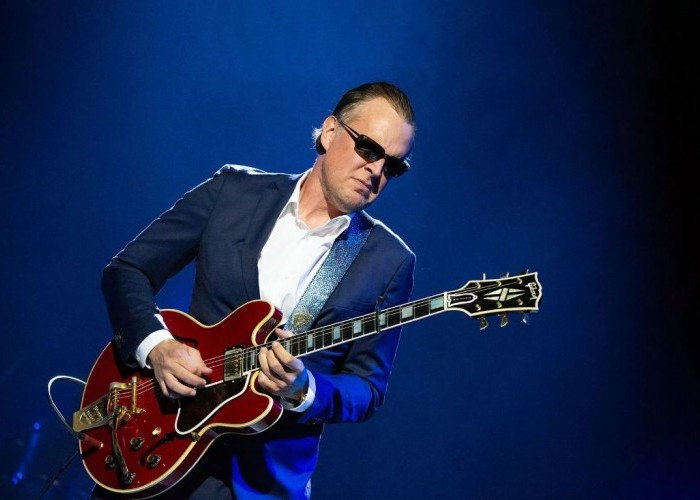
Joe Bonamassa revitalized modern blues with his impeccable technique and deep understanding of the genre’s roots. Tracks like “Sloe Gin” showcase his ability to fuse classic blues with contemporary sensibilities. Bonamassa’s tireless work ethic and prolific output have solidified him as a modern blues icon.
70. Joe Satriani
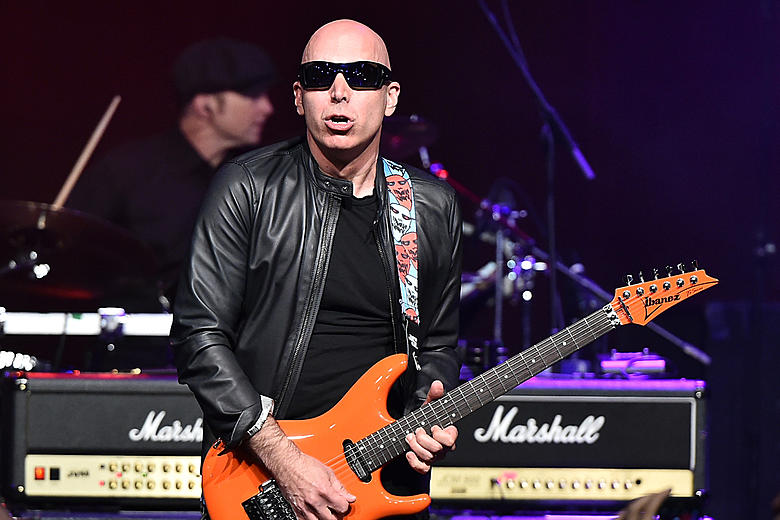
Joe Satriani stands as one of the most technically accomplished guitarists in instrumental rock. Albums like Surfing with the Alien feature his soaring melodies and innovative use of effects. Satriani’s ability to craft complex yet accessible compositions has influenced countless guitarists around the world.
69. Ace Frehley
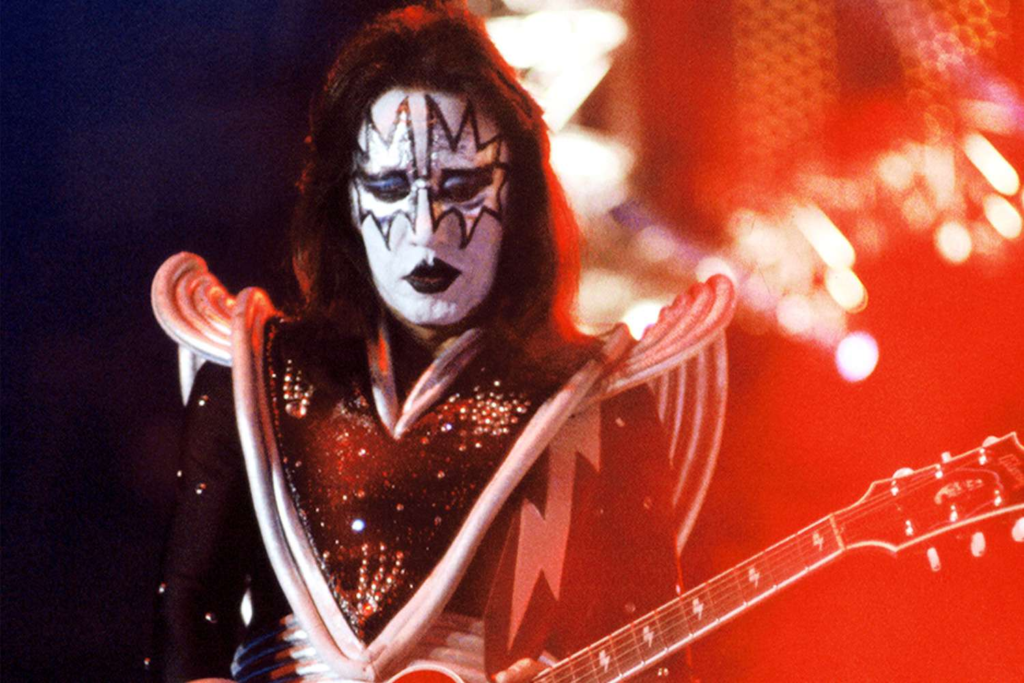
Ace Frehley’s gritty, melodic playing helped define the sound of KISS during their rise to rock superstardom. His solos on tracks like “Shock Me” embody a raw energy that complements his larger-than-life stage presence. Frehley’s straightforward approach continues to resonate with fans and guitarists alike.
68. Uli Jon Roth

Uli Jon Roth brought classical influences and improvisational brilliance to his tenure with Scorpions and his solo career. Tracks like “Sails of Charon” highlight his virtuosic phrasing and innovative use of the Sky Guitar. Roth’s blending of rock and classical styles cemented his place as a pioneer of neo-classical guitar.
67. Joe Perry
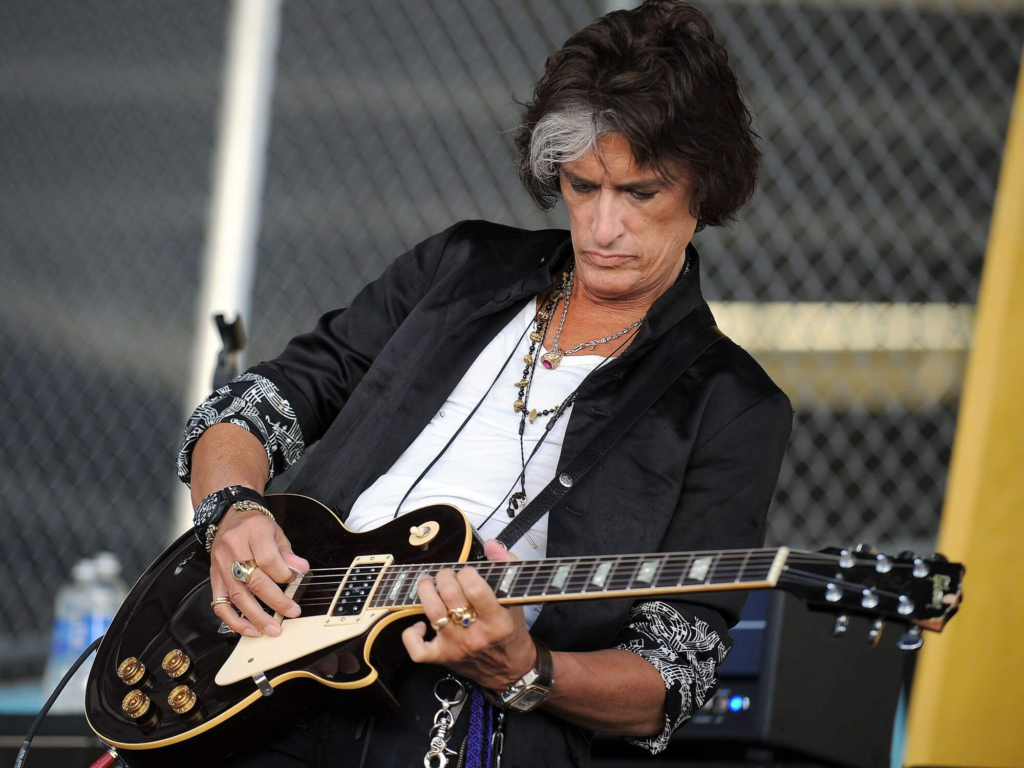
Joe Perry’s bluesy riffs and searing solos are the backbone of Aerosmith’s hard rock sound. Hits like “Walk This Way” demonstrate his raw, dynamic approach to guitar. Perry’s undeniable chemistry with Steven Tyler has propelled Aerosmith to legendary status in rock history.
66. Buck Dharma
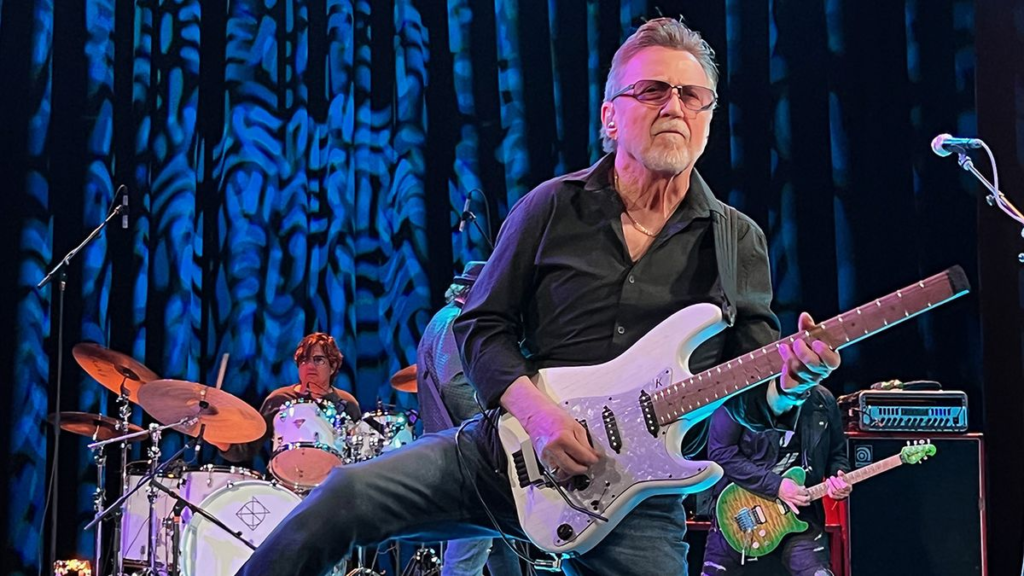
Buck Dharma’s melodic sensibilities and technical expertise defined Blue Öyster Cult’s sound. His iconic solo on “(Don’t Fear) The Reaper” showcases his ability to combine emotion and precision. Dharma’s influence on hard rock and progressive music continues to inspire musicians worldwide.
65. Peter Frampton

Peter Frampton’s fluid guitar work and innovative use of the talk box made him a defining figure in ’70s rock. Tracks like “Do You Feel Like We Do” from his legendary live album Frampton Comes Alive! captured his exceptional skill and charisma. Frampton’s enduring popularity highlights his significant impact on rock guitar.
64. Marty Friedman

Marty Friedman’s intricate and melodic playing helped shape the sound of thrash metal during his time with Megadeth. His work on albums like Rust in Peace displays his mastery of complex arrangements and exotic scales. Friedman’s fusion of metal and world music influences continues to redefine modern guitar playing.
63. Stanley Jordan
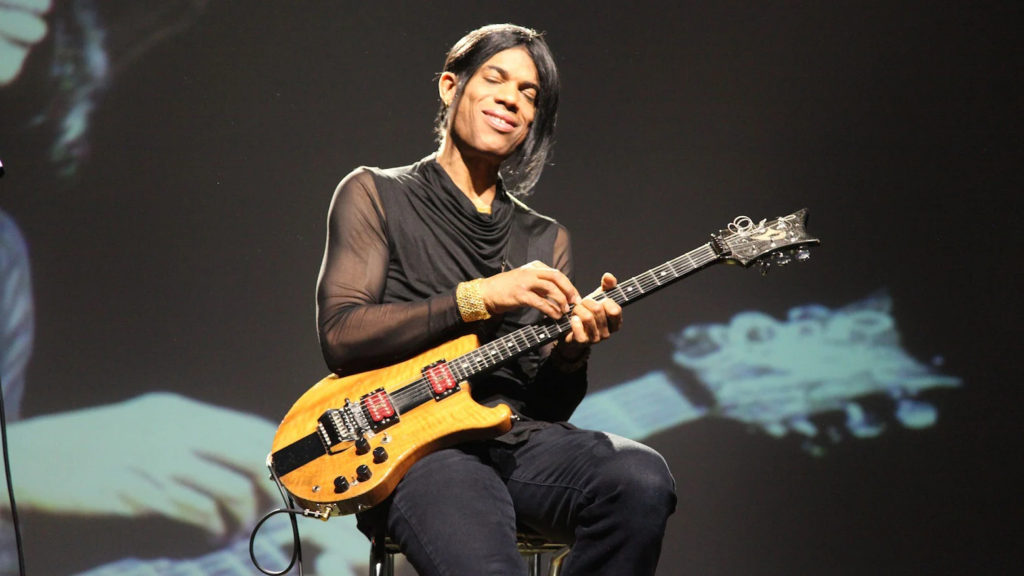
Stanley Jordan revolutionized jazz guitar with his pioneering two-handed tapping technique. His approach allows for simultaneous melodies and harmonies, as demonstrated on tracks like “Eleanor Rigby.” Jordan’s innovations have expanded the possibilities of guitar performance and composition.
62. John Mayer

John Mayer blends blues, pop, and rock with a smooth touch that resonates with a wide audience. Songs like “Gravity” showcase his lyrical phrasing and ability to channel emotion through his guitar. Mayer’s versatility and artistry have earned him recognition as a modern guitar great.
61. Link Wray
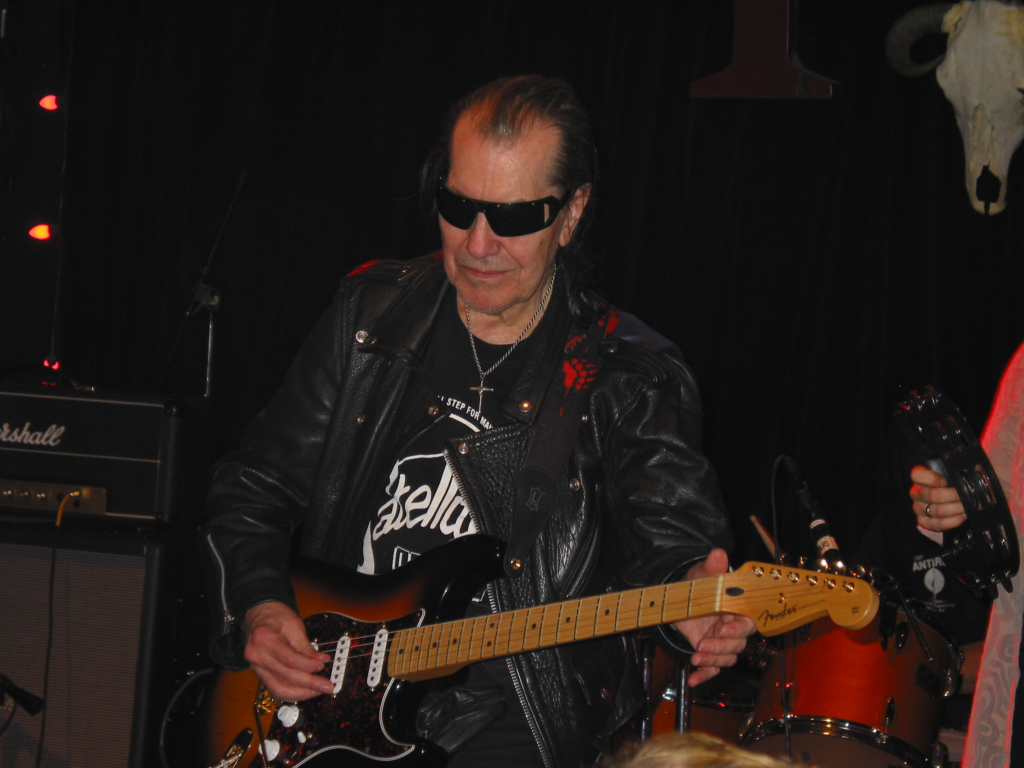
Link Wray’s groundbreaking use of distortion and power chords laid the foundation for punk and hard rock. His instrumental track “Rumble” stands as one of the most influential guitar pieces of all time. Wray’s raw, minimalist approach opened the door for countless innovations in rock music.
60. Dick Dale
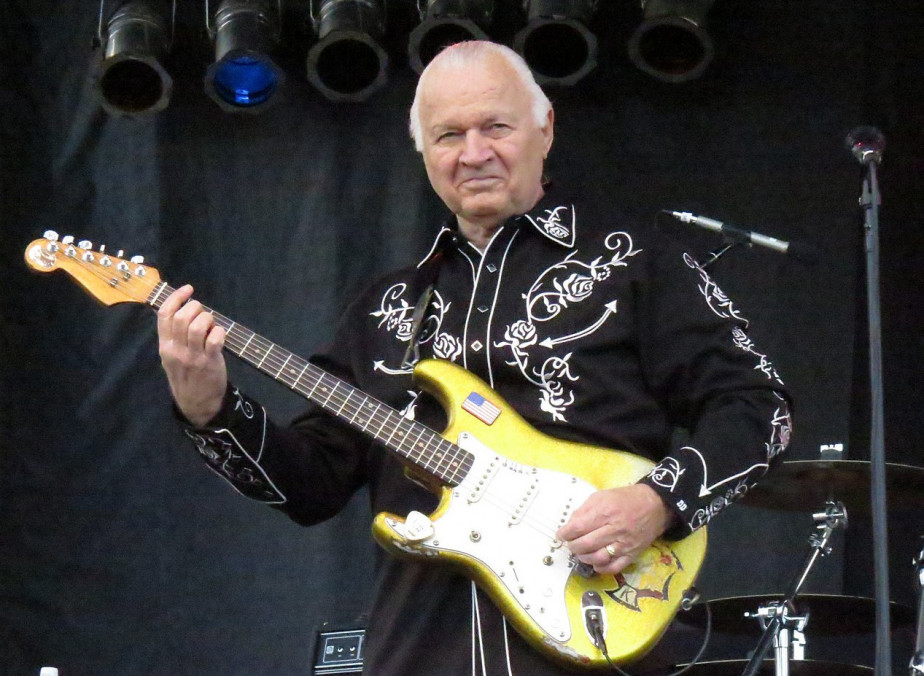
Dick Dale earned his title as the “King of Surf Guitar” with his groundbreaking use of rapid picking and reverb-drenched tones. Tracks like “Misirlou” set the standard for surf rock and inspired generations of guitarists. Dale’s technical innovations and high-energy performances cemented his place as a true pioneer.
59. Curtis Mayfield
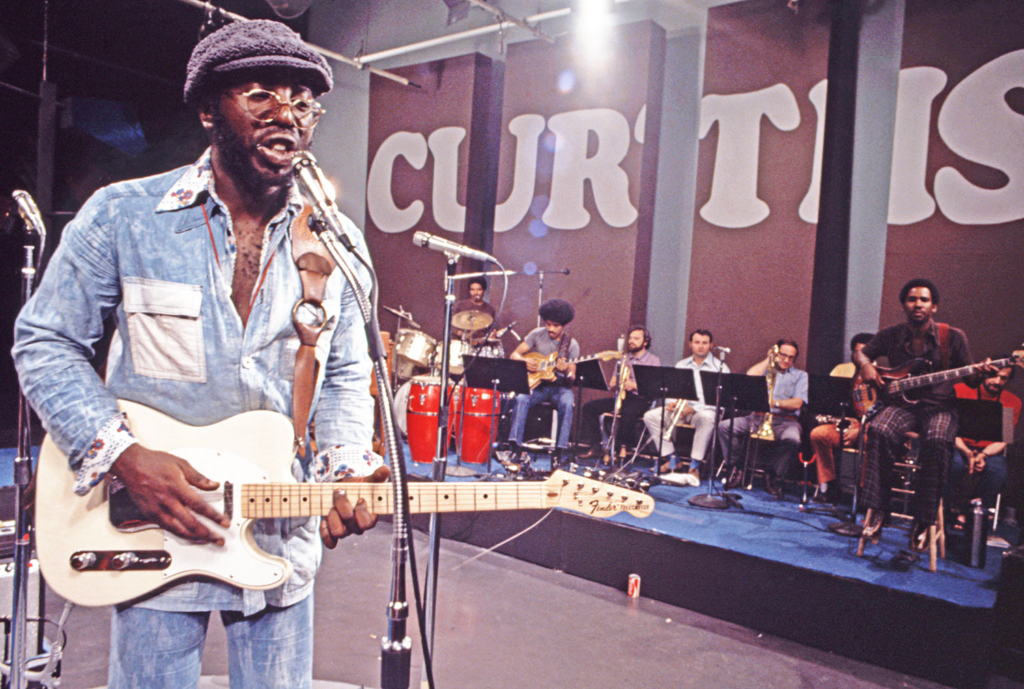
Curtis Mayfield brought sophistication and soul to rhythm guitar with his delicate yet expressive playing style. As a member of The Impressions and a solo artist, he crafted timeless tracks like “People Get Ready” that seamlessly blended melody and message. Mayfield’s influence on funk, soul, and R&B remains profound.
58. Gary Moore
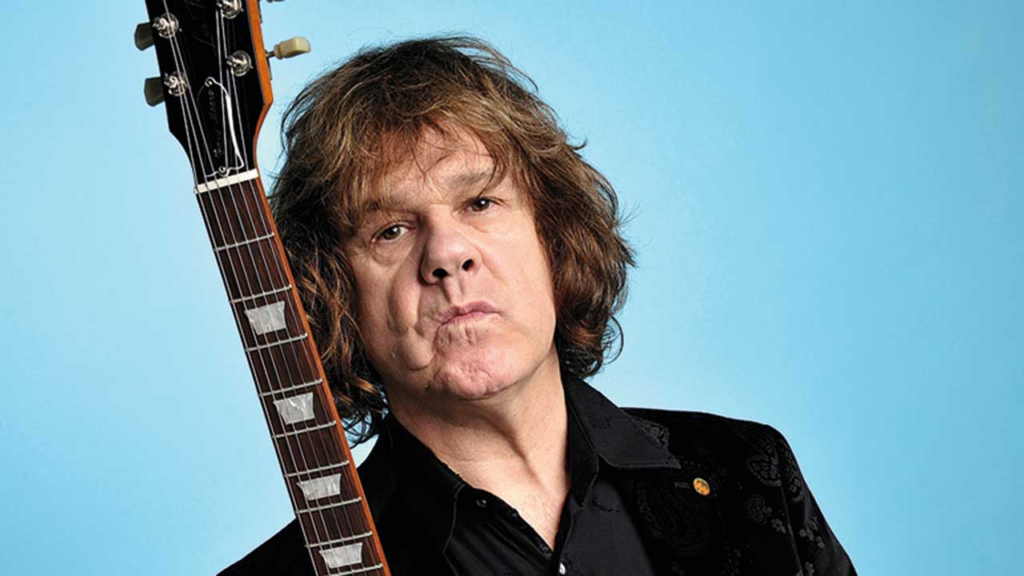
Gary Moore was a master of both hard rock and blues, delivering fiery solos with unmatched emotion and technical precision. Tracks like “Still Got the Blues” highlight his soulful phrasing and deep connection to the genre. Moore’s versatility and passion solidified his legacy as one of the greats.
57. Bo Diddley
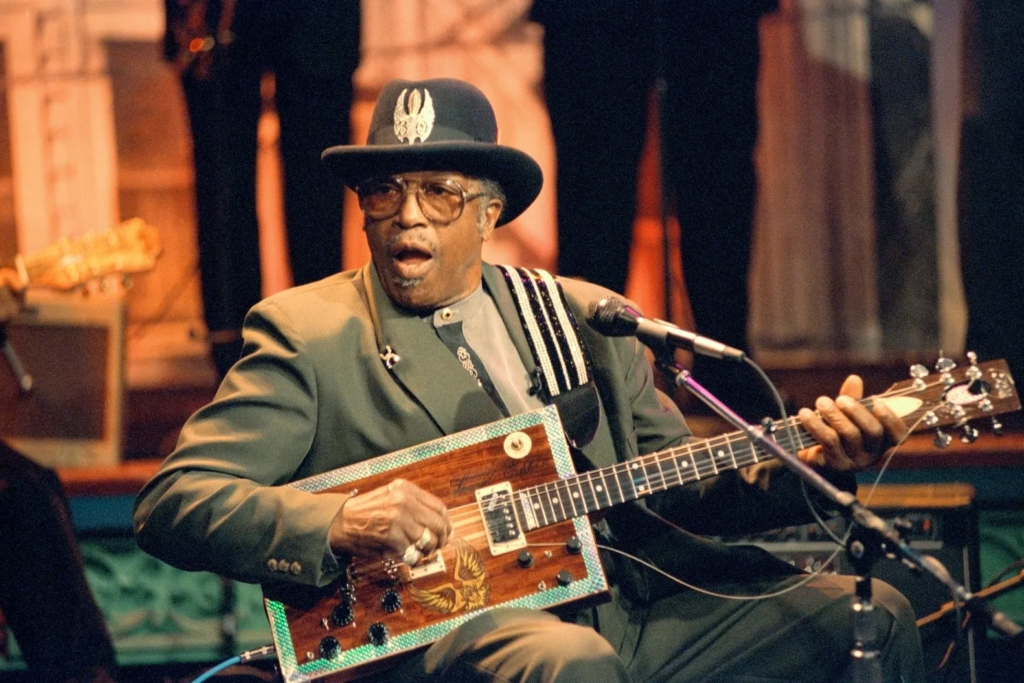
Bo Diddley revolutionized rhythm guitar with his syncopated beats and infectious grooves, creating the “Bo Diddley beat.” Tracks like “Who Do You Love” showcased his driving, percussive playing style that became a cornerstone of rock and roll. His trailblazing work continues to resonate throughout modern music.
56. Steve Cropper

Steve Cropper brought understated brilliance to his work as a member of Booker T. & the M.G.’s and a key contributor to Stax Records. His tasteful, rhythm-driven playing on classics like “Green Onions” exemplifies his ability to enhance any track without overpowering it. Cropper’s influence on soul and R&B guitar remains unparalleled.
55. Steve Howe
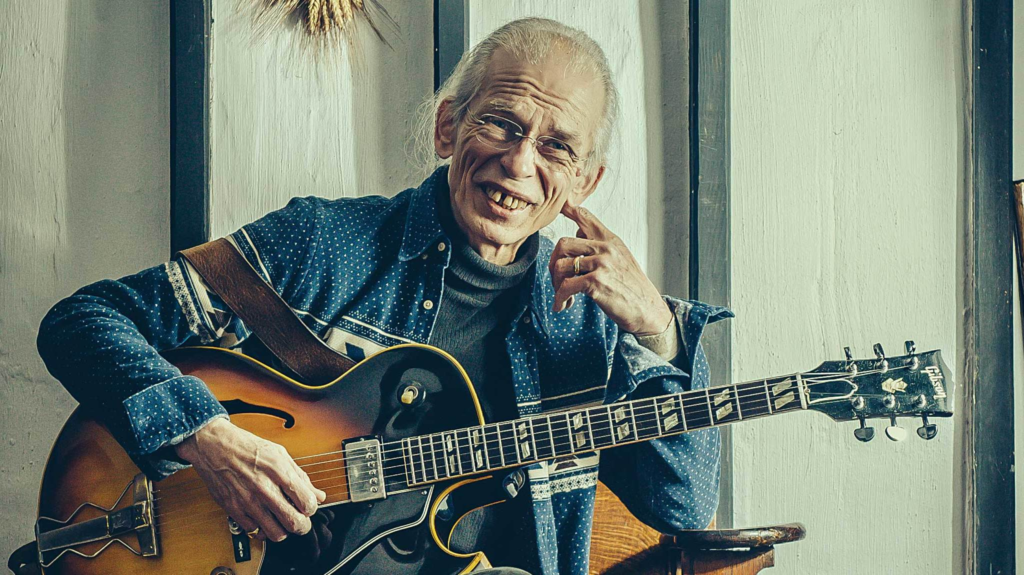
Steve Howe combined classical, jazz, and rock influences to craft a signature style as the guitarist for Yes. Tracks like “Roundabout” highlight his ability to blend intricate fingerpicking with electrifying solos. Howe’s innovative approach helped define progressive rock and expand the possibilities of guitar.
54. Scotty Moore
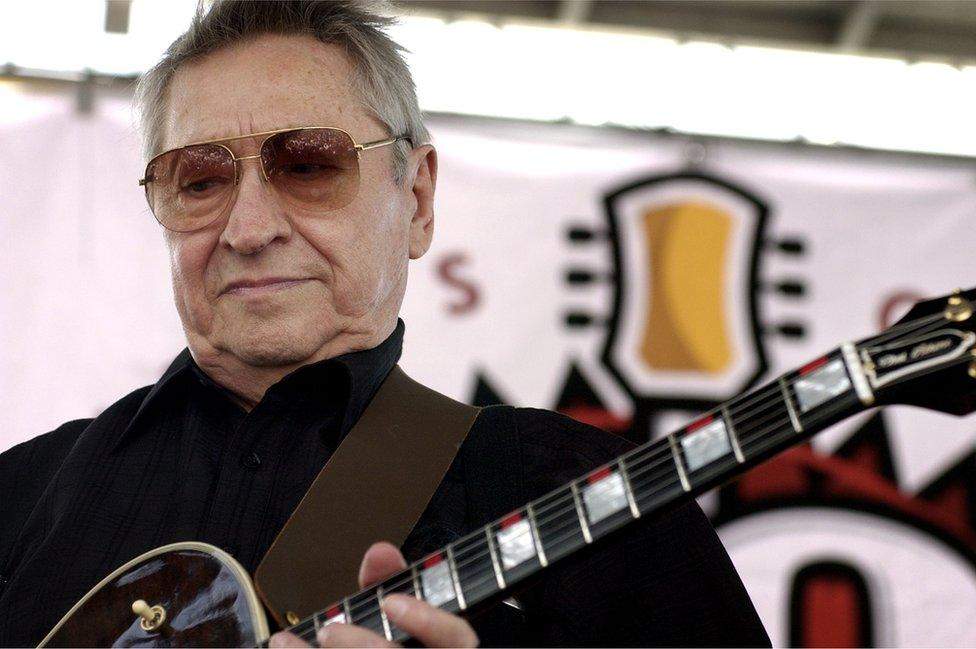
Scotty Moore laid the foundation for rock and roll guitar as Elvis Presley’s lead guitarist. His innovative riffs and solos on tracks like “Heartbreak Hotel” helped shape the sound of the genre. Moore’s influence on rock guitarists, from Keith Richards to Jimmy Page, remains immeasurable.
53. Adrian Smith

Adrian Smith’s melodic lead work and sharp songwriting have been instrumental in Iron Maiden’s success. Tracks like “Wasted Years” showcase his technical precision and emotional depth. Smith’s ability to balance intricate solos with memorable riffs makes him a cornerstone of heavy metal guitar.
52. Chet Atkins
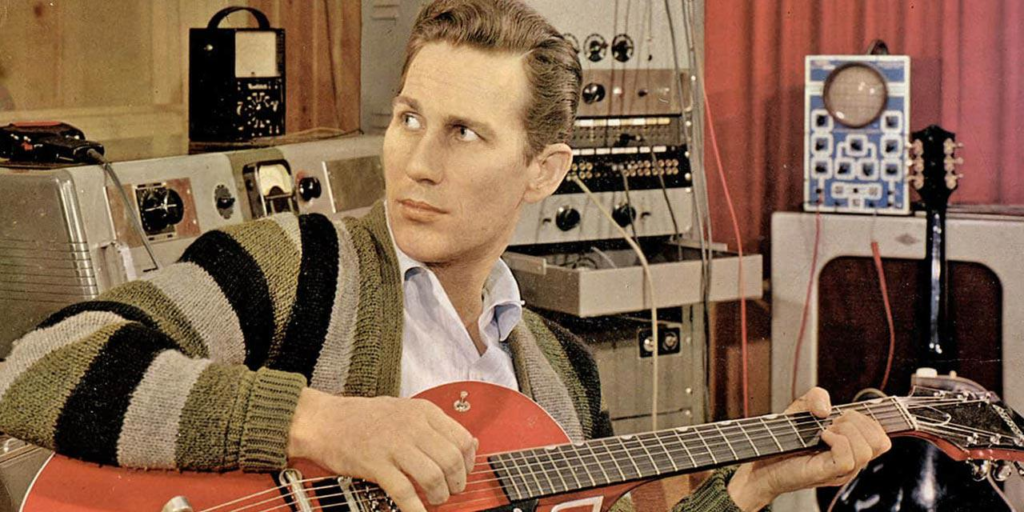
Chet Atkins elevated country guitar with his pioneering fingerstyle technique and genre-defying versatility. Tracks like “Mr. Sandman” highlight his ability to weave melody, harmony, and rhythm into a seamless whole. Atkins’ contributions as a player and producer have left an indelible mark on country and popular music.
51. The Edge
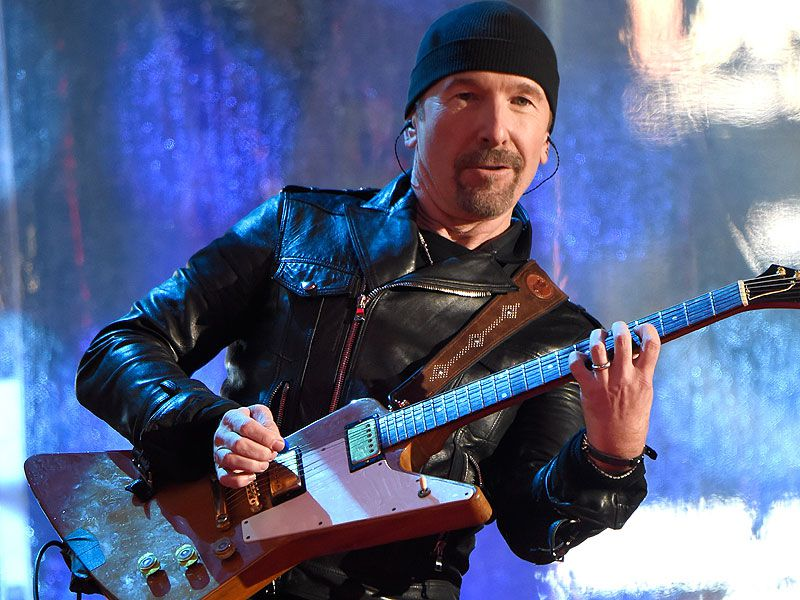
The Edge redefined the role of guitar in rock music with his atmospheric and effects-driven sound as a member of U2. Tracks like “Where the Streets Have No Name” demonstrate his innovative use of delay and layering. His minimalist yet powerful style has influenced countless guitarists and reshaped modern rock.
50. Robby Krieger
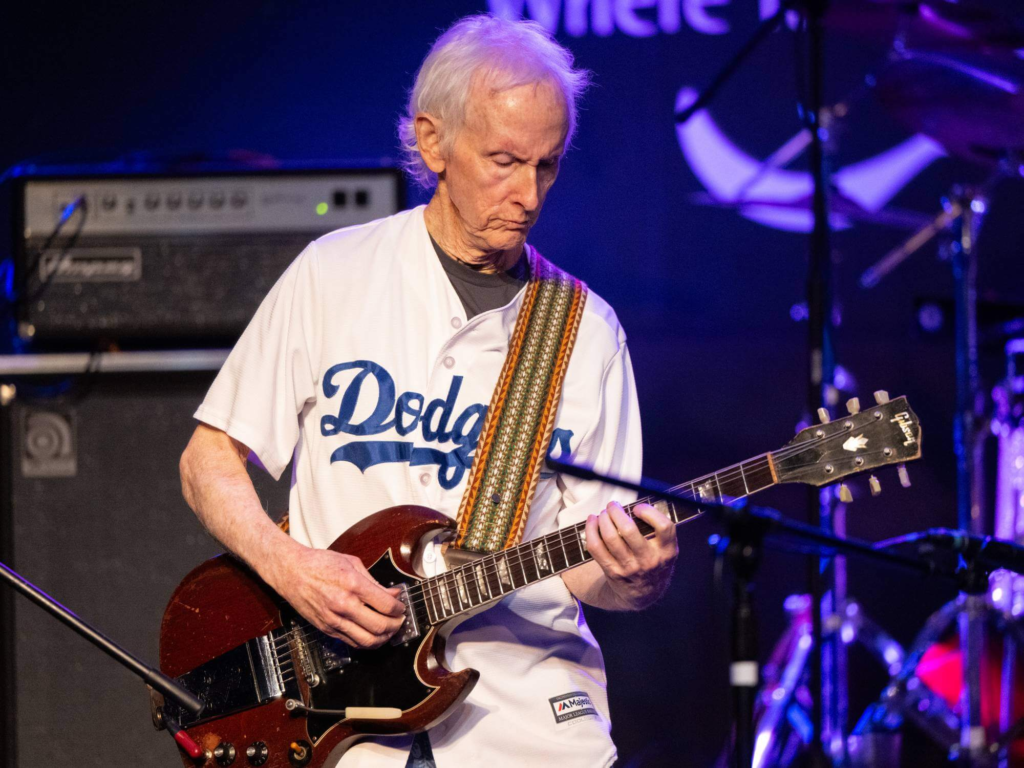
Robby Krieger brought a unique blend of flamenco, blues, and jazz influences to The Doors’ sound. His work on tracks like “Light My Fire” showcases his ability to craft melodic, genre-defying solos. Krieger’s innovative approach to the guitar remains a defining element of The Doors’ legacy.
49. John Lee Hooker
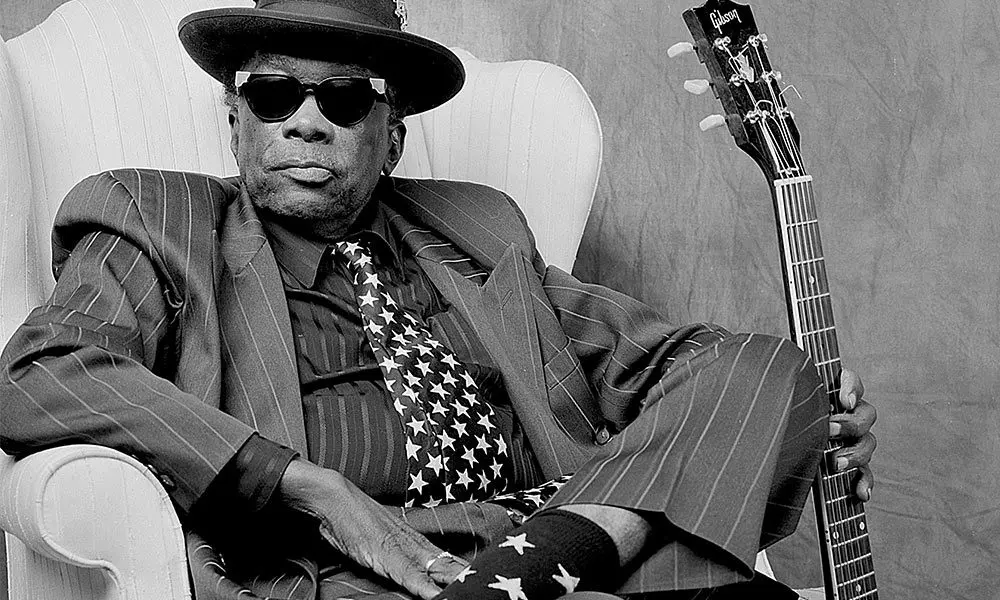
John Lee Hooker’s hypnotic, minimalist playing style revolutionized the blues and influenced countless musicians. Tracks like “Boom Boom” and “Boogie Chillen’” showcase his ability to create driving rhythms and raw emotion with just a few notes. Hooker’s distinctive sound bridged traditional Delta blues and modern electric styles.
48. Frank Zappa
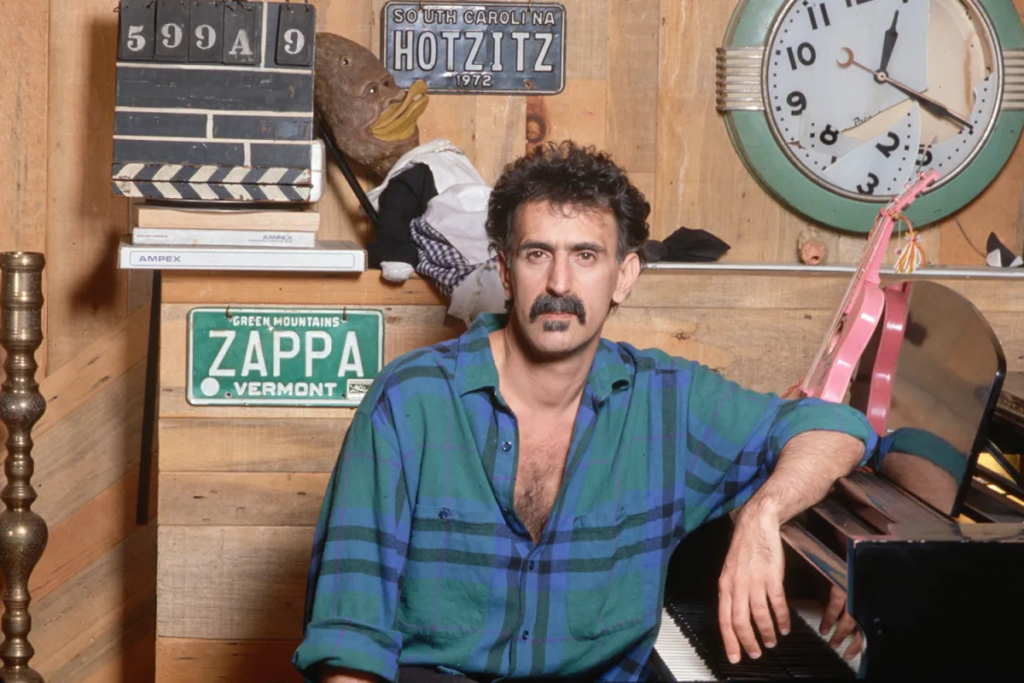
Frank Zappa combined avant-garde composition with virtuosic guitar playing, creating a body of work that defies categorization. His solos on tracks like “Watermelon in Easter Hay” demonstrate his mastery of tone, phrasing, and improvisation. Zappa’s fearless experimentation continues to inspire musicians across all genres.
47. Peter Green
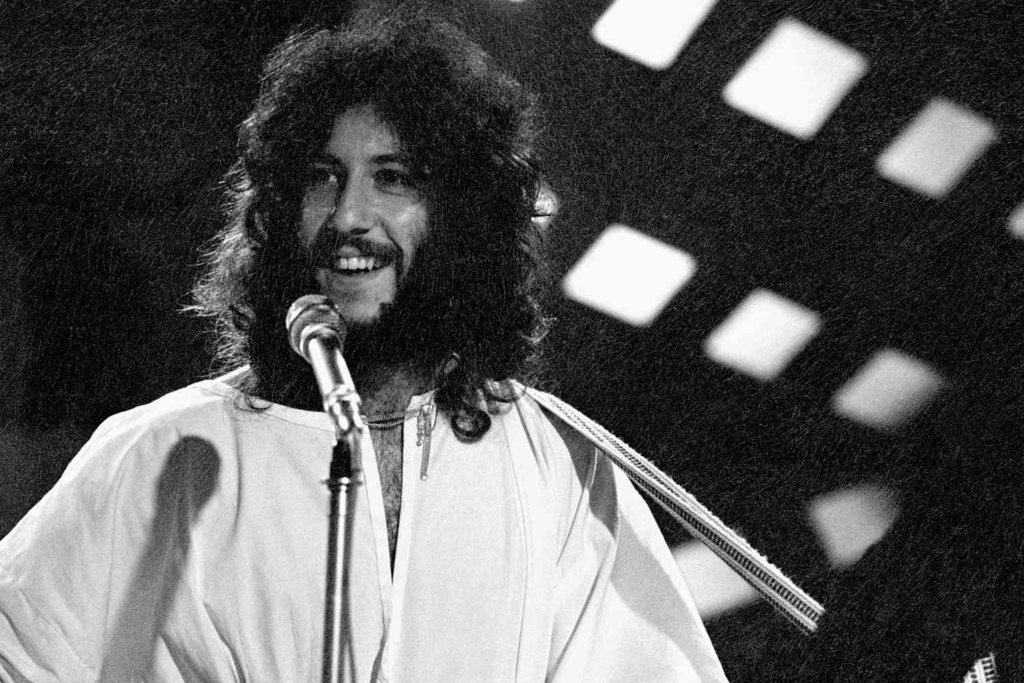
Peter Green brought soul and sensitivity to blues rock as the founder of Fleetwood Mac. Tracks like “Albatross” and “Black Magic Woman” highlight his lyrical phrasing and emotional depth. Green’s influence on blues guitar remains profound, even after his departure from the limelight.
46. Elmore James
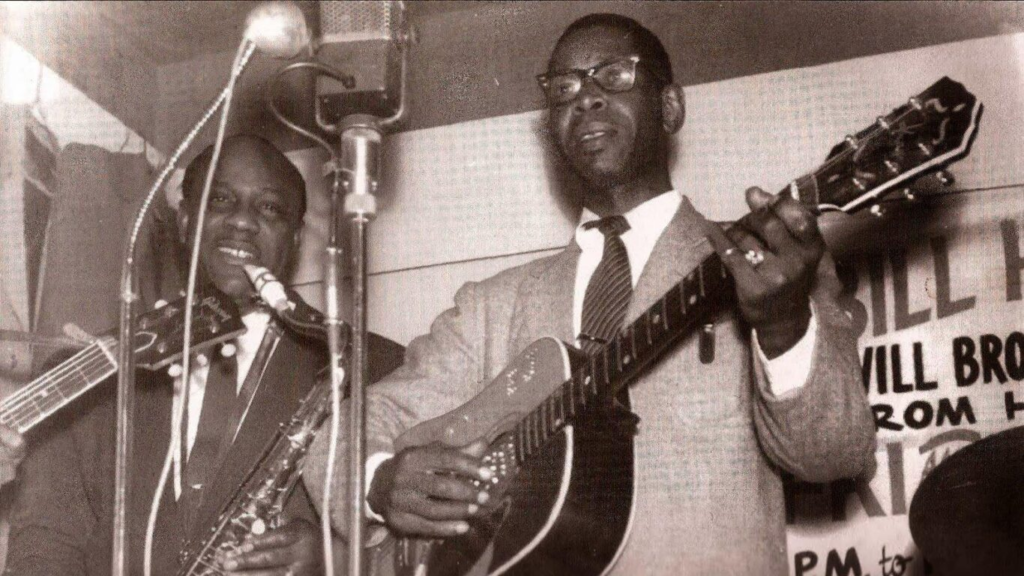
Elmore James, often called the “King of the Slide Guitar,” revolutionized the blues with his electrifying style. His signature song, “Dust My Broom,” introduced a slide riff that became iconic in blues and rock. James’ raw, passionate playing paved the way for generations of slide guitarists.
45. Jonny Greenwood

Jonny Greenwood expanded the boundaries of guitar playing as the lead guitarist for Radiohead. His inventive use of effects, alternate tunings, and unorthodox techniques shines on tracks like “Paranoid Android.” Greenwood’s experimental approach has redefined what a guitarist can achieve in modern rock.
44. Andy Summers
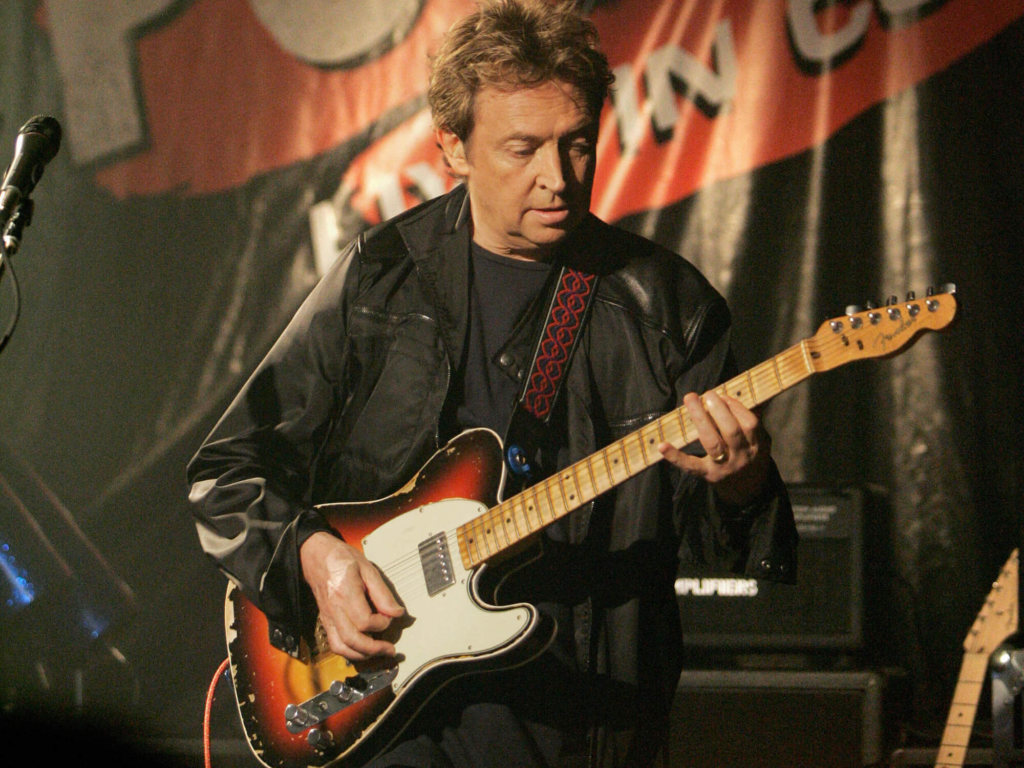
Andy Summers crafted lush, textural soundscapes as the guitarist for The Police. His work on songs like “Every Breath You Take” demonstrates his ability to blend melody and atmosphere with precision. Summers’ innovative use of effects and jazz-inspired voicings helped shape the sound of the ’80s.
43. Robert Fripp
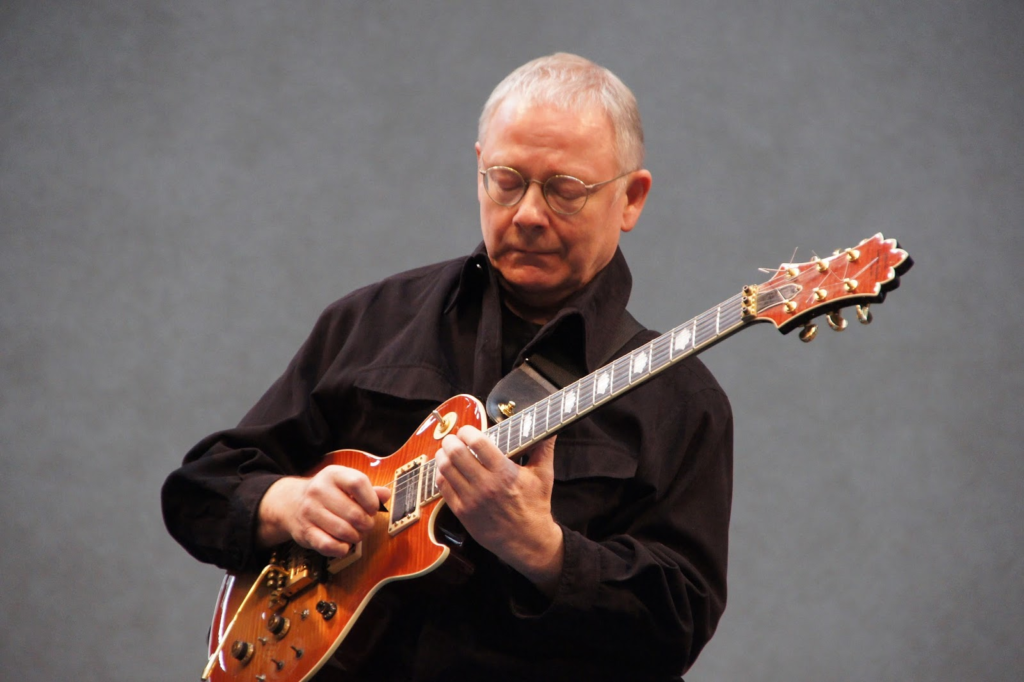
Robert Fripp brought cerebral complexity and technical brilliance to progressive rock as the guitarist for King Crimson. His groundbreaking work on tracks like “21st Century Schizoid Man” introduced new levels of precision and experimentation. Fripp’s influence extends beyond his playing, thanks to his work in ambient music and collaborations.
42. Steve Vai

Steve Vai elevated shred guitar to new artistic heights with his virtuosic technique and innovative compositions. Albums like Passion and Warfare showcase his ability to merge technical mastery with emotional depth. Vai’s influence extends across genres, making him one of the most respected guitarists of all time.
41. Tom Morello
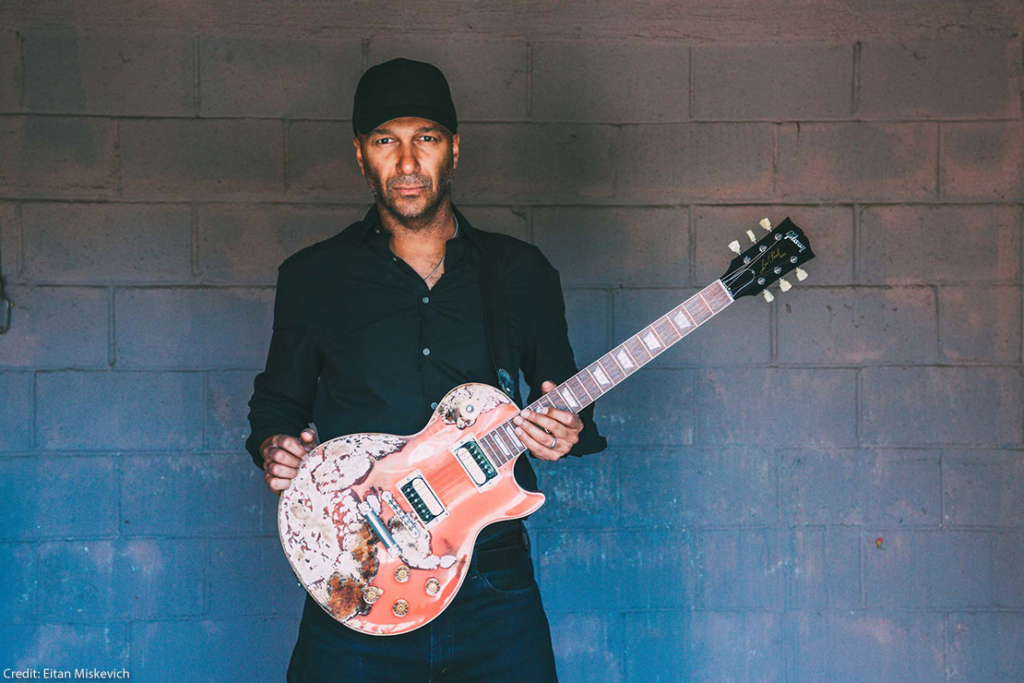
Tom Morello redefined guitar playing with his unconventional techniques and politically charged work in Rage Against the Machine. Tracks like “Bulls on Parade” highlight his innovative use of effects, scratching, and feedback. Morello’s unique style has inspired a generation of guitarists to think outside the box.
40. Mick Taylor
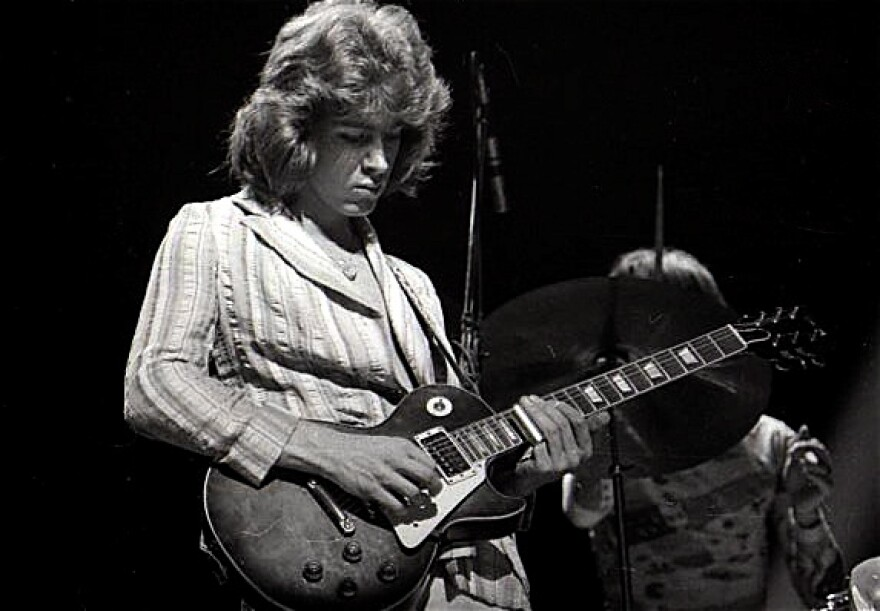
Mick Taylor brought a refined blues sensibility and technical precision to The Rolling Stones during their most celebrated period. His fluid slide work and melodic solos on tracks like “Time Waits for No One” and “Can’t You Hear Me Knocking” elevated the band’s sound. Taylor’s contributions remain a high point in the Stones’ legendary catalog.
39. Muddy Waters
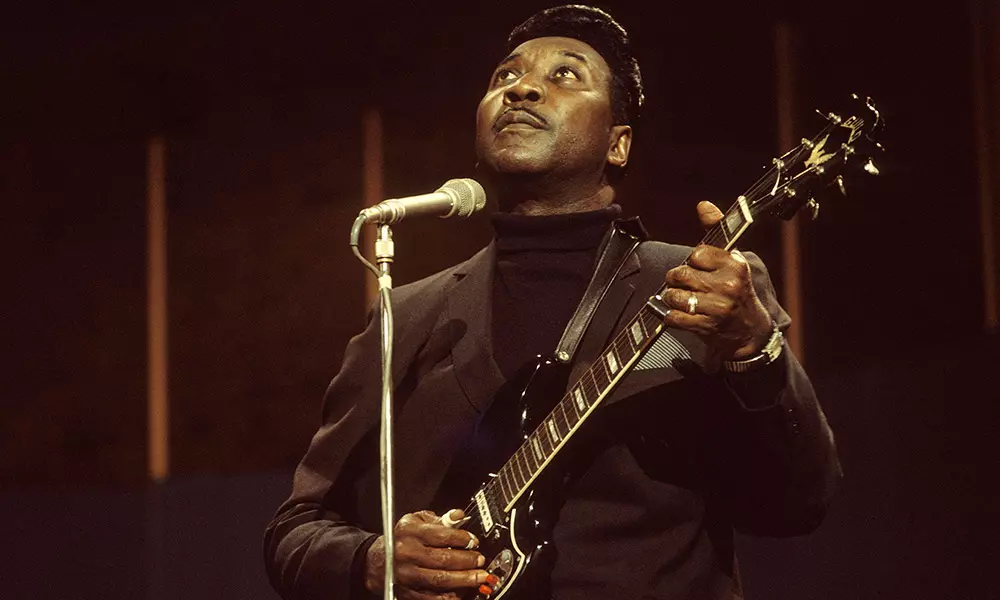
Muddy Waters electrified the blues and laid the foundation for modern rock and roll with his powerful guitar playing. Tracks like “Hoochie Coochie Man” and “Mannish Boy” showcase his commanding style and distinctive slide technique. Waters’ influence on blues and rock guitarists is immeasurable, from Eric Clapton to Jimi Hendrix.
38. Billy Gibbons
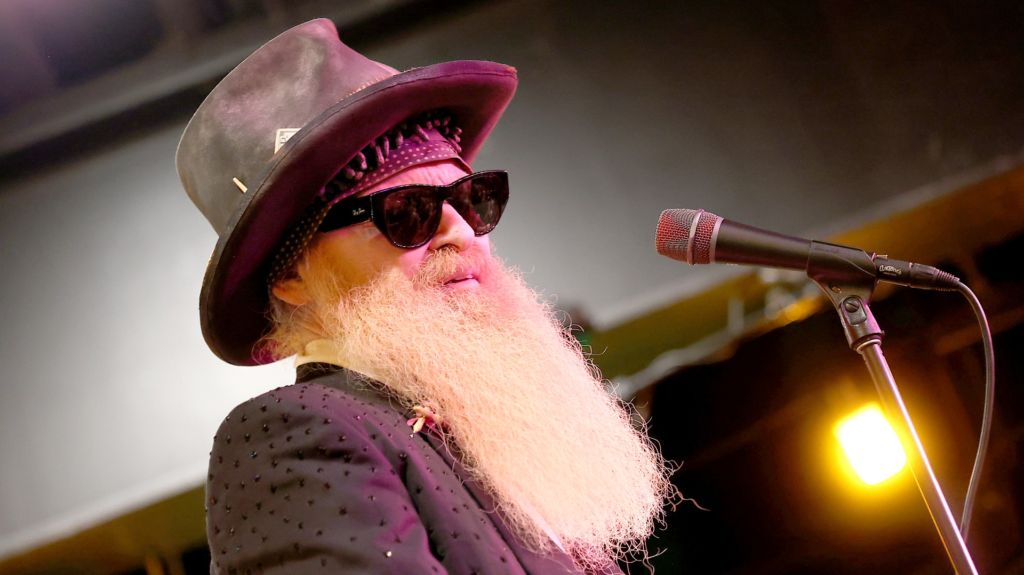
Billy Gibbons fused Texas blues and hard rock into a gritty, signature sound as the guitarist for ZZ Top. His work on hits like “La Grange” and “Sharp Dressed Man” demonstrates his mastery of tone, groove, and attitude. Gibbons’ distinct style has made him an enduring icon in rock and blues.
37. Johnny Marr
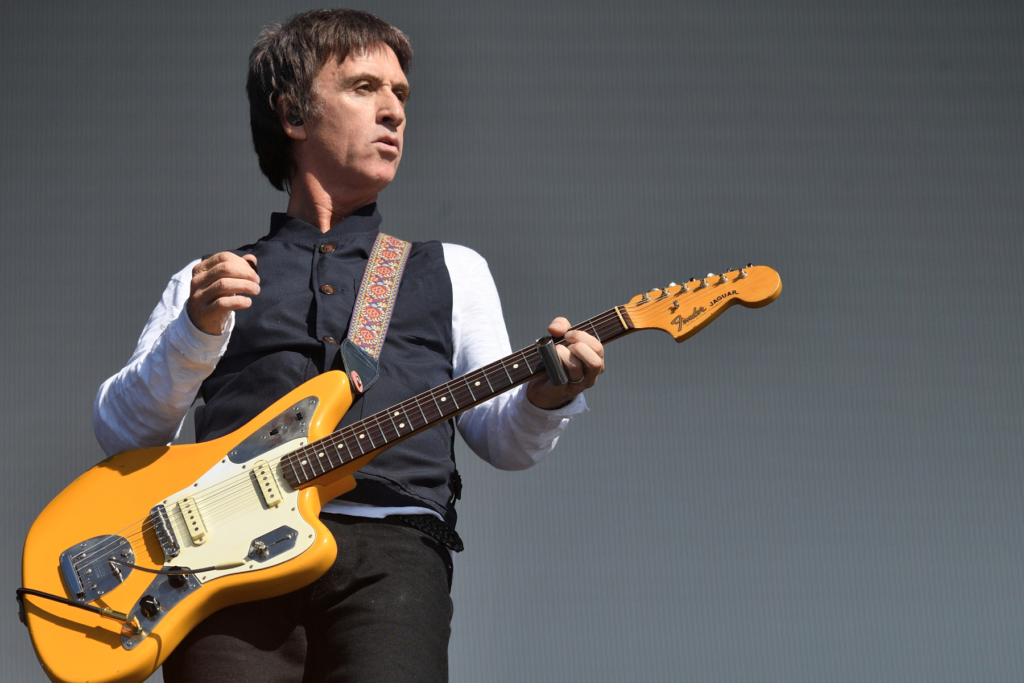
Johnny Marr’s jangly, intricate guitar work with The Smiths set a new standard for alternative rock. Tracks like “This Charming Man” highlight his ability to craft melodic, multi-layered parts that elevate a song’s emotional depth. Marr’s innovative approach has influenced countless guitarists in indie and alternative music.
36. Rory Gallagher
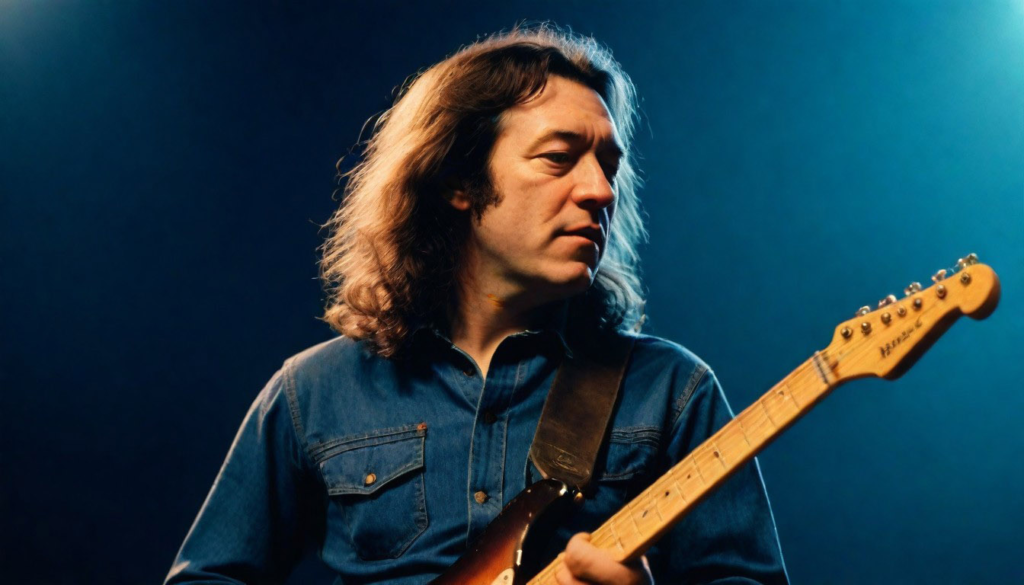
Rory Gallagher delivered fiery blues rock with unrelenting passion and a raw, unpolished tone. His performances on tracks like “Tattoo’d Lady” and “A Million Miles Away” showcased his soulful phrasing and boundless energy. Gallagher’s reputation as a live performer and recording artist continues to inspire blues and rock guitarists alike.
35. Robert Johnson
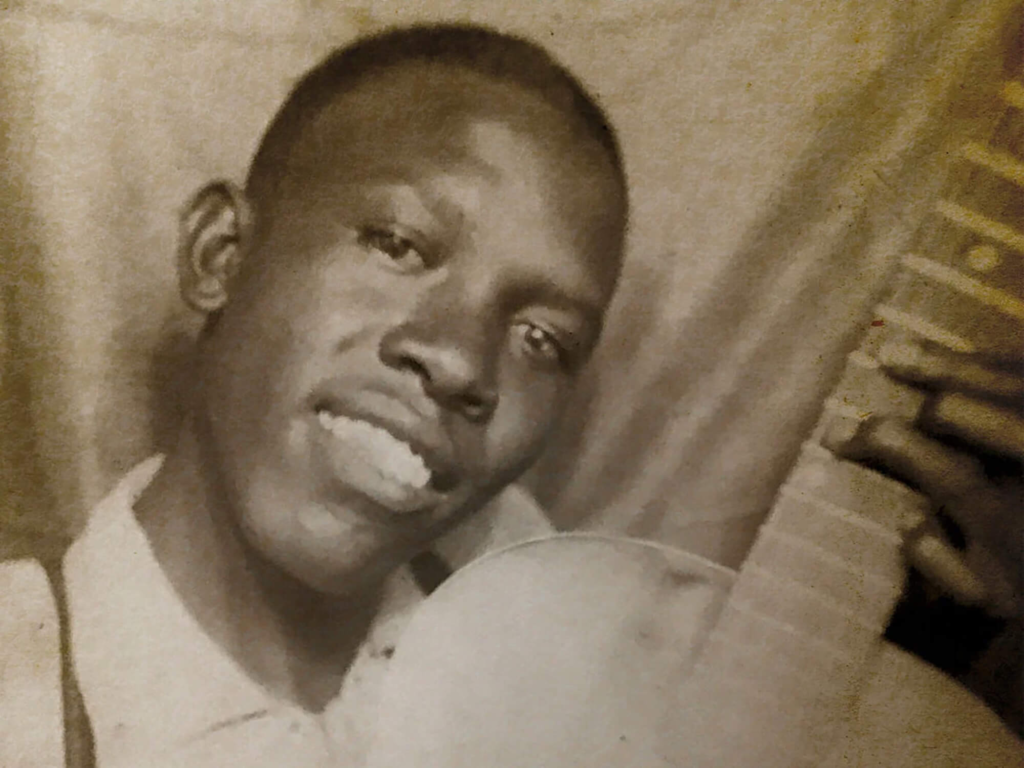
Robert Johnson’s haunting slide work and evocative songwriting established him as a cornerstone of Delta blues. Songs like “Cross Road Blues” and “Love in Vain” remain timeless examples of his technical skill and emotional depth. Johnson’s influence on blues and rock is foundational, shaping the music of legends like Clapton and Dylan.
34. Dimebag Darrell

Dimebag Darrell revolutionized metal guitar with his razor-sharp riffs and explosive solos as the driving force behind Pantera. Tracks like “Walk” and “Cemetery Gates” display his ability to combine groove, aggression, and melodic sensibility. Dimebag’s influence on modern metal is unparalleled, and his legacy remains deeply revered.
33. John Frusciante

John Frusciante brought emotional depth and funk-inspired grooves to the Red Hot Chili Peppers during their peak years. His work on tracks like “Under the Bridge” and “Scar Tissue” showcases his melodic instincts and dynamic playing. Frusciante’s contributions have left an indelible mark on alternative rock.
32. Angus Young
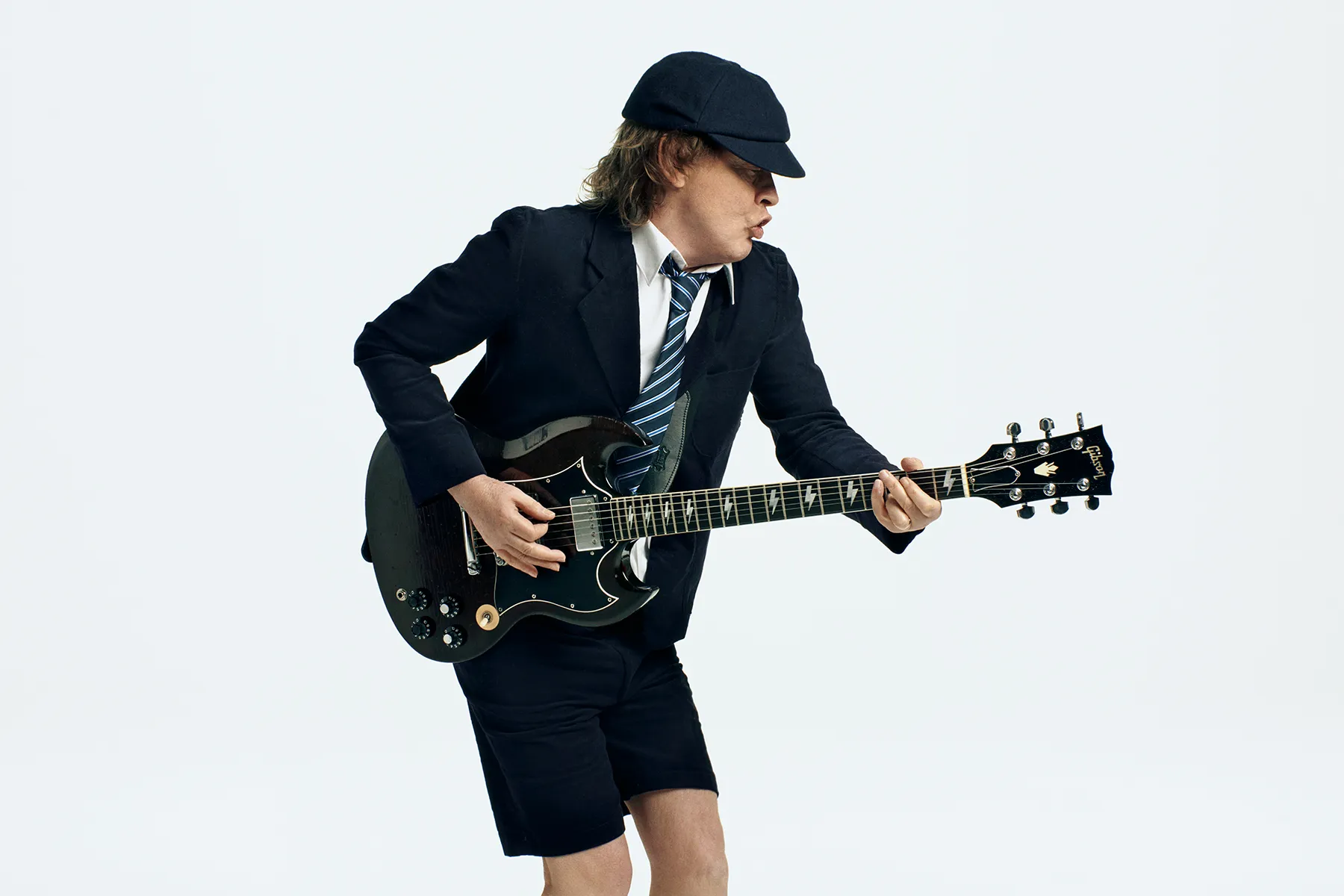
Angus Young’s blistering solos and high-energy riffs define the hard rock anthems of AC/DC. Tracks like “Highway to Hell” and “Back in Black” exemplify his raw, blues-based style and electrifying stage presence. Young’s relentless energy and iconic schoolboy outfit have made him a legend in rock history.
31. Lindsey Buckingham

Lindsey Buckingham blended intricate fingerpicking with pop sensibilities to craft Fleetwood Mac’s iconic sound. Tracks like “Go Your Own Way” and “Big Love” highlight his technical prowess and innovative approach to songwriting. Buckingham’s contributions remain central to Fleetwood Mac’s enduring success and legacy.
30. Sister Rosetta Tharpe

Sister Rosetta Tharpe pioneered the fusion of gospel and electric guitar, laying the groundwork for rock and roll. Her fiery performances on tracks like “Strange Things Happening Every Day” showcased her virtuosic technique and charismatic presence. Tharpe’s groundbreaking influence resonates through generations of rock, blues, and gospel musicians.
29. Joe Walsh

Joe Walsh brought a unique blend of humor, soul, and technical brilliance to his work with the Eagles and as a solo artist. Tracks like “Life in the Fast Lane” and “Rocky Mountain Way” highlight his searing slide work and melodic sensibilities. Walsh’s contributions to rock remain vital, blending timeless craftsmanship with a playful edge.
28. Kirk Hammett

Kirk Hammett’s fiery solos and intricate riffs have been integral to Metallica’s dominance in heavy metal. Tracks like “One” and “Enter Sandman” showcase his melodic phrasing and technical mastery. Hammett’s blend of speed and emotion continues to set a high standard for lead guitarists in metal.
27. Jerry Garcia
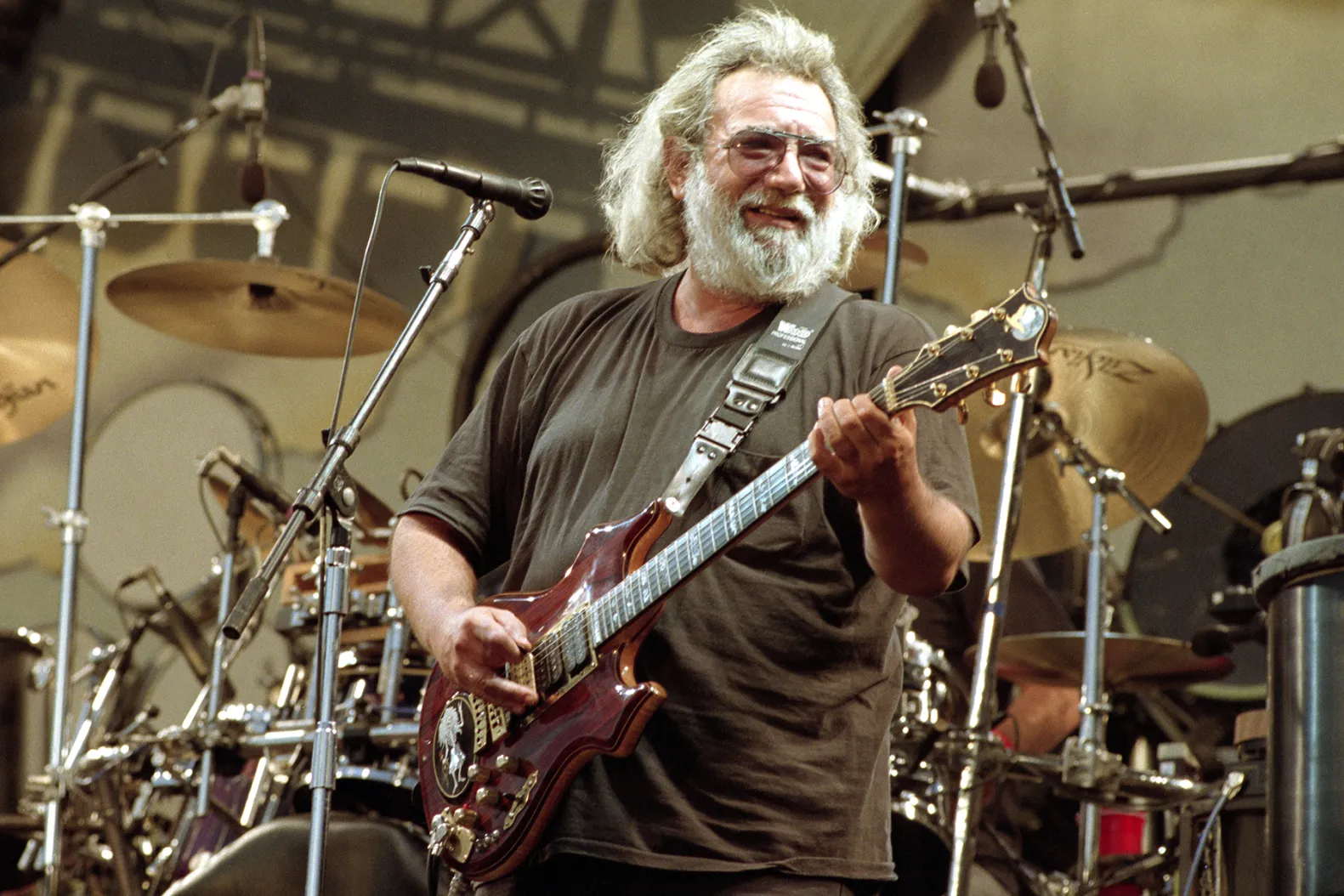
Jerry Garcia’s improvisational genius and eclectic influences defined the Grateful Dead’s signature sound. Tracks like “Truckin’” and “Dark Star” highlight his fluid, exploratory style that blended folk, rock, and jazz. Garcia’s impact on jam bands and American music culture remains profound and enduring.
26. Les Paul
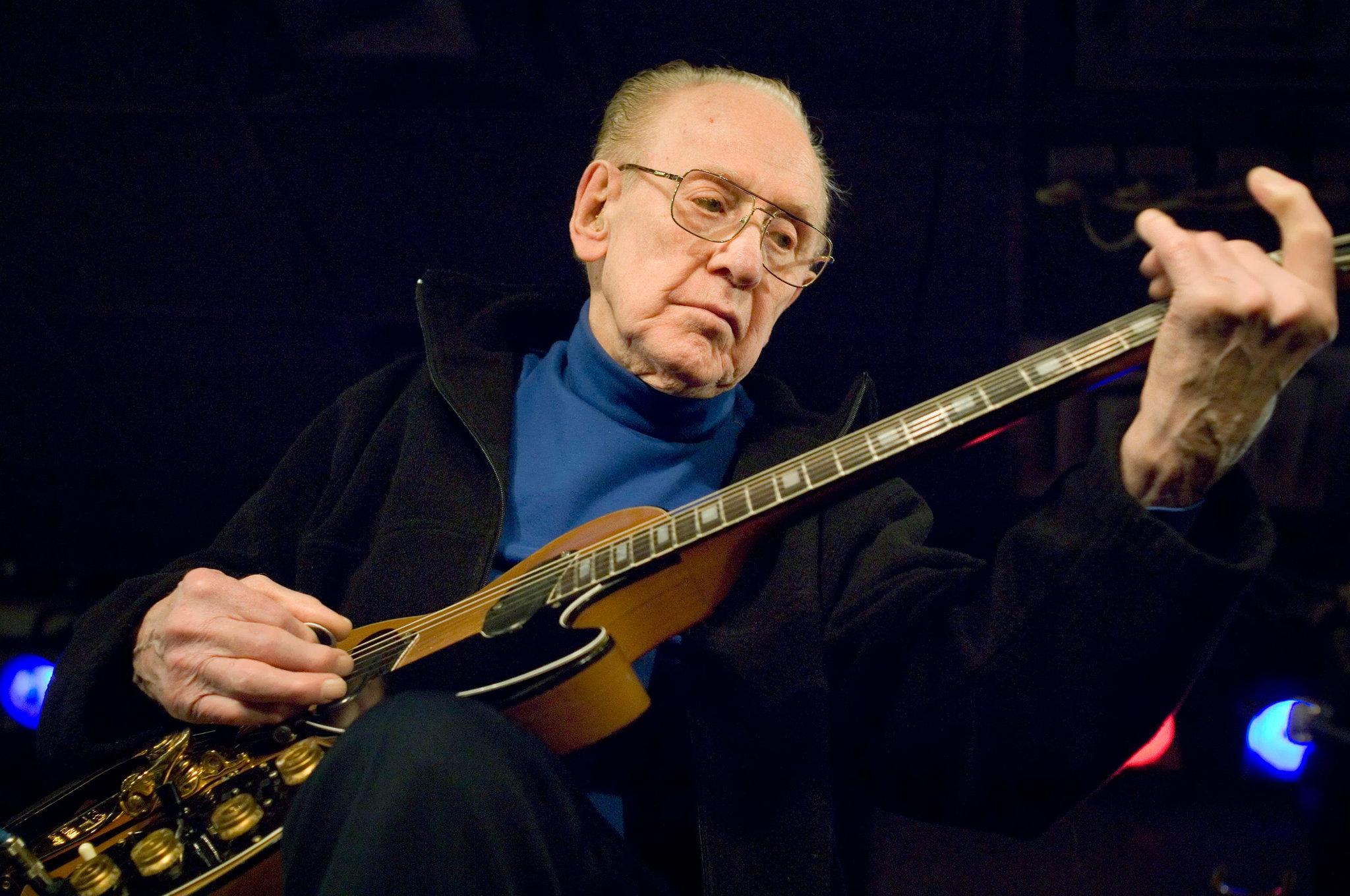
Les Paul revolutionized music not only as a guitarist but as an inventor of the solid-body electric guitar and multi-track recording. His innovative playing on tracks like “How High the Moon” displayed both technical skill and a visionary approach. Les Paul’s legacy as a musician and pioneer is foundational to the evolution of modern music.
25. Prince
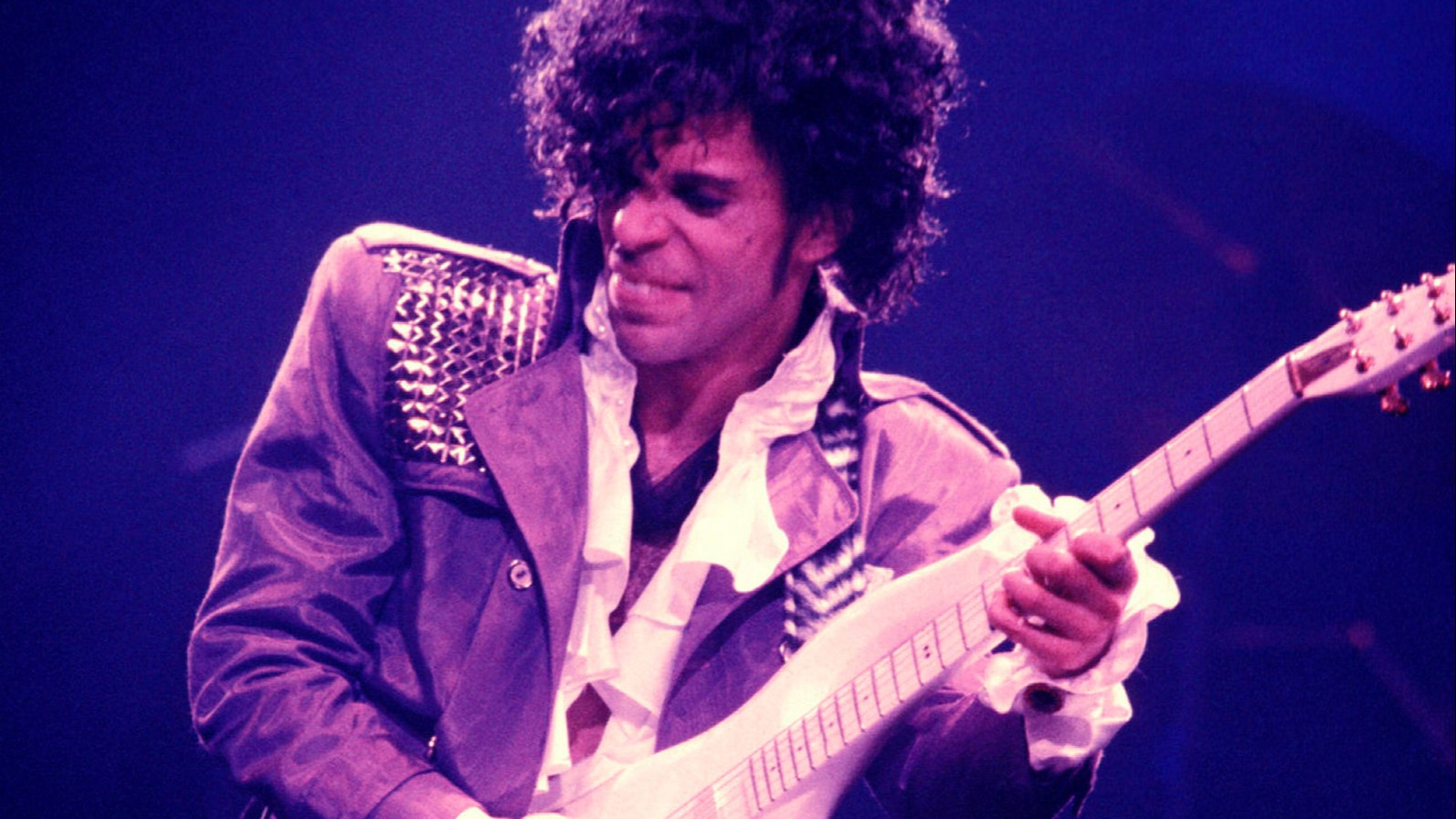
Prince redefined the boundaries of guitar playing with his eclectic style and unparalleled showmanship. Tracks like “Purple Rain” and “When Doves Cry” display his ability to channel raw emotion through stunning solos and inventive rhythm work. Prince’s artistry extended far beyond guitar, but his contributions to the instrument remain legendary.
24. Slash
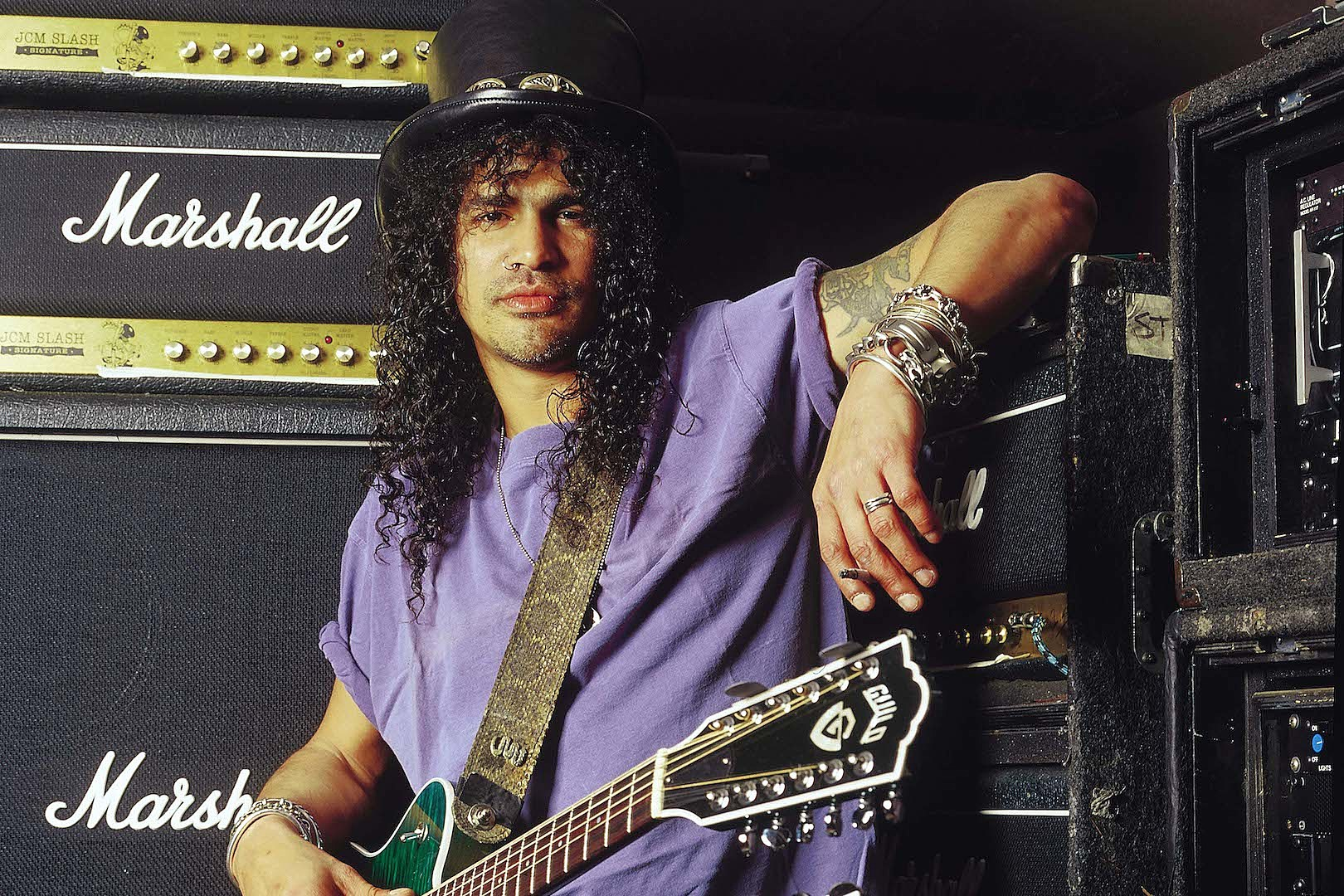
Slash’s blistering solos and unforgettable riffs helped define the sound of Guns N’ Roses during their meteoric rise. Tracks like “Sweet Child o’ Mine” and “November Rain” showcase his blues-infused style and iconic tone. Slash’s image and playing continue to embody the spirit of hard rock.
23. Freddie King
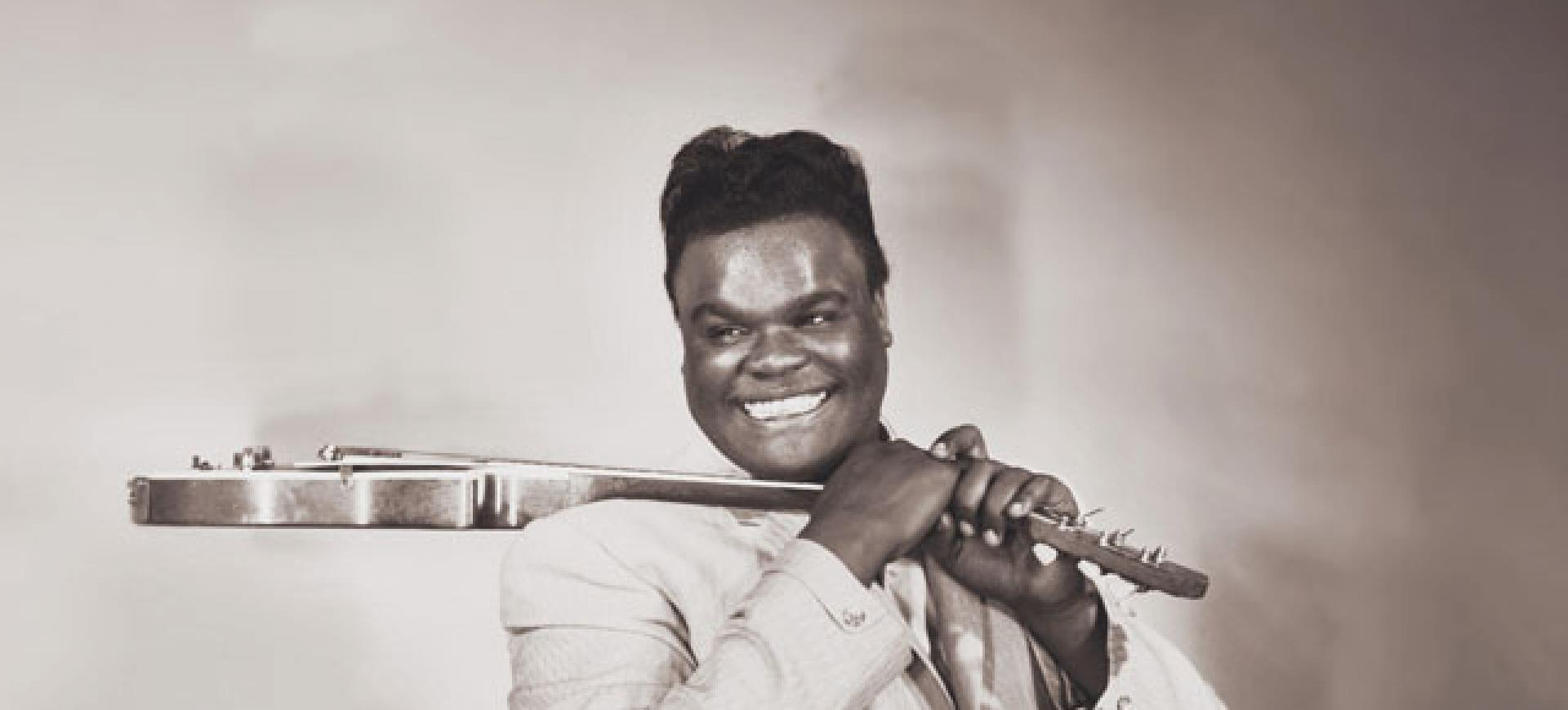
Freddie King delivered powerful, soulful blues guitar that bridged the gap between traditional blues and rock. Tracks like “Going Down” and “Hide Away” highlight his sharp phrasing and dynamic attack. King’s influence spans generations, shaping the playing of icons like Eric Clapton and Stevie Ray Vaughan.
22. Alex Lifeson
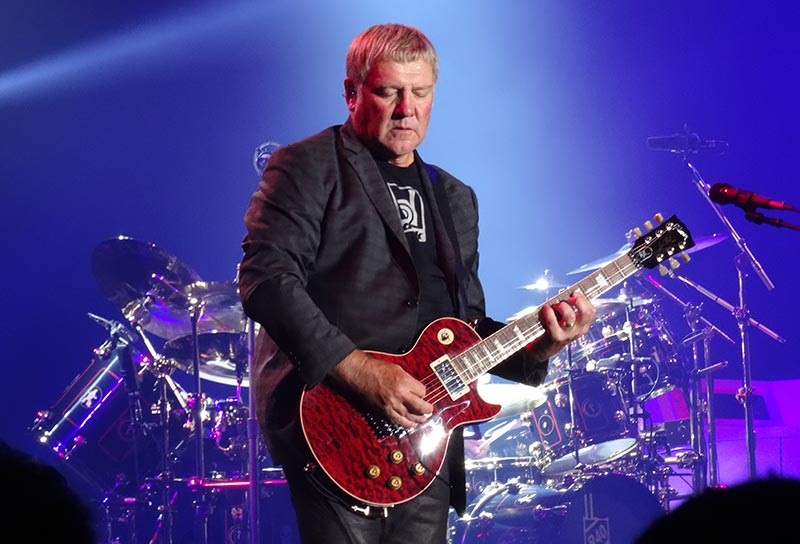
Alex Lifeson infused Rush’s progressive rock epics with a blend of technical brilliance and emotional depth. Tracks like “Tom Sawyer” and “Limelight” showcase his intricate chord voicings and soaring solos. Lifeson’s innovative approach to guitar helped shape the sound of progressive rock and inspire countless players.
21. Randy Rhoads
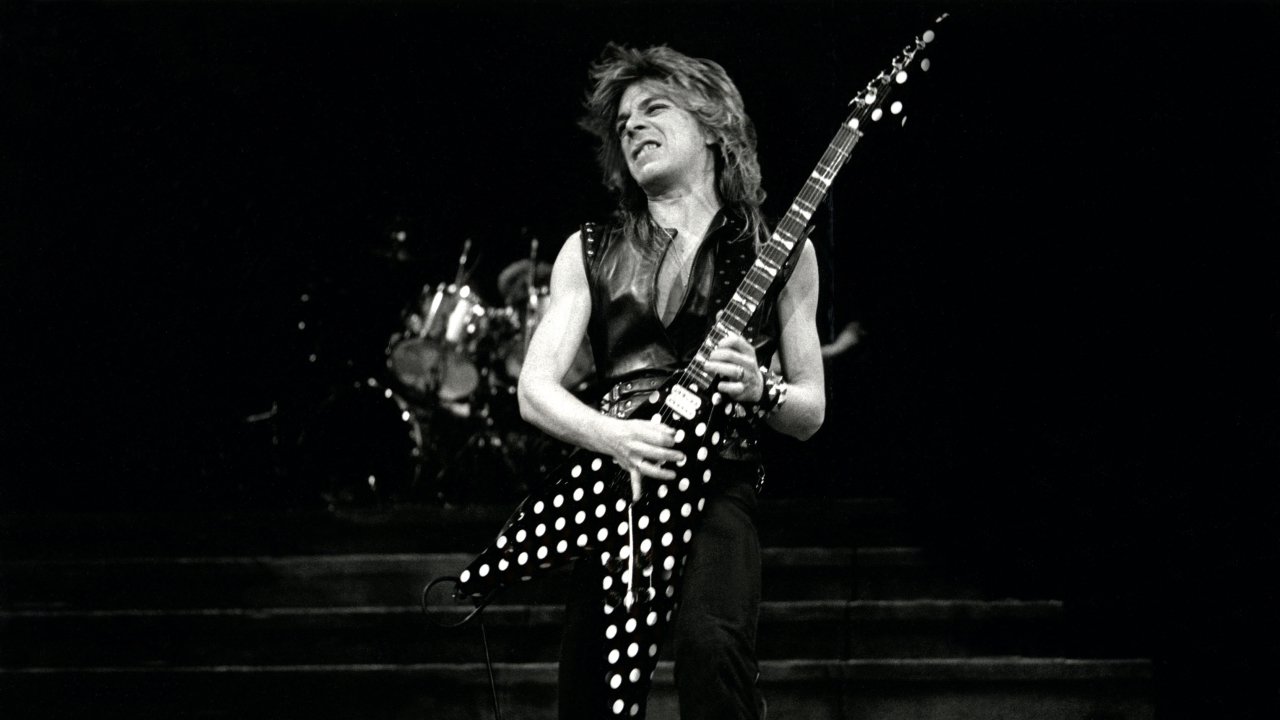
Randy Rhoads brought neo-classical precision and unmatched creativity to his work with Ozzy Osbourne. Tracks like “Crazy Train” and “Mr. Crowley” feature his virtuosic solos and groundbreaking compositions. Rhoads’ tragic early death only underscores the immense impact he made in his brief career.
20. Buddy Guy

Buddy Guy’s electrifying guitar work and passionate performances bridged the gap between traditional blues and rock. Tracks like “Damn Right, I’ve Got the Blues” showcase his fiery solos and emotional depth. Guy’s influence on legends like Jimi Hendrix, Eric Clapton, and Stevie Ray Vaughan cements his status as a blues icon.
19. Pete Townshend

Pete Townshend revolutionized rock guitar as the driving force behind The Who’s explosive sound. His power chords and aggressive playing on tracks like “My Generation” and “Won’t Get Fooled Again” set the blueprint for hard rock. Townshend’s pioneering use of feedback and theatrics helped define rock as an art form.
18. Carlos Santana
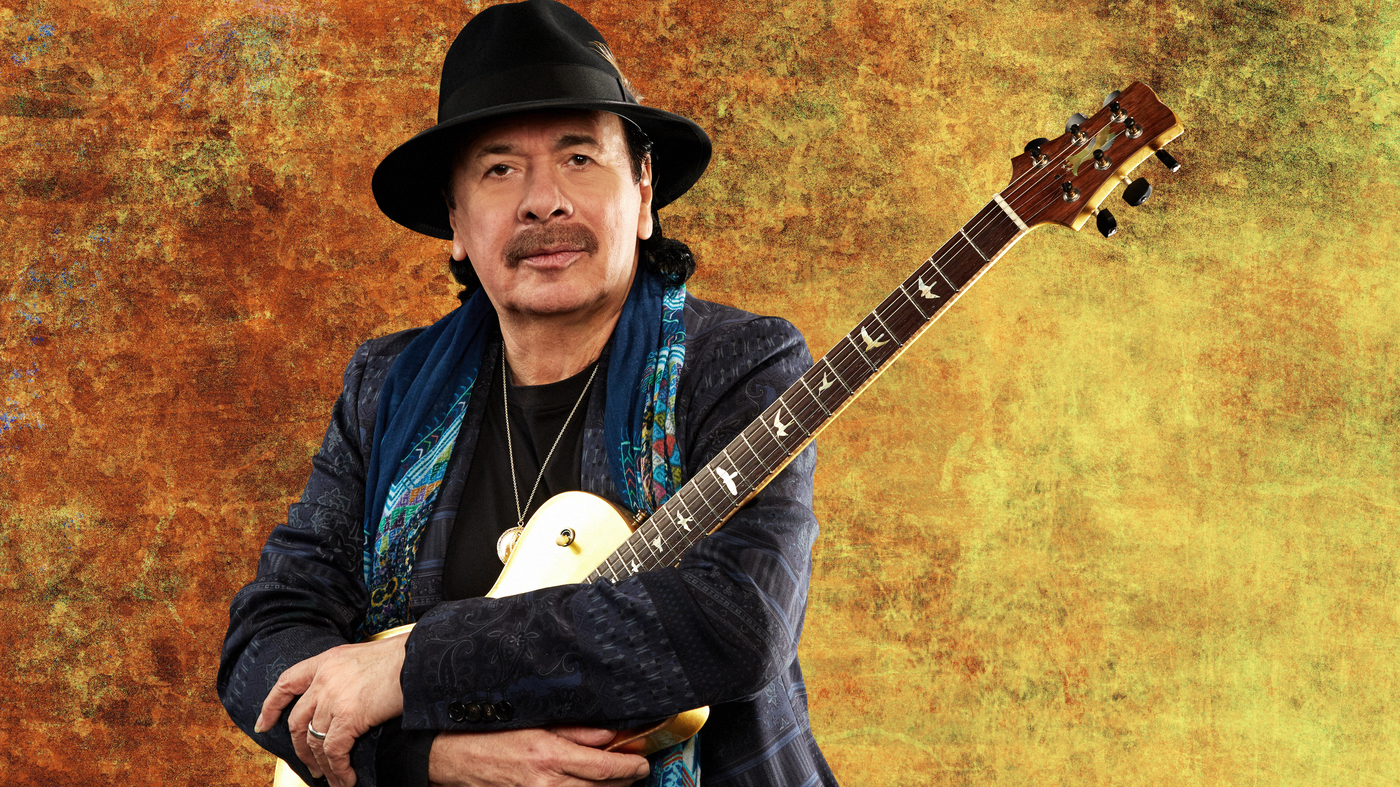
Carlos Santana’s soaring, Latin-infused guitar style introduced a new voice to rock music. Tracks like “Black Magic Woman” and “Oye Como Va” highlight his melodic phrasing and distinctive tone. Santana’s fusion of rock, blues, and Afro-Cuban rhythms has left an indelible mark on popular music.
17. Albert King
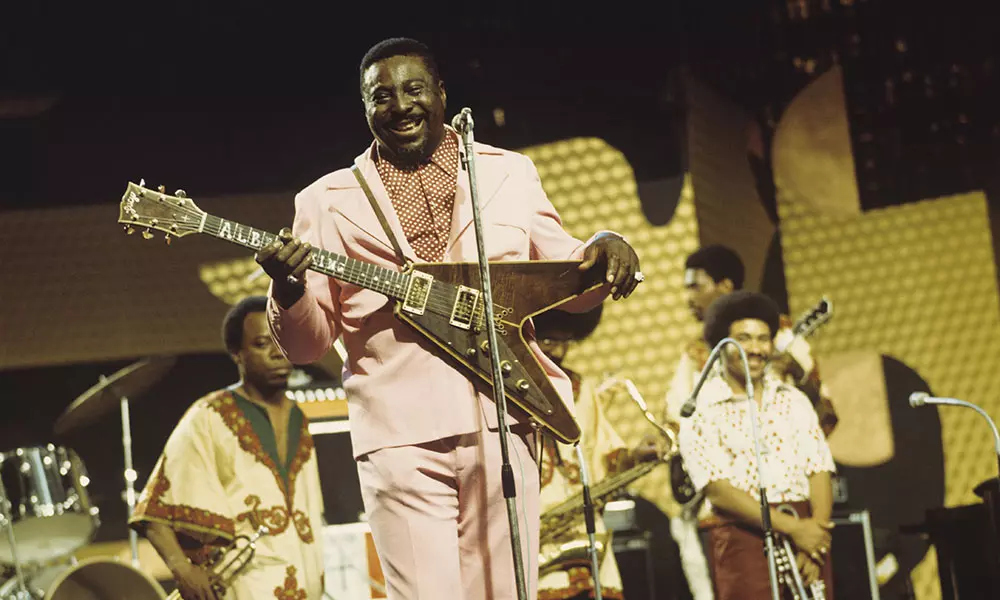
Albert King’s stinging bends and emotive phrasing made him one of the most influential blues guitarists of all time. Tracks like “Born Under a Bad Sign” and “Crosscut Saw” showcase his powerful, economical style. King’s left-handed playing and unique approach inspired countless musicians, including Stevie Ray Vaughan.
16. George Harrison
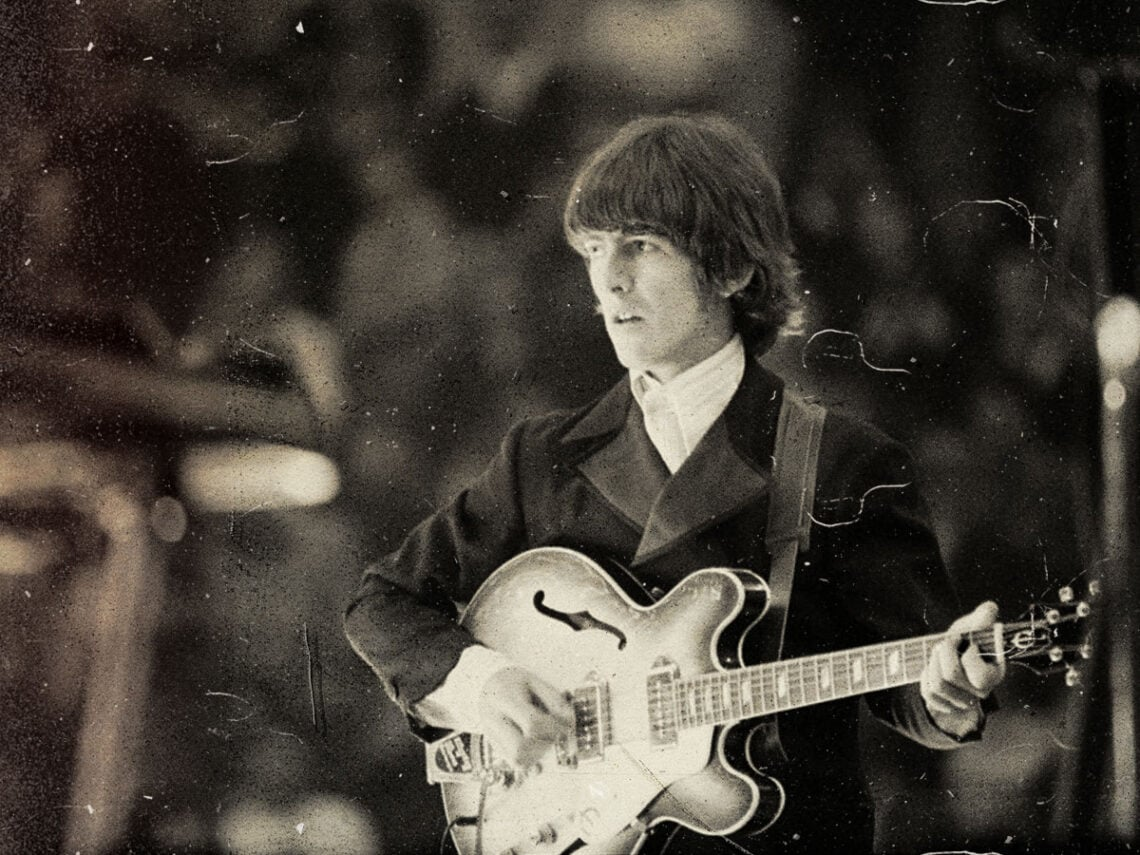
George Harrison brought lyrical sensitivity and innovative textures to The Beatles’ groundbreaking sound. Tracks like “Something” and “While My Guitar Gently Weeps” display his melodic phrasing and understated brilliance. Harrison’s exploration of Indian music and slide guitar expanded the horizons of rock.
15. Mark Knopfler
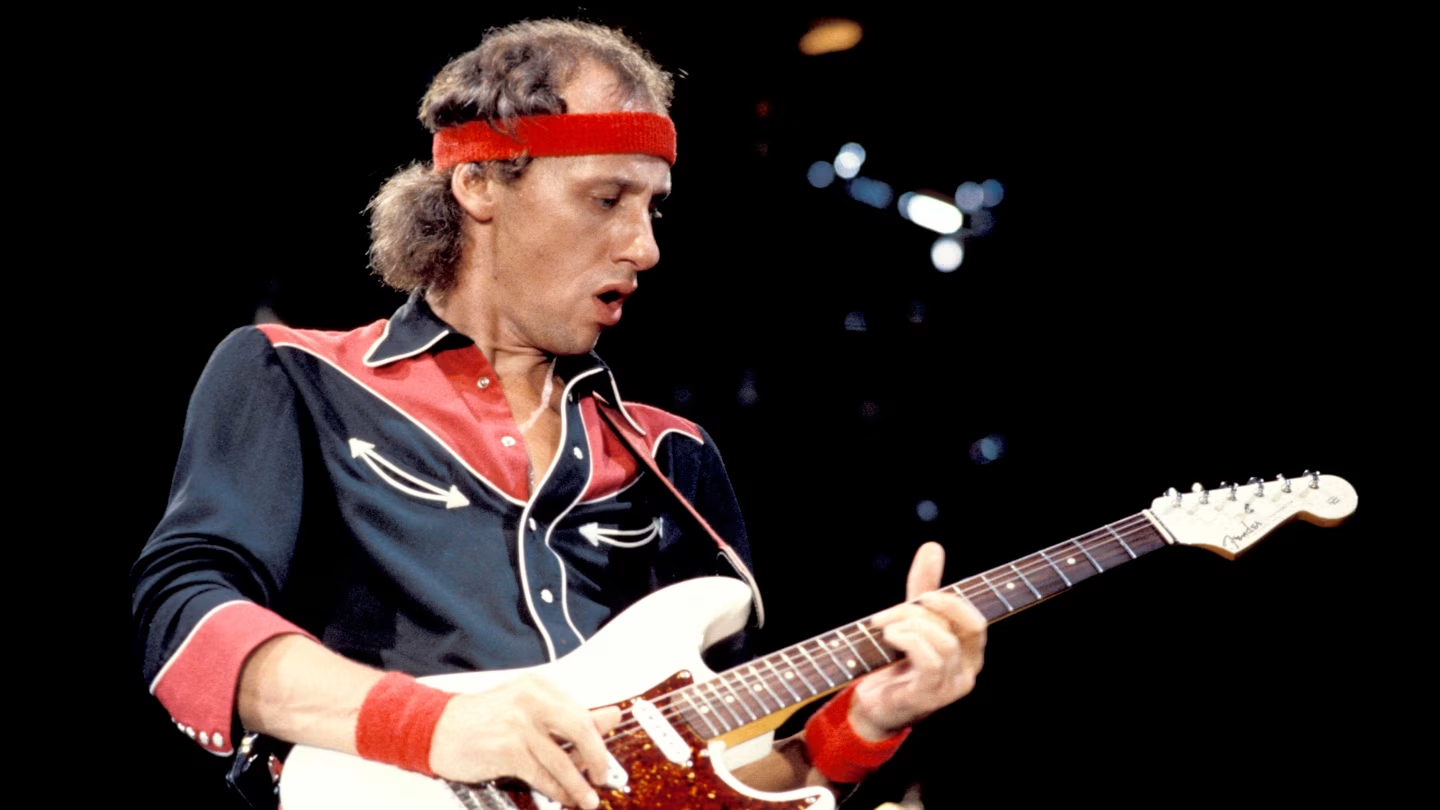
Mark Knopfler’s fingerpicking technique and storytelling lyrics defined Dire Straits’ signature sound. Tracks like “Sultans of Swing” and “Brothers in Arms” showcase his fluid, expressive playing and rich tone. Knopfler’s understated yet virtuosic style continues to resonate with fans and guitarists alike.
14. Duane Allman
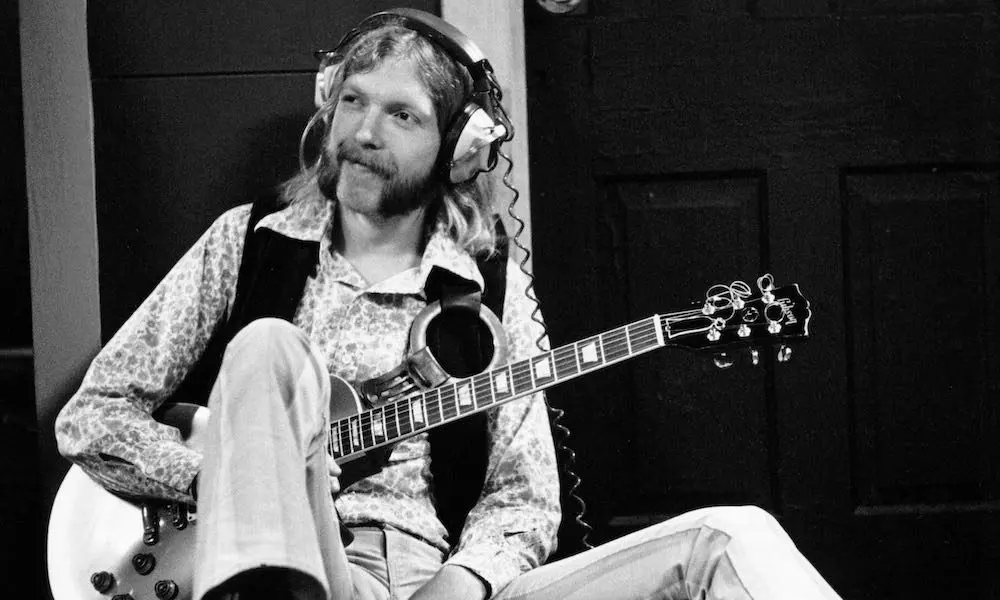
Duane Allman redefined slide guitar with his soulful, improvisational approach as a founder of The Allman Brothers Band. Tracks like “Statesboro Blues” and his work on Derek and the Dominos’ “Layla” highlight his unparalleled mastery of tone and emotion. Allman’s influence on blues and Southern rock remains monumental.
13. Keith Richards

Keith Richards created some of the most iconic riffs in rock history as the rhythmic backbone of The Rolling Stones. Tracks like “(I Can’t Get No) Satisfaction” and “Jumpin’ Jack Flash” showcase his raw, blues-driven style. Richards’ inventive use of open tunings and grooves has defined rock and roll for decades.
12. Chuck Berry
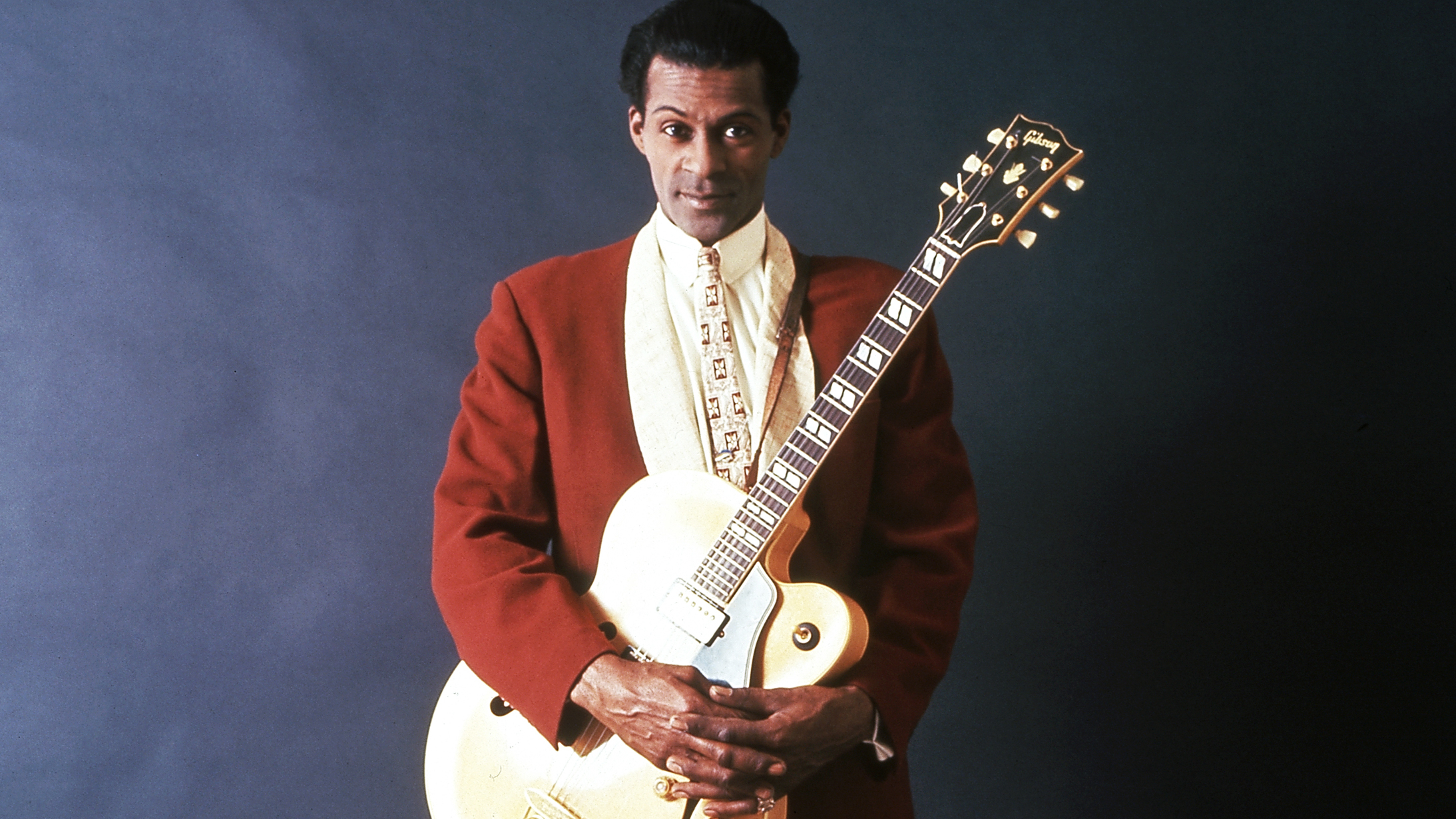
Chuck Berry laid the foundation for rock guitar with his groundbreaking riffs, dynamic solos, and charismatic stage presence. Tracks like “Johnny B. Goode” and “Roll Over Beethoven” exemplify his pioneering style. Berry’s influence on rock guitar is unmatched, shaping the sound of everyone from The Beatles to The Rolling Stones.
11. Ritchie Blackmore
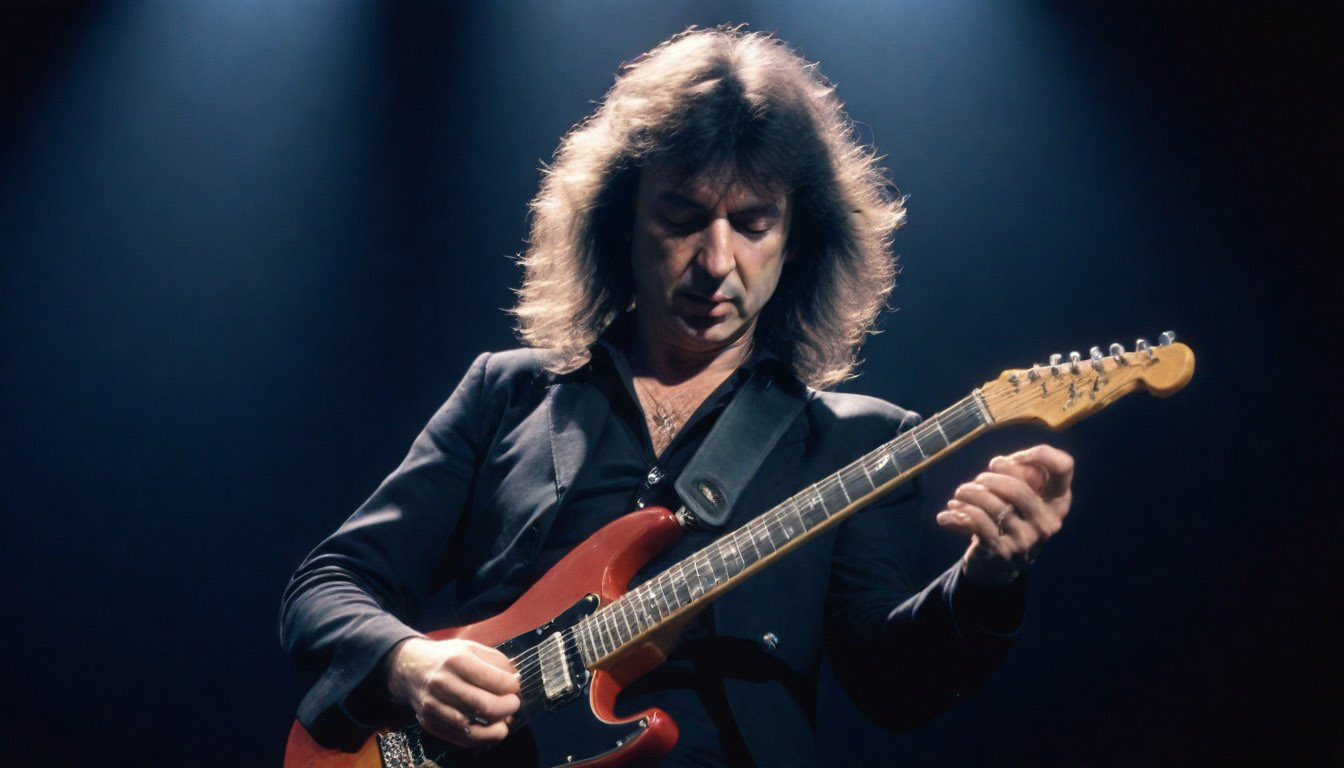
Ritchie Blackmore combined classical precision with raw power to craft Deep Purple’s and Rainbow’s legendary guitar sound. Tracks like “Smoke on the Water” and “Highway Star” highlight his technical brilliance and flair for dramatic melodies. Blackmore’s fusion of classical influences with hard rock helped lay the groundwork for heavy metal.
10. B.B. King
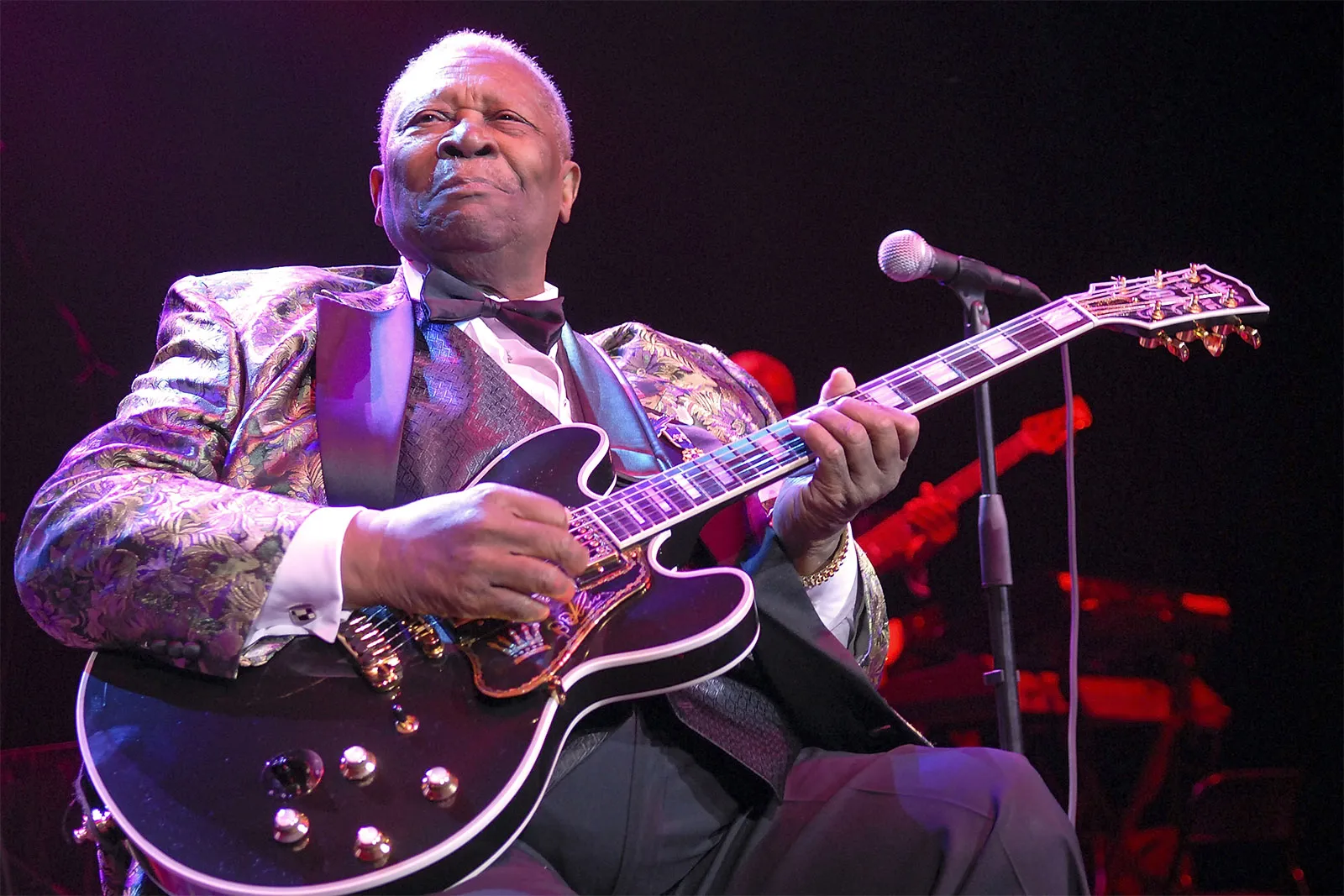
B.B. King’s expressive vibrato and lyrical phrasing redefined blues guitar and inspired generations of musicians. Tracks like “The Thrill Is Gone” and “Every Day I Have the Blues” showcase his ability to convey profound emotion with every note. King’s “Lucille” became a symbol of his artistry, and his legacy remains a cornerstone of blues and rock.
9. Jeff Beck
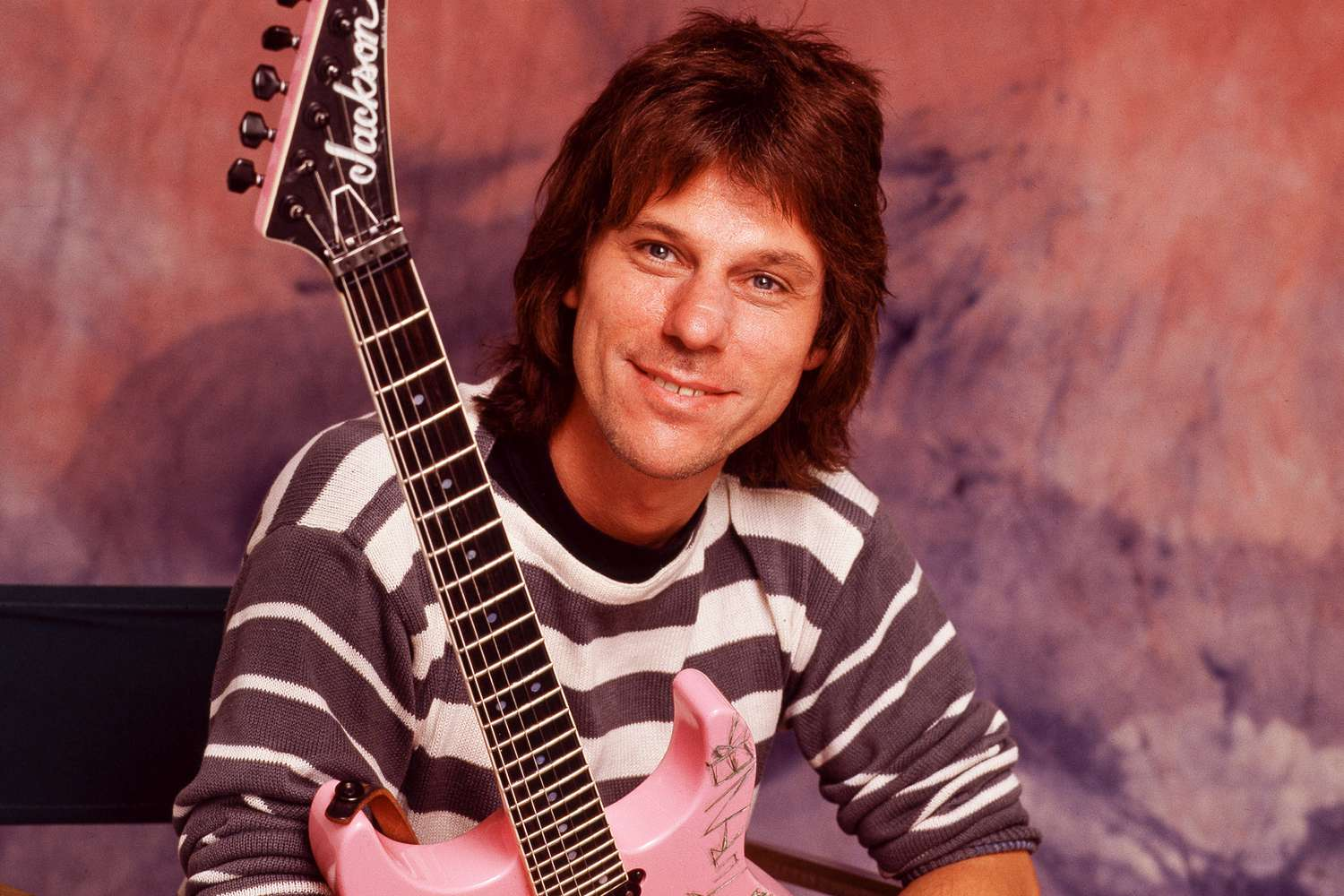
Jeff Beck pushed the boundaries of guitar playing with his innovative use of tone, dynamics, and phrasing. Tracks like “Cause We’ve Ended as Lovers” and “Beck’s Bolero” highlight his ability to seamlessly blend rock, blues, and jazz influences. Beck’s constant evolution and experimentation have earned him a reputation as a true pioneer of the instrument.
8. Stevie Ray Vaughan
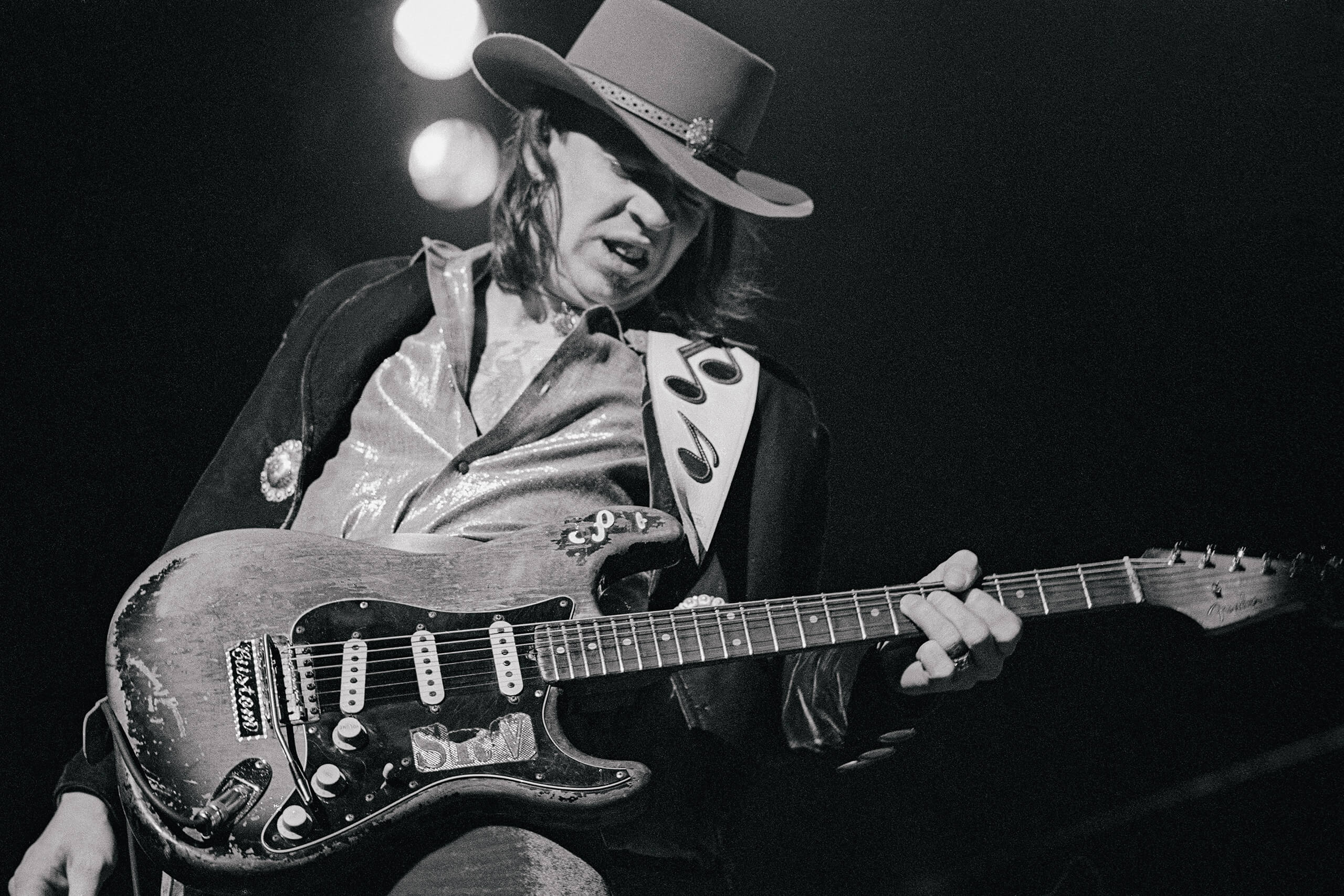
Stevie Ray Vaughan revitalized the blues with his fiery, soul-drenched guitar playing and boundless energy. Tracks like “Pride and Joy” and “Texas Flood” showcase his impeccable technique and emotional intensity. Vaughan’s influence extends far beyond his tragically short career, cementing him as one of the most revered guitarists of all time.
7. Brian May

Brian May crafted Queen’s towering guitar sound with his melodic solos, layered harmonies, and unique tone. Tracks like “Bohemian Rhapsody” and “We Will Rock You” showcase his ability to combine technical brilliance with anthemic power. May’s custom-built “Red Special” guitar and orchestral approach have left an indelible mark on rock music.
6. Tony Iommi

Tony Iommi defined the sound of heavy metal as the guitarist for Black Sabbath. His dark, crushing riffs on tracks like “Iron Man” and “Paranoid” became the blueprint for the genre. Despite losing the tips of two fingers, Iommi adapted his playing to create a style that remains unparalleled in its influence and power.
5. Eric Clapton
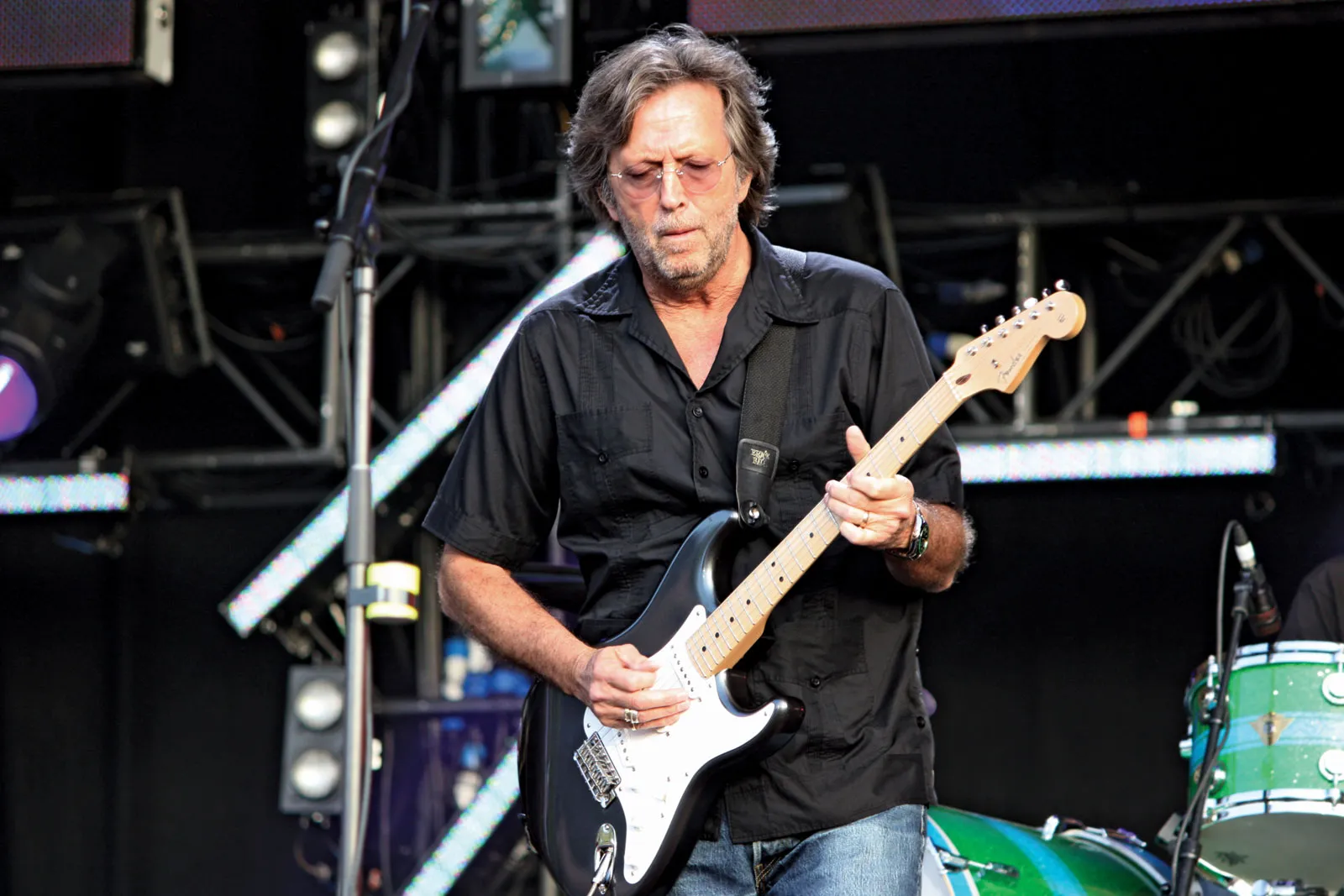
Eric Clapton earned his nickname “Slowhand” with his soulful, emotive playing and virtuosic blues phrasing. Tracks like “Layla,” “Tears in Heaven,” and “Crossroads” exemplify his ability to blend technical mastery with heartfelt emotion. Clapton’s career spans decades, cementing him as one of the most influential and celebrated guitarists in history.
4. Eddie Van Halen
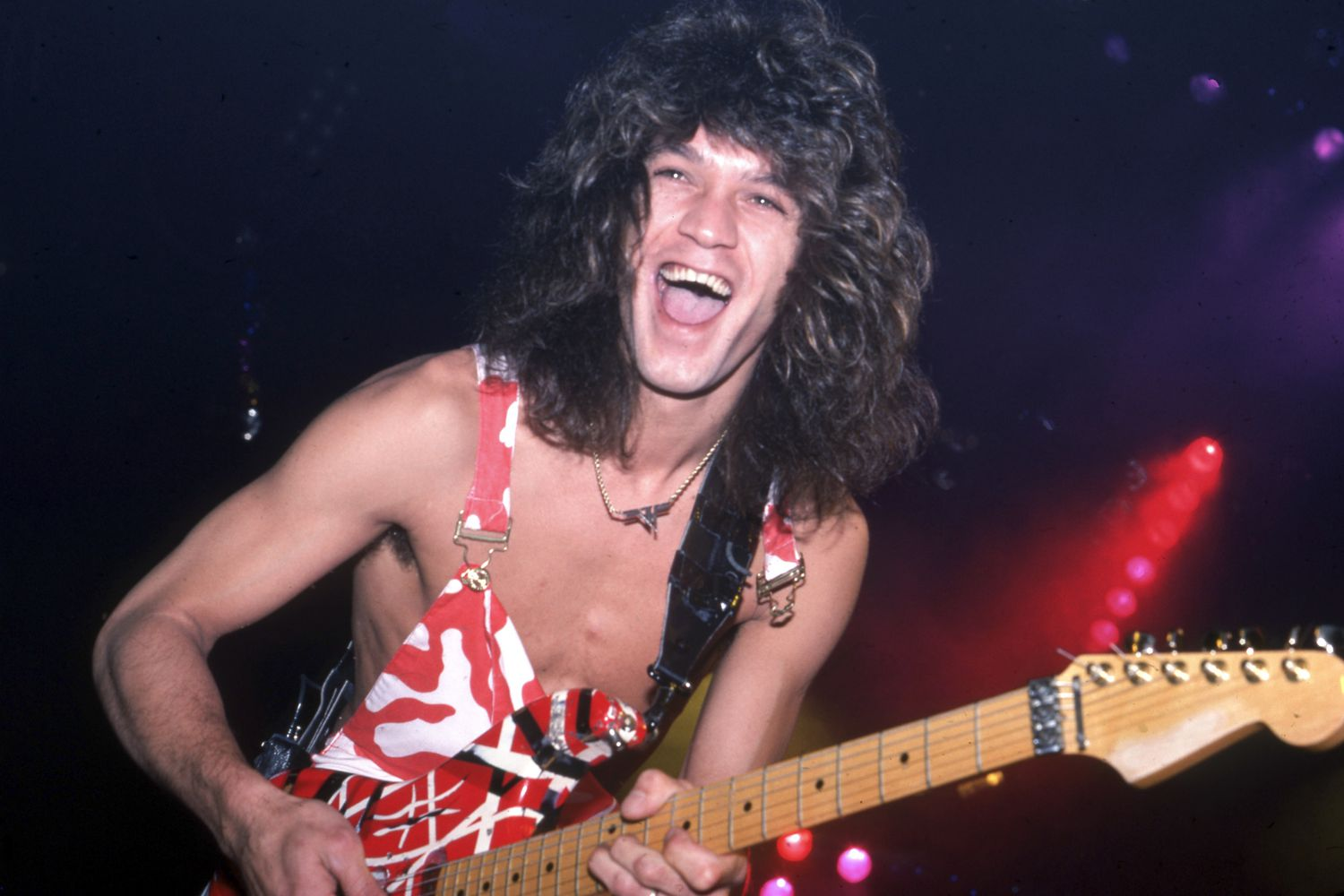
Eddie Van Halen revolutionized rock guitar with his groundbreaking use of tapping, harmonics, and whammy bar techniques. Tracks like “Eruption” and “Panama” showcase his technical brilliance and explosive creativity. Van Halen’s innovative approach to the guitar reshaped rock music and inspired countless musicians to push the instrument’s boundaries.
3. Jimmy Page
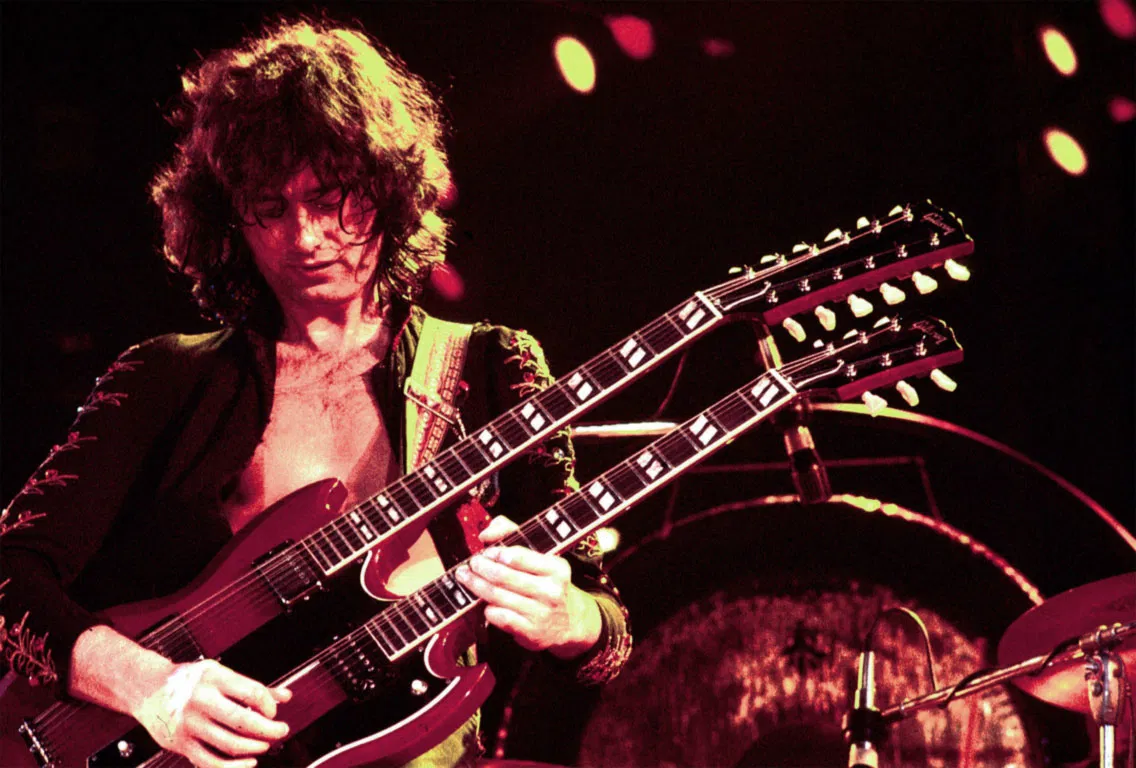
Jimmy Page fused blues, rock, and folk into Led Zeppelin’s groundbreaking sound, creating some of the most iconic riffs and solos in rock history. Tracks like “Stairway to Heaven” and “Whole Lotta Love” highlight his ability to combine technical precision with raw emotion. Page’s work as a guitarist, songwriter, and producer solidified his status as one of rock’s all-time greats.
2. David Gilmour
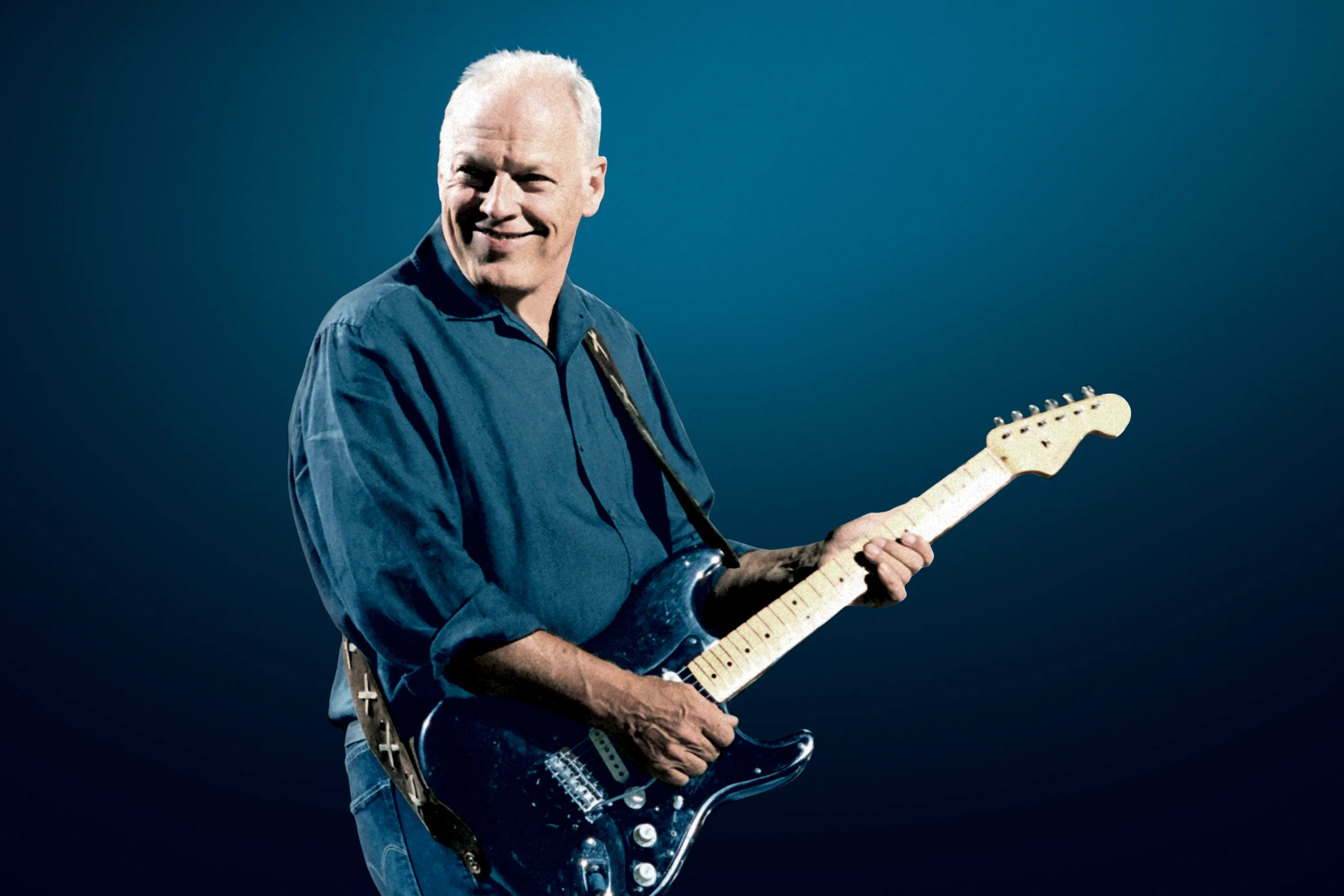
David Gilmour brought unparalleled emotional depth to Pink Floyd’s music with his soaring, melodic solos and atmospheric playing. Tracks like “Comfortably Numb” and “Shine On You Crazy Diamond” exemplify his ability to evoke profound emotion with every note. Gilmour’s tasteful, expressive style has influenced countless guitarists across genres.
1. Jimi Hendrix
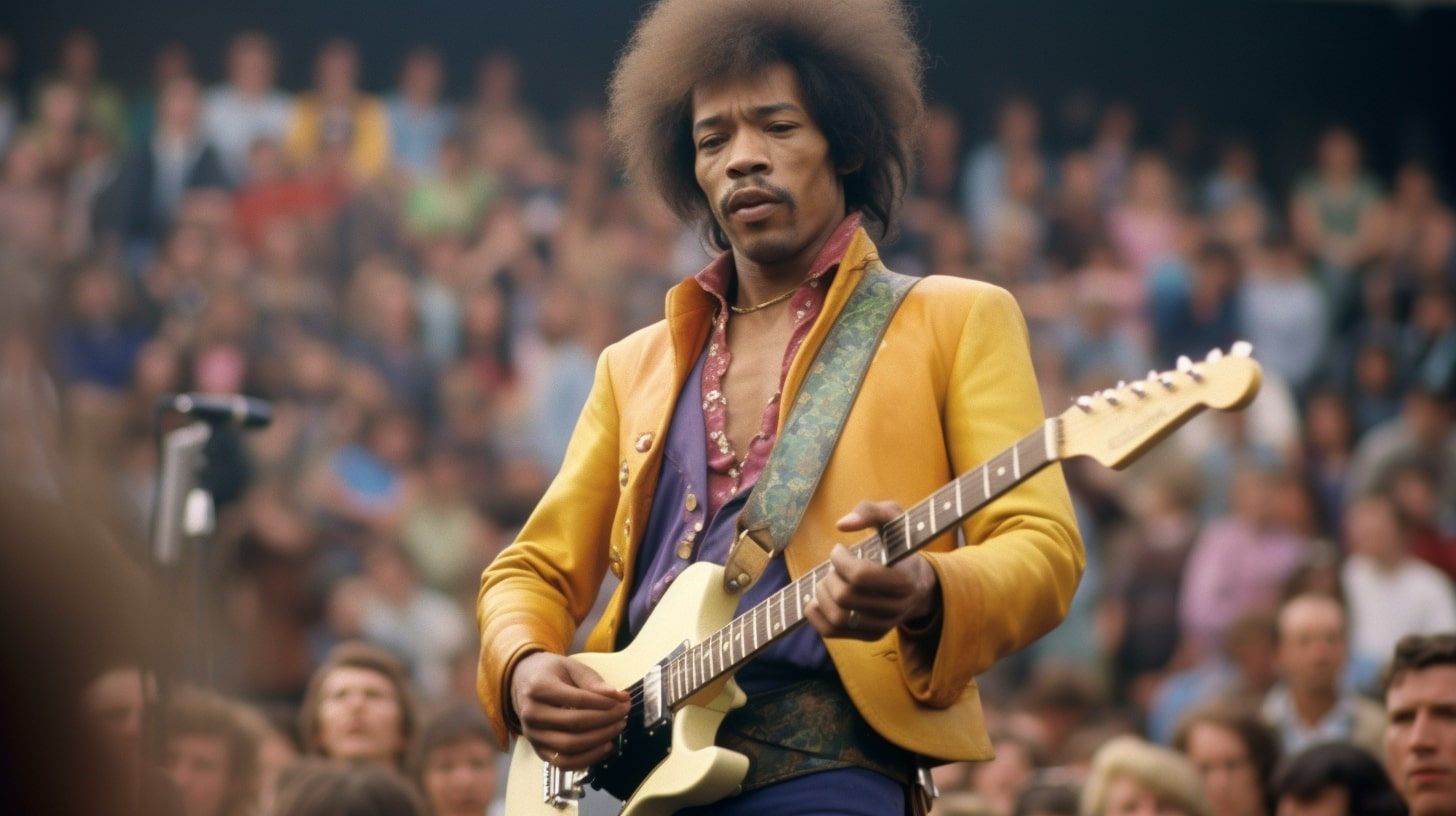
Jimi Hendrix transformed the guitar with his revolutionary techniques, explosive creativity, and unmatched stage presence. Tracks like “Purple Haze,” “Voodoo Child (Slight Return),” and “All Along the Watchtower” highlight his mastery of tone, feedback, and improvisation. Hendrix’s groundbreaking contributions to rock and blues guitar set a new standard and continue to inspire musicians worldwide.




